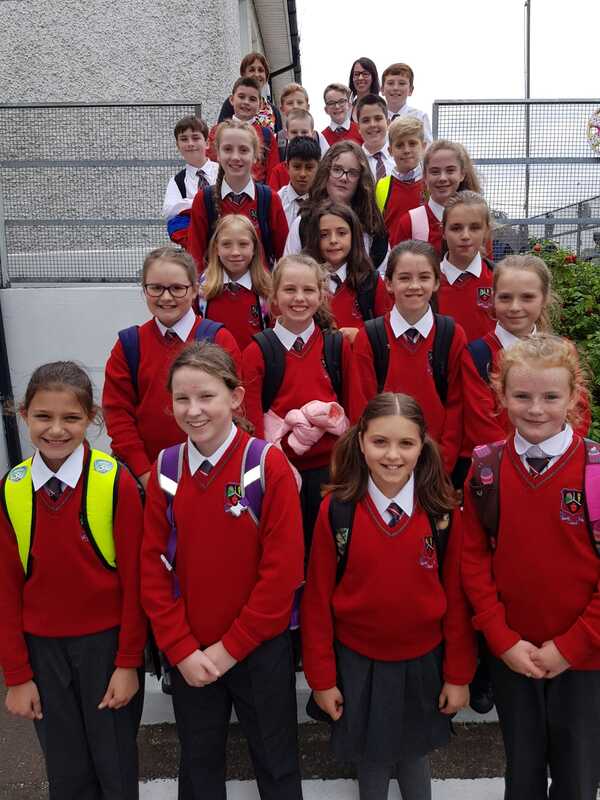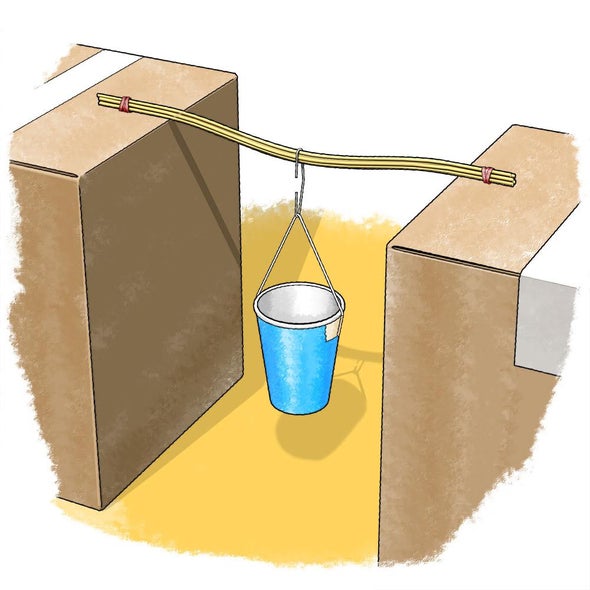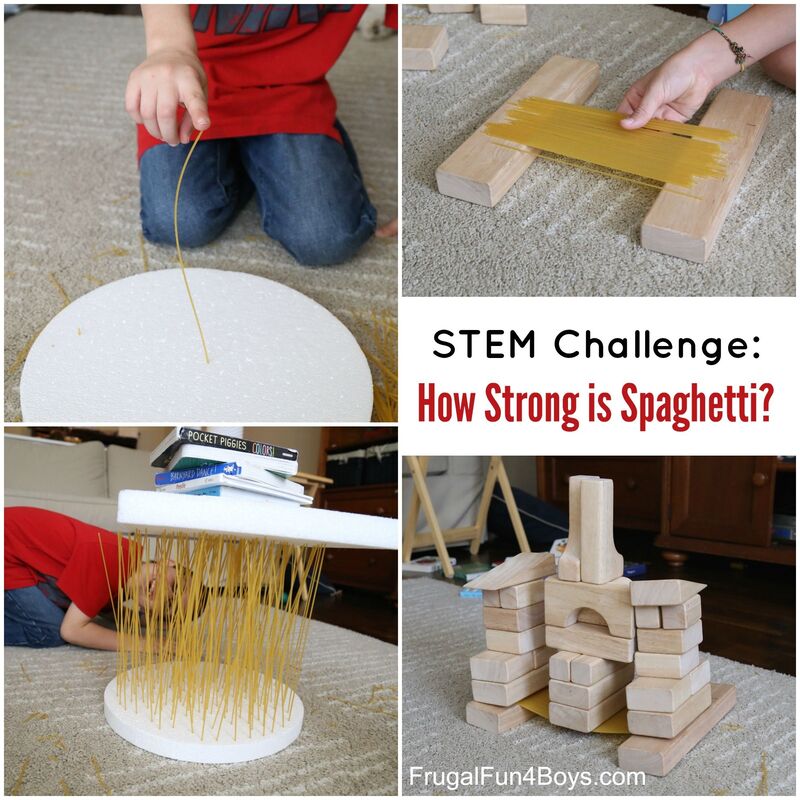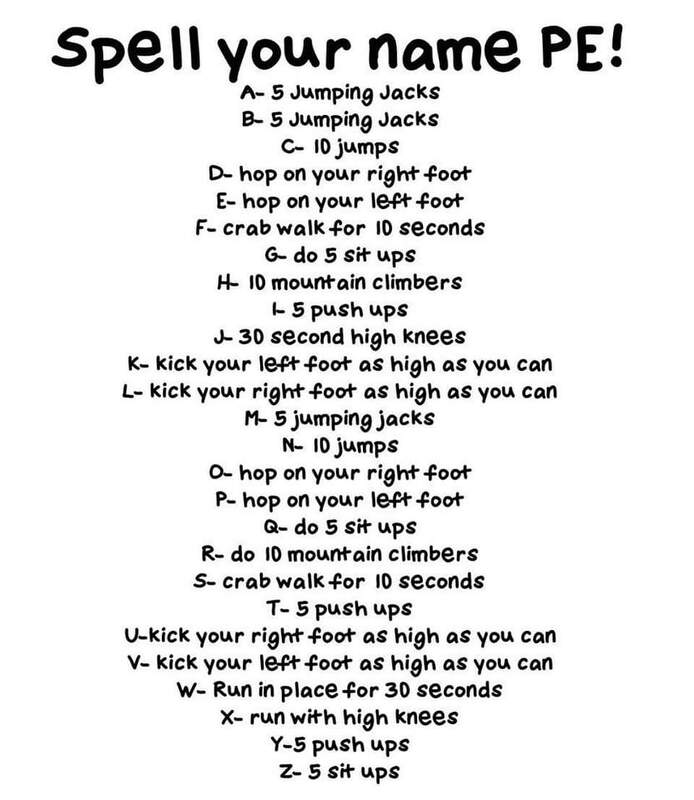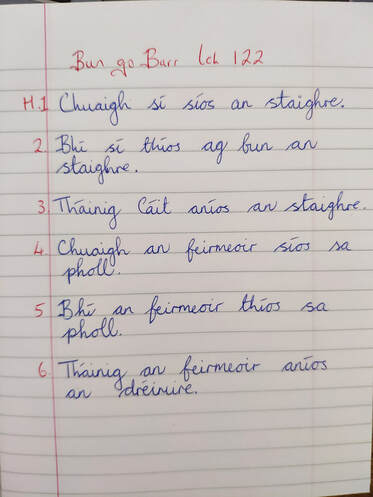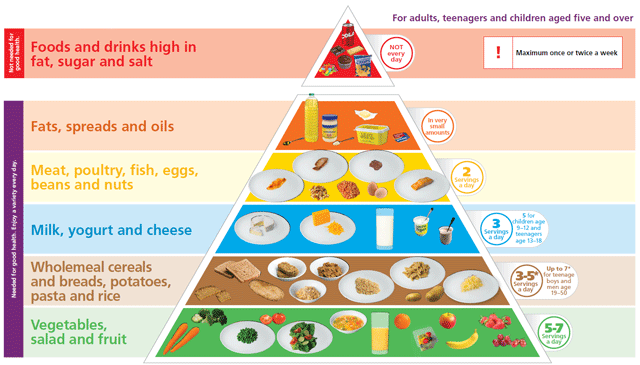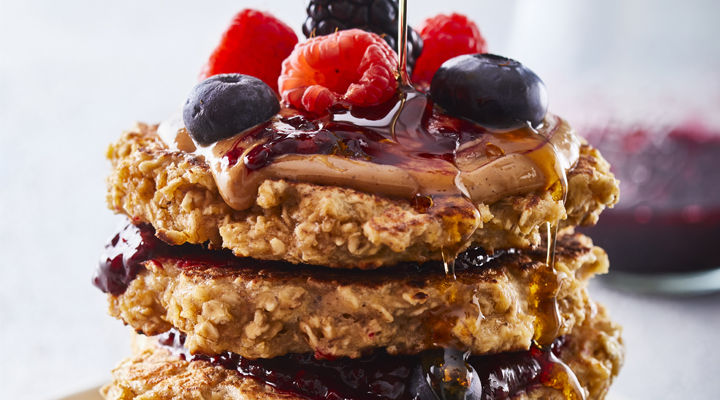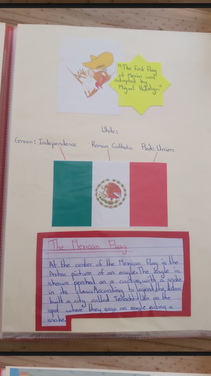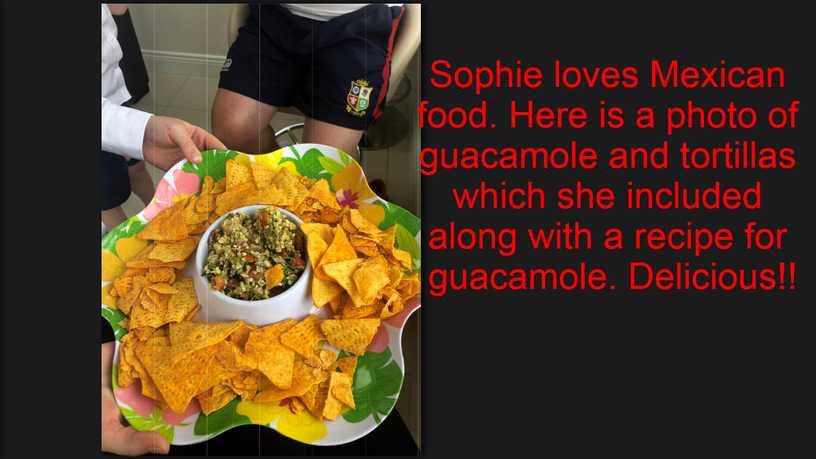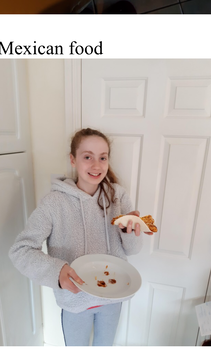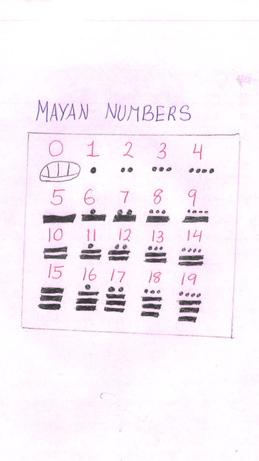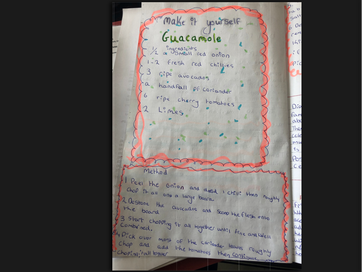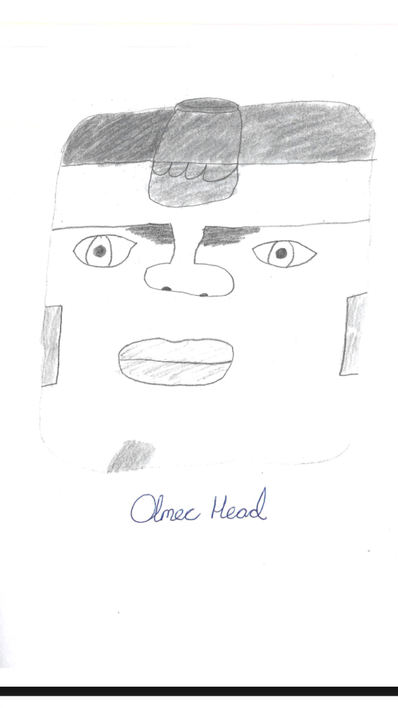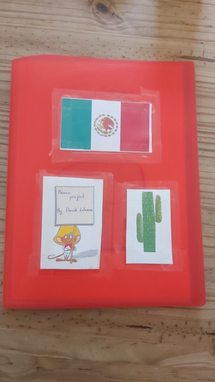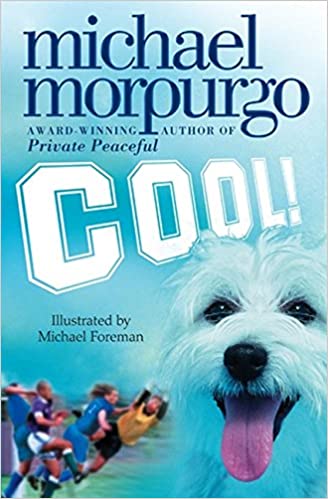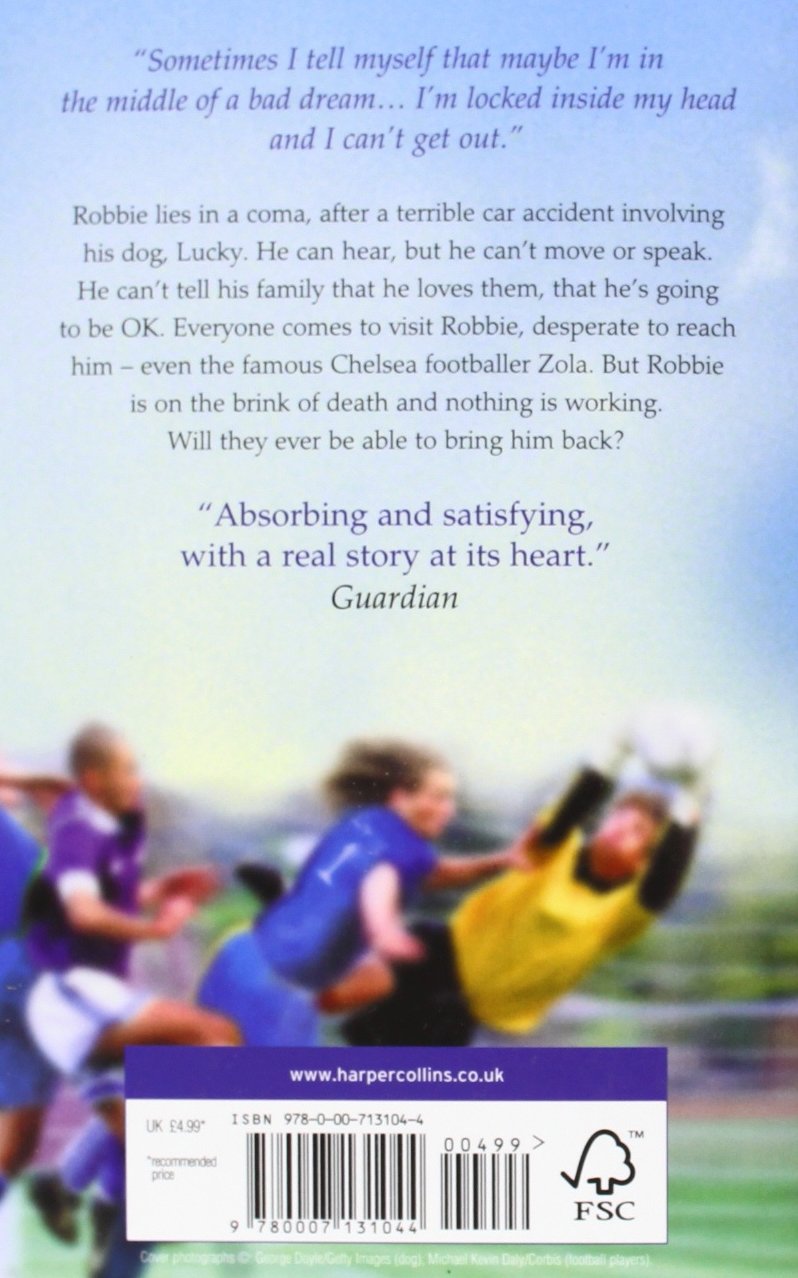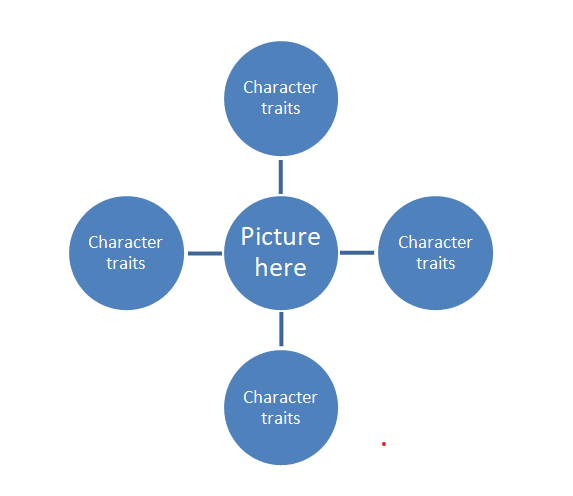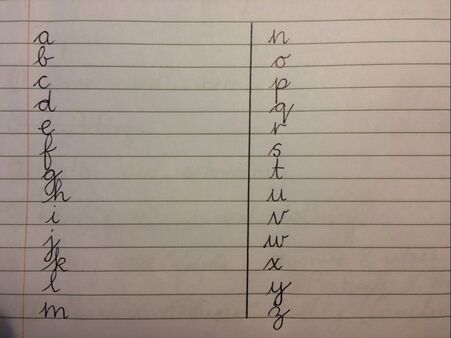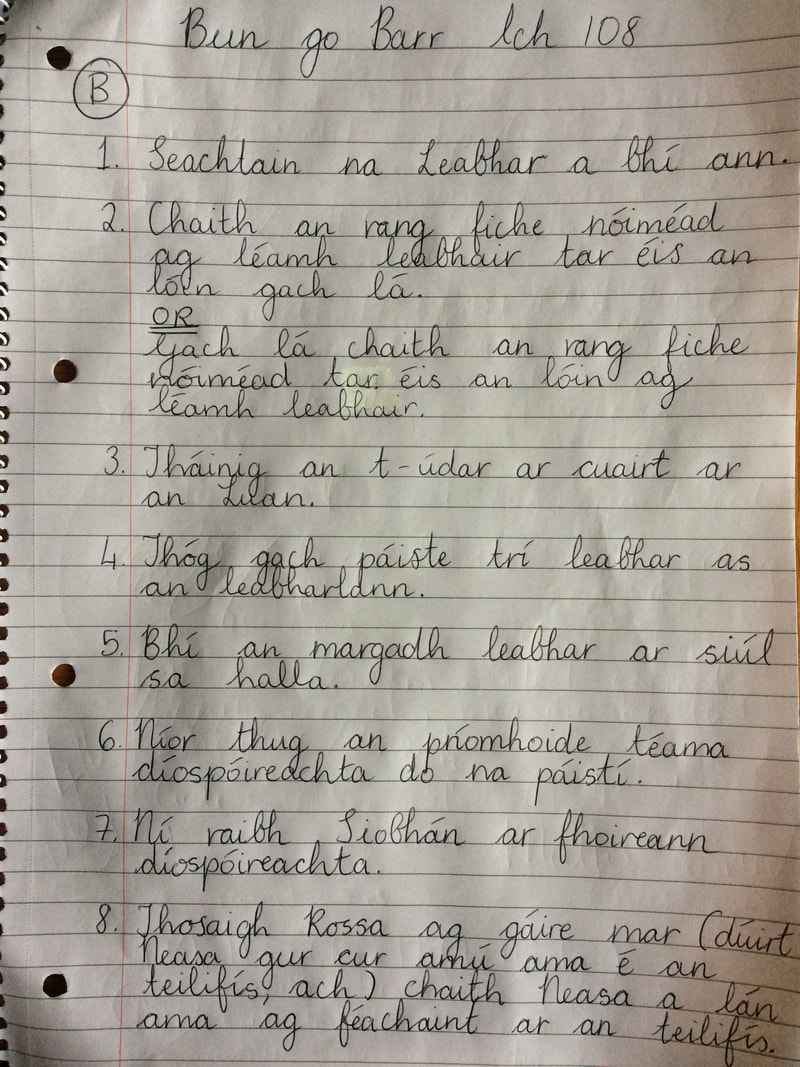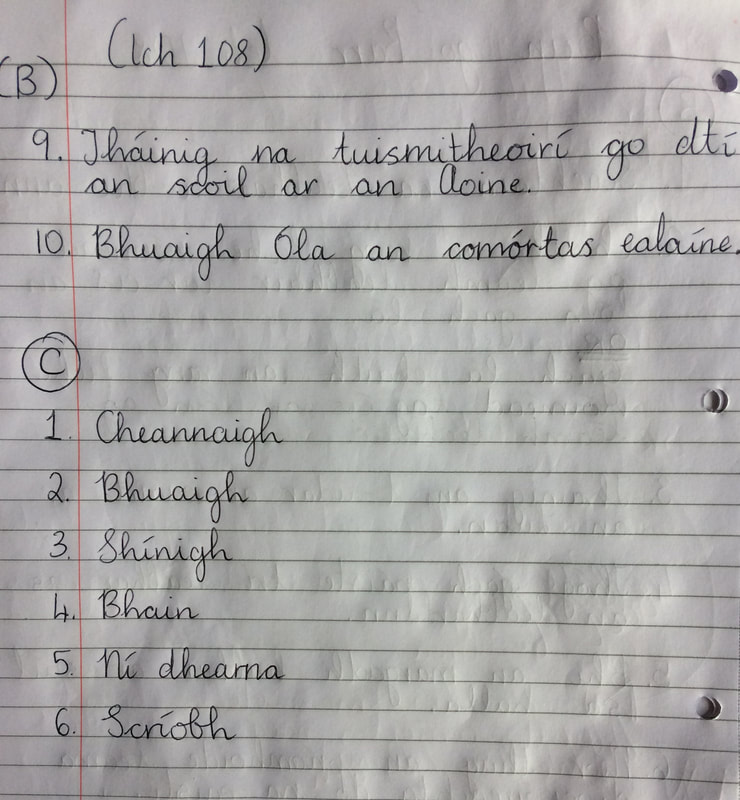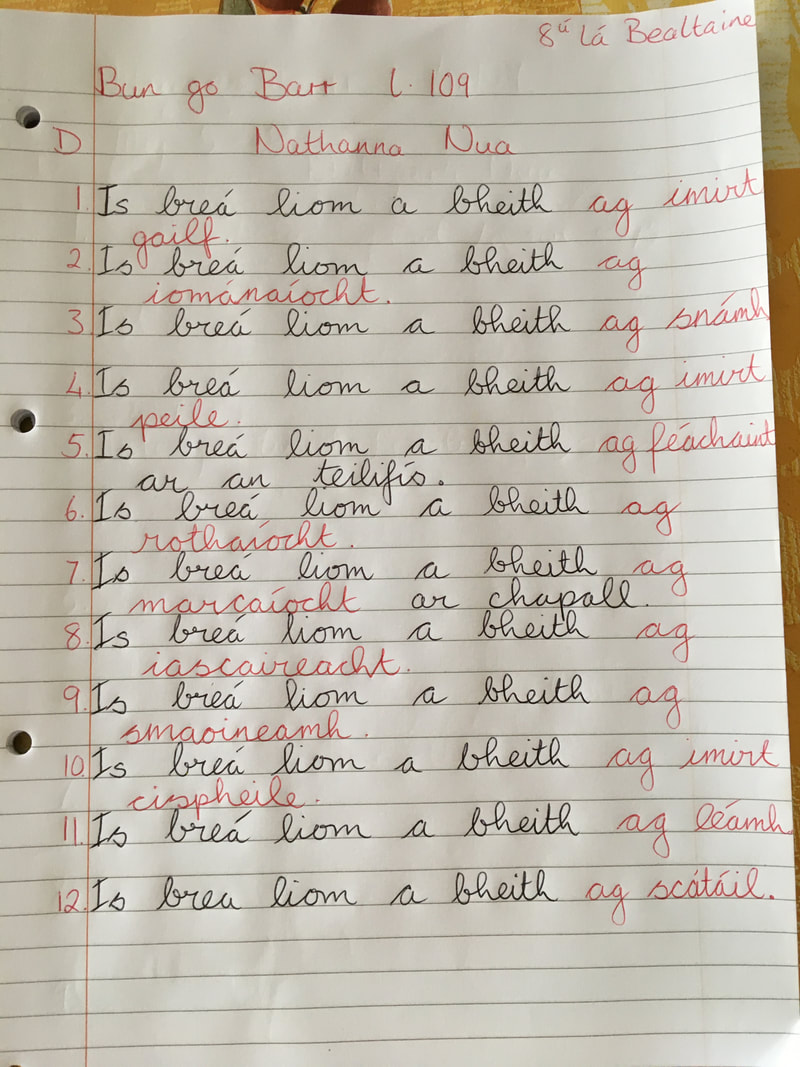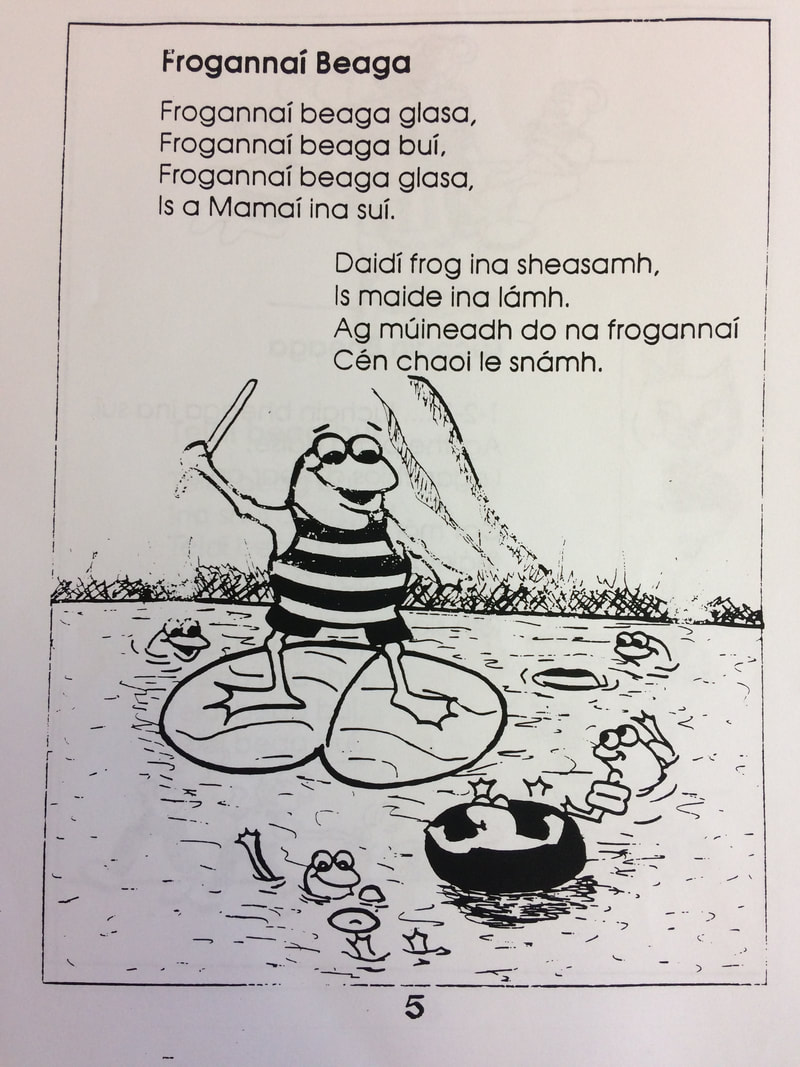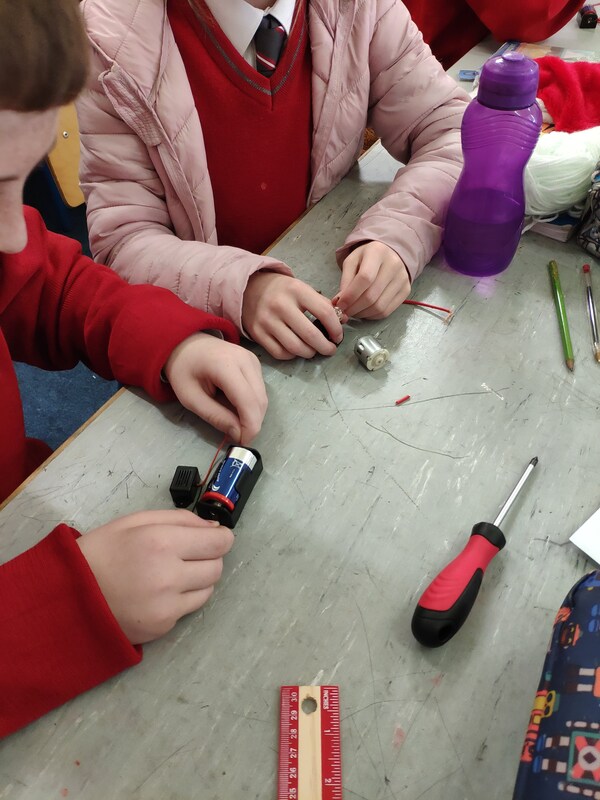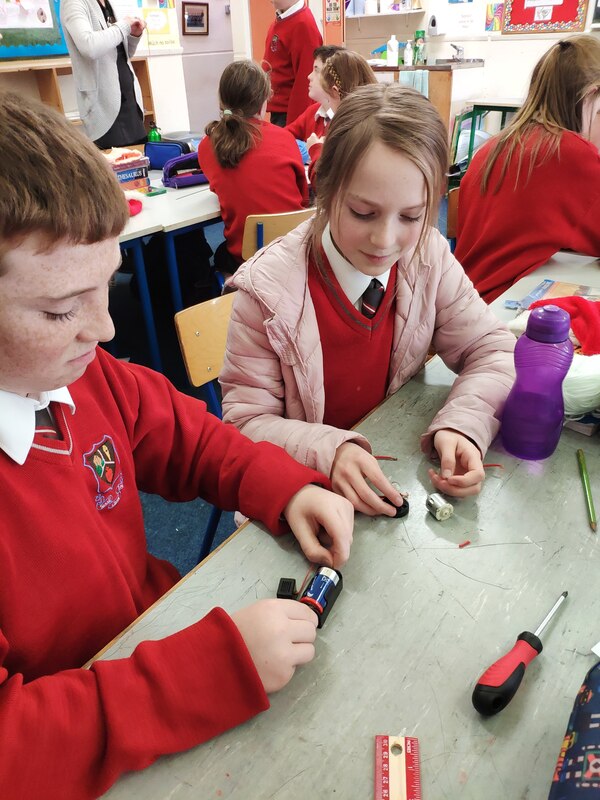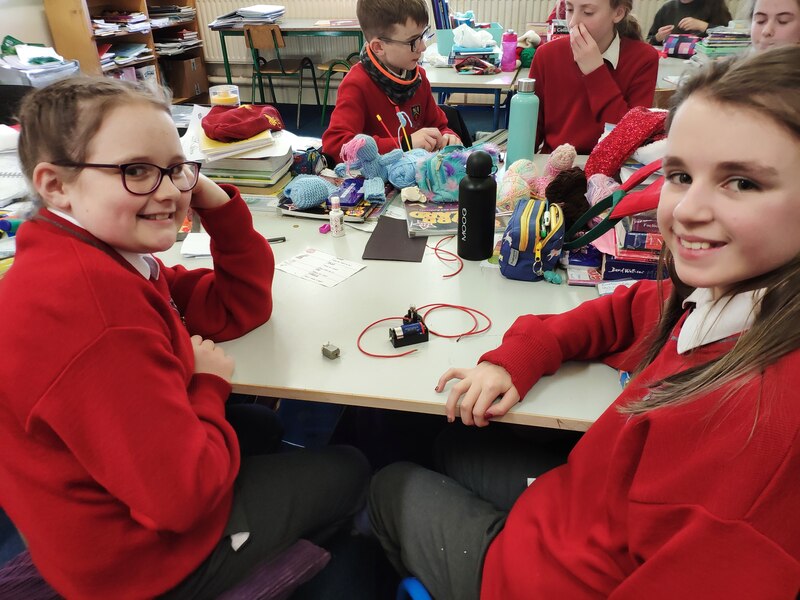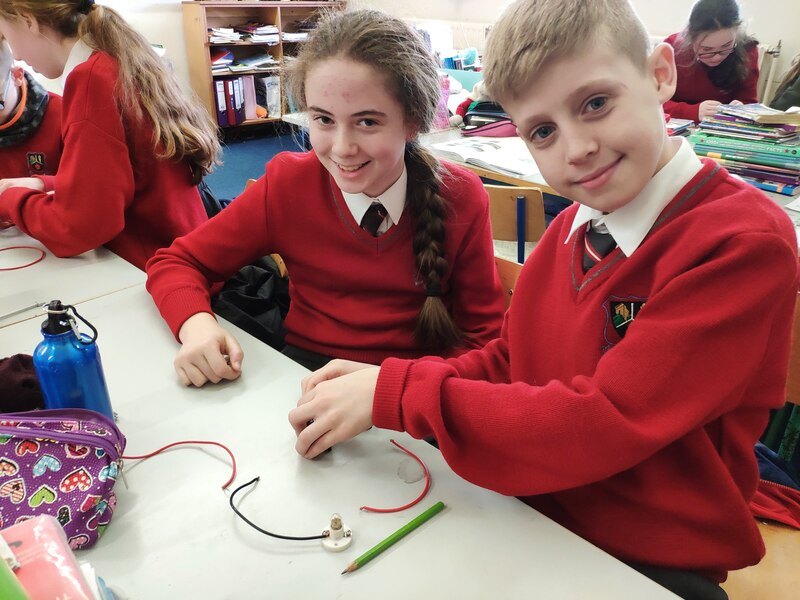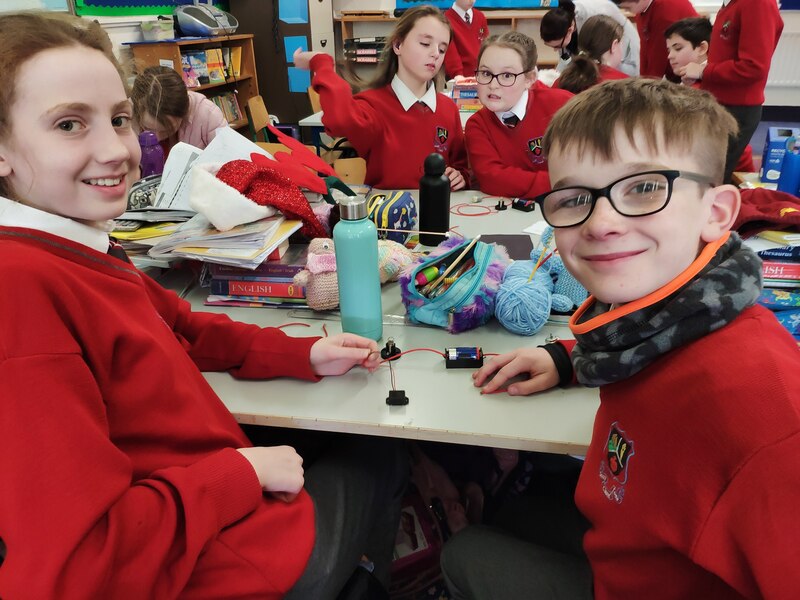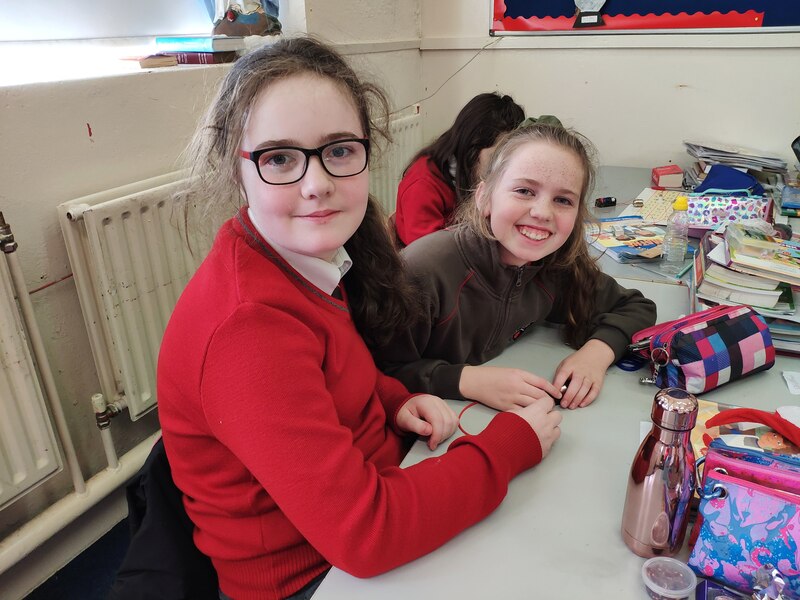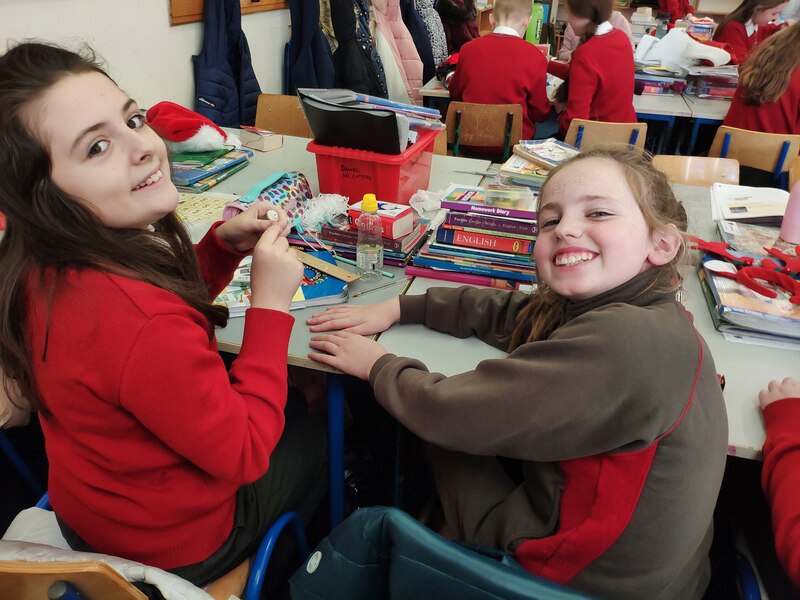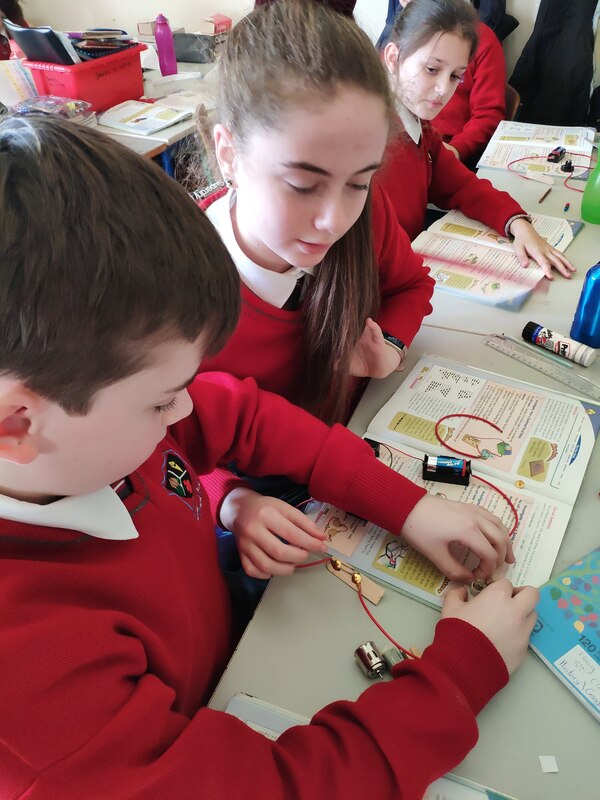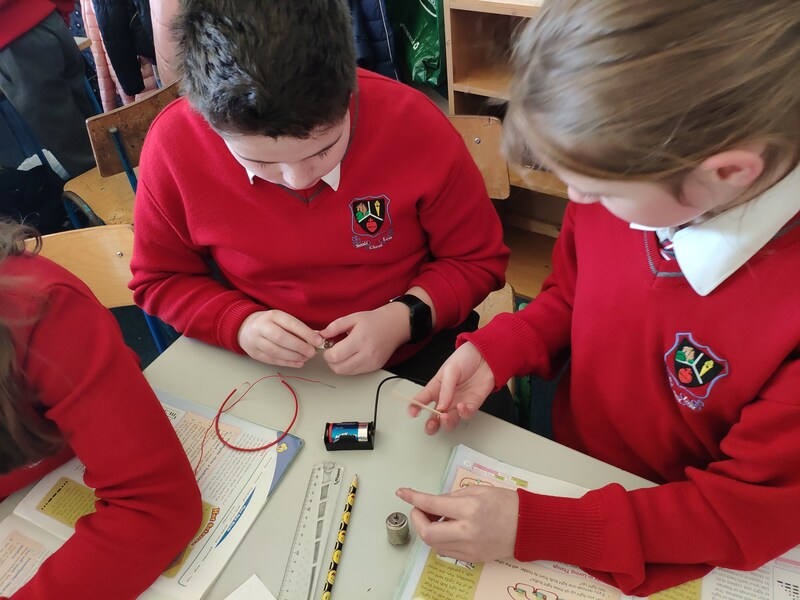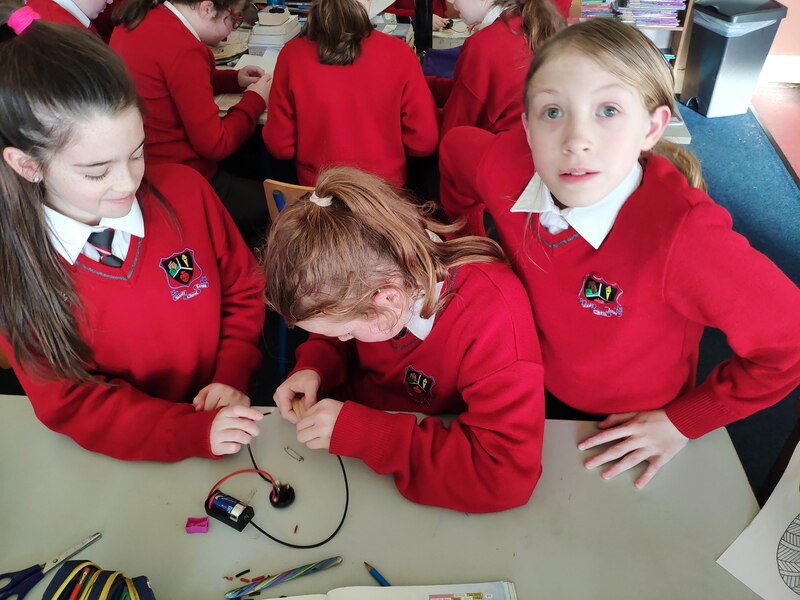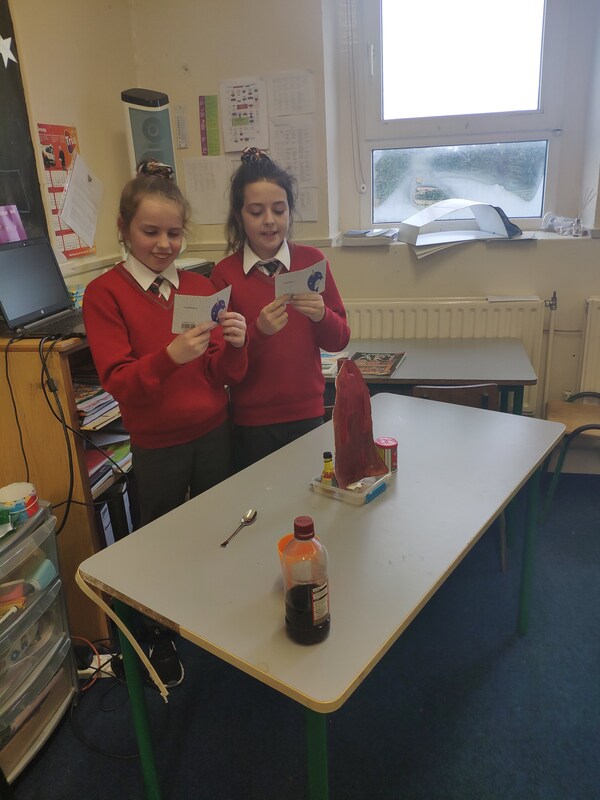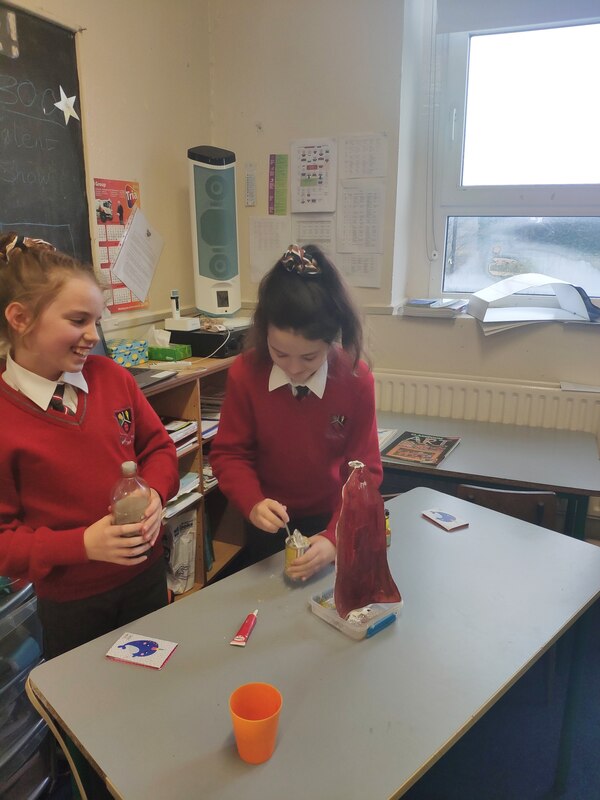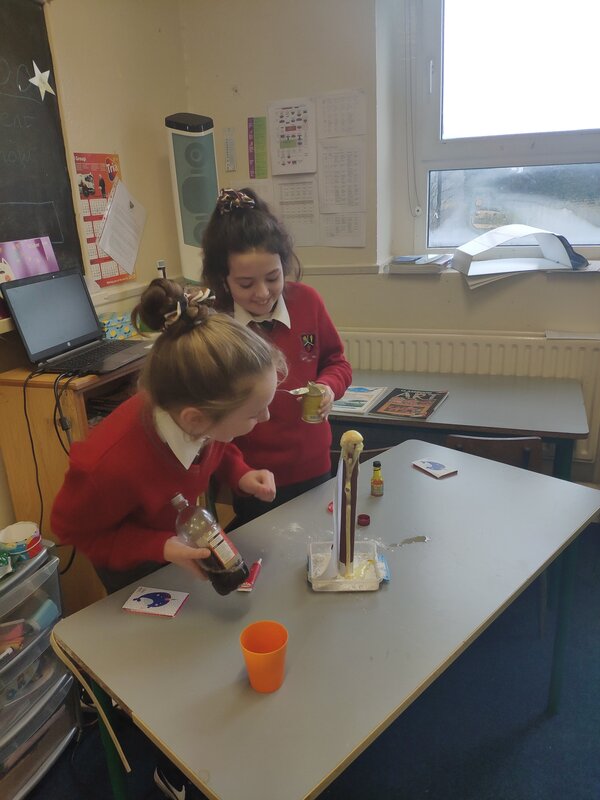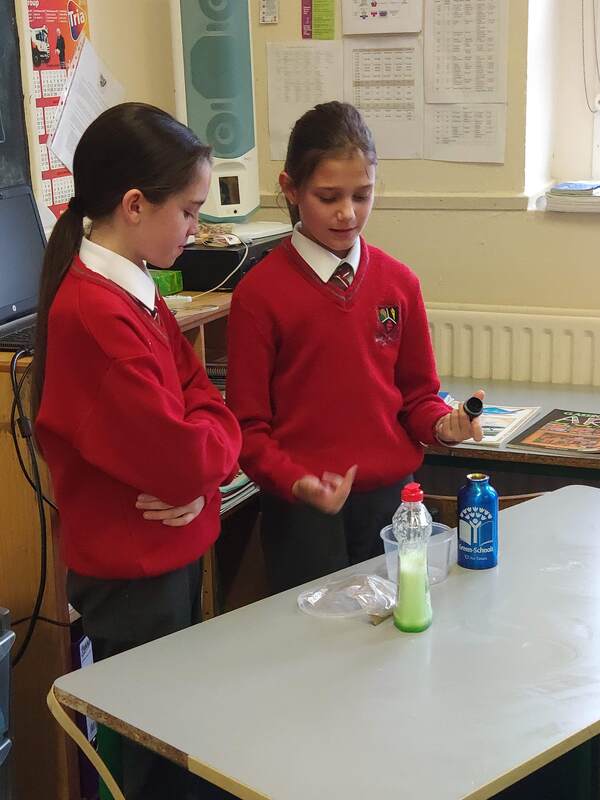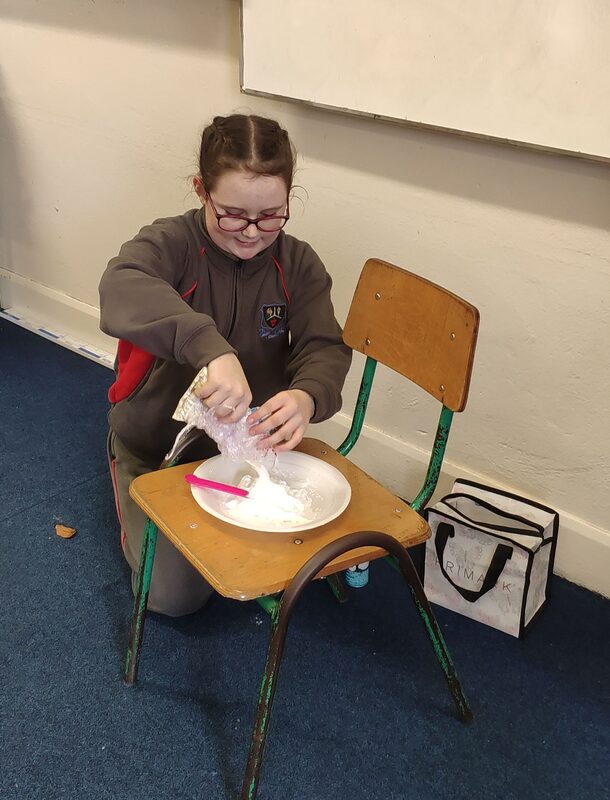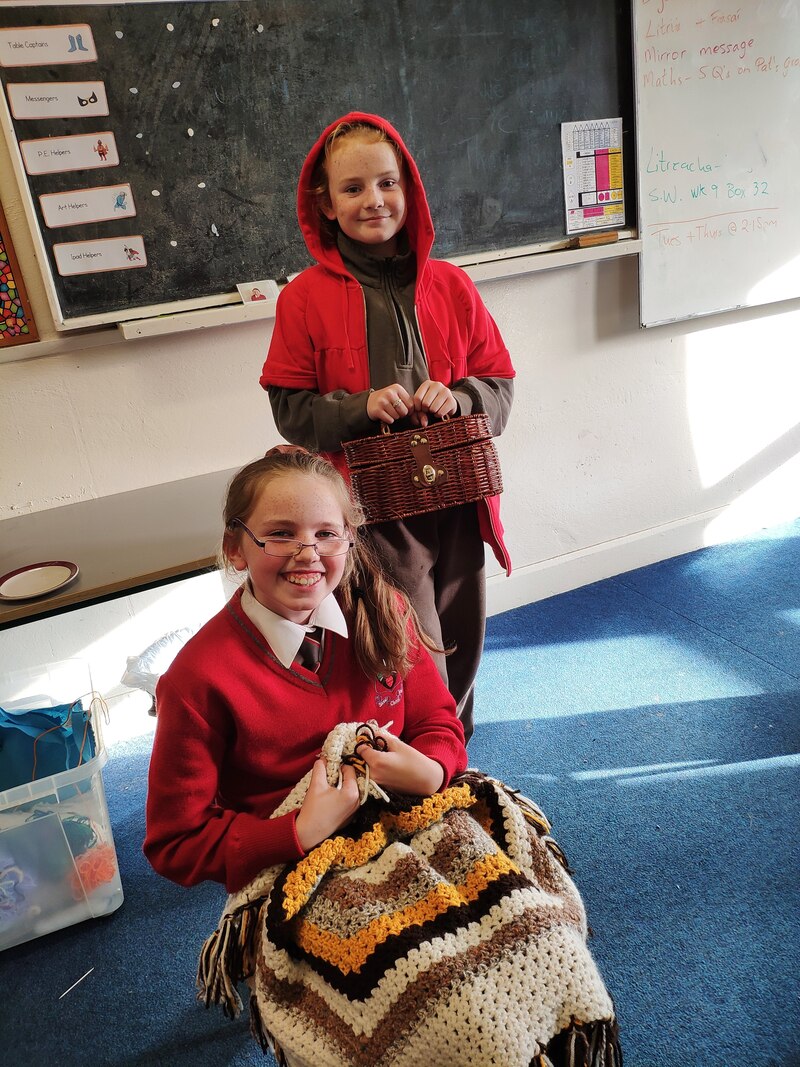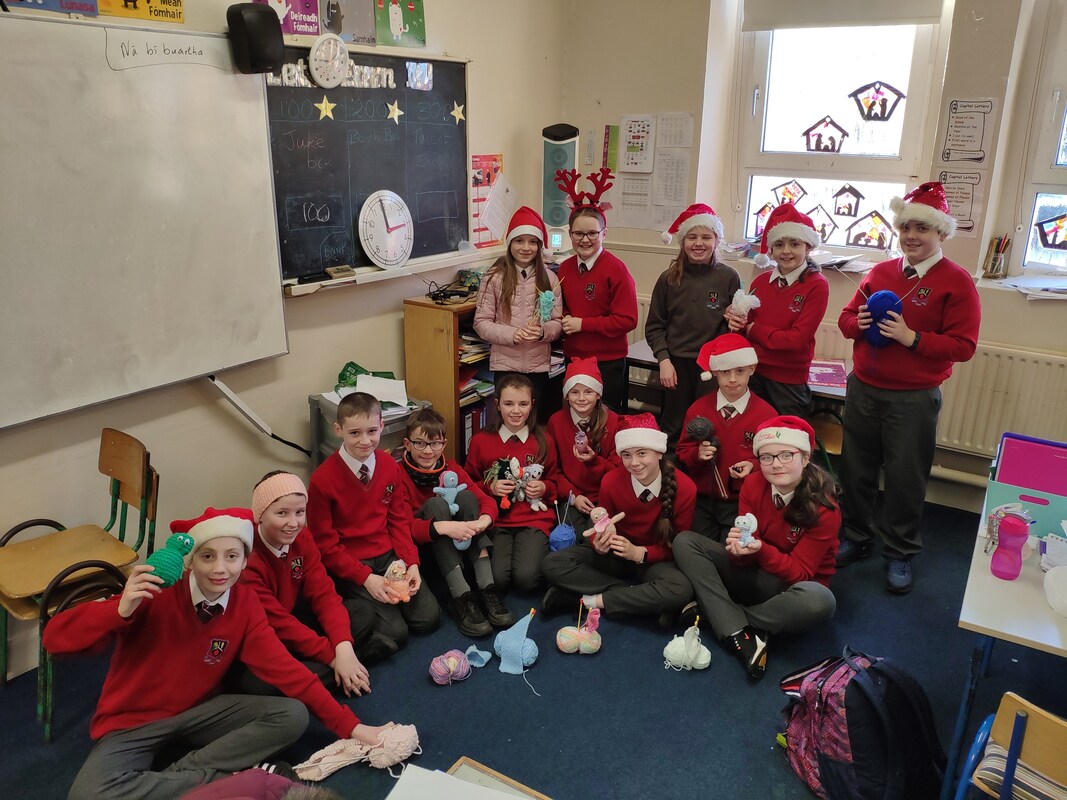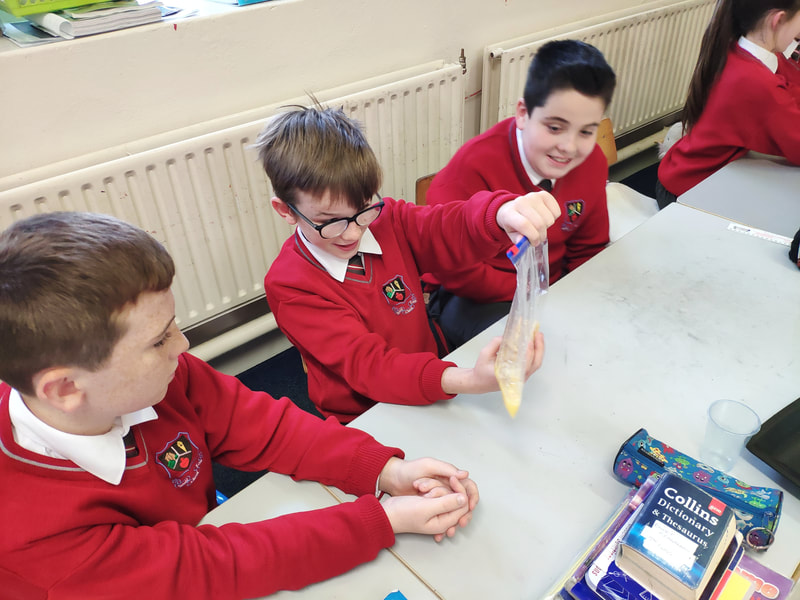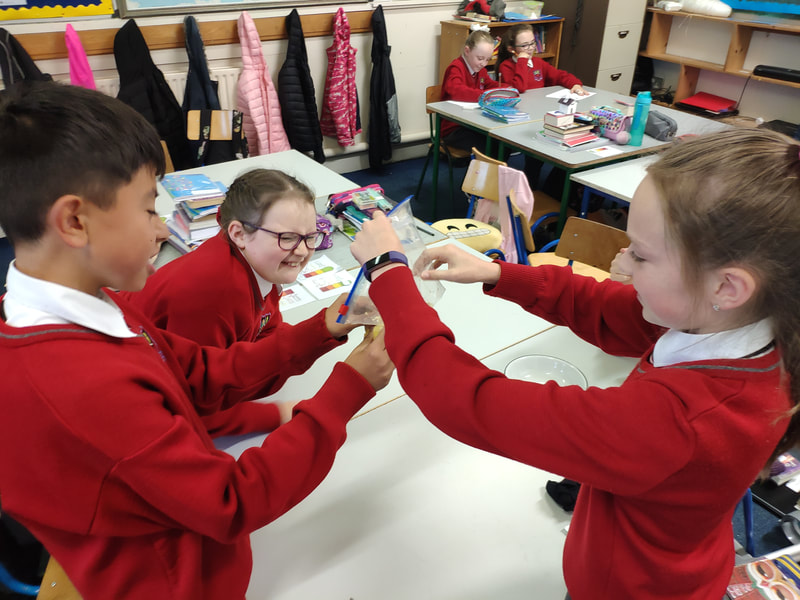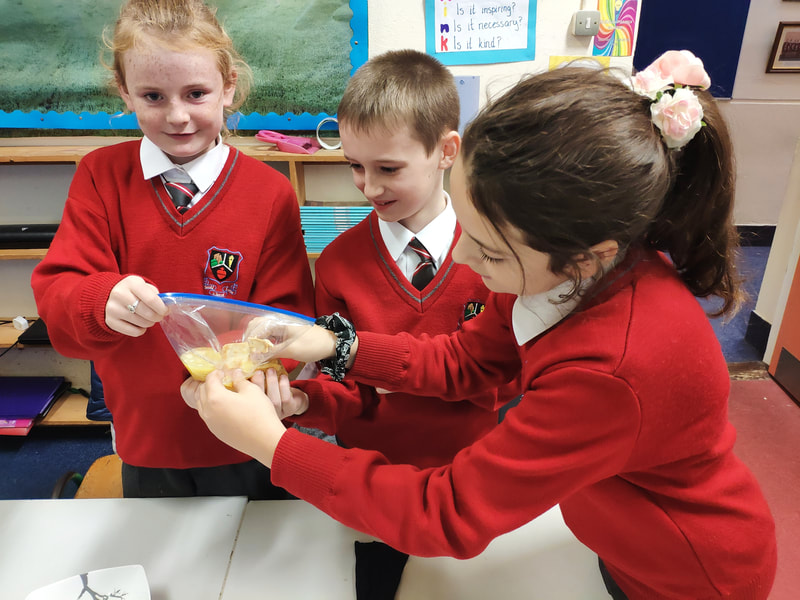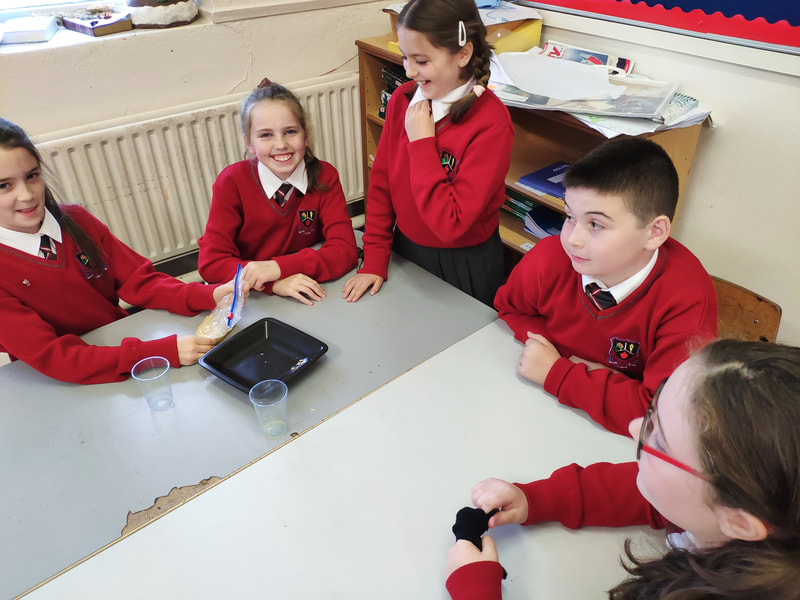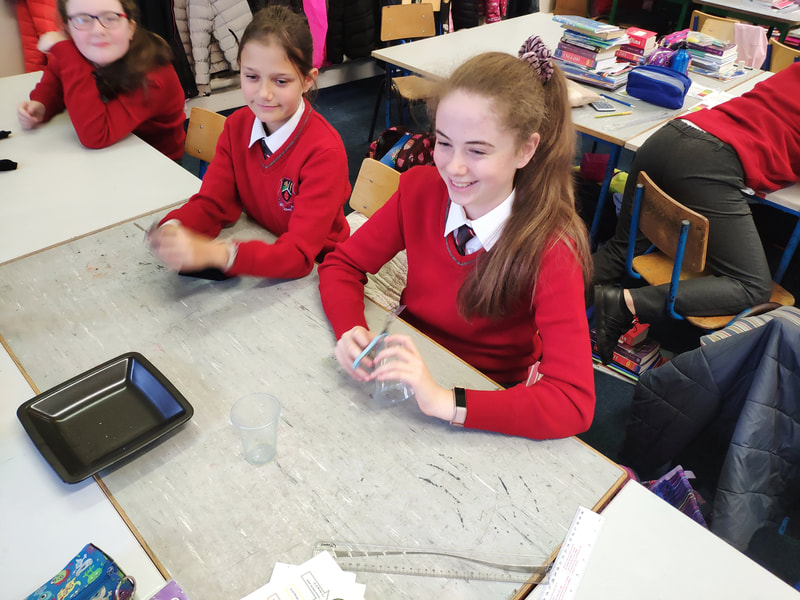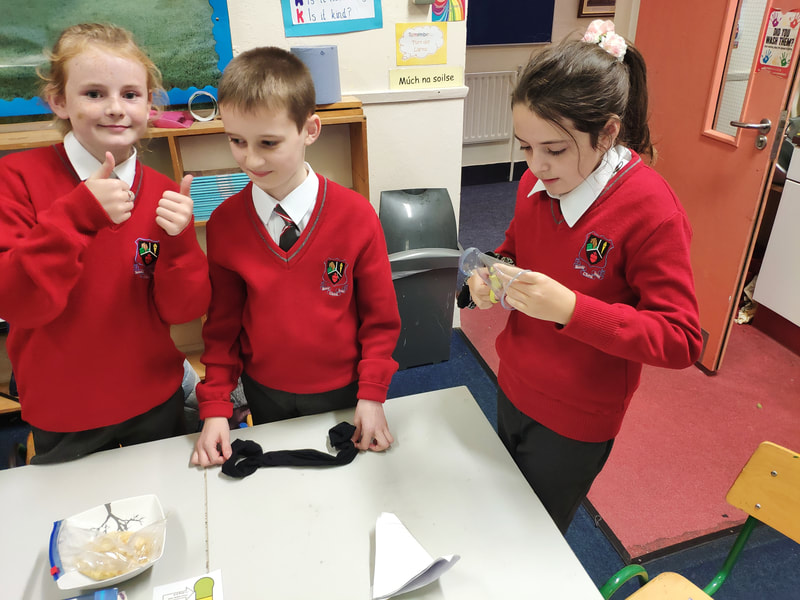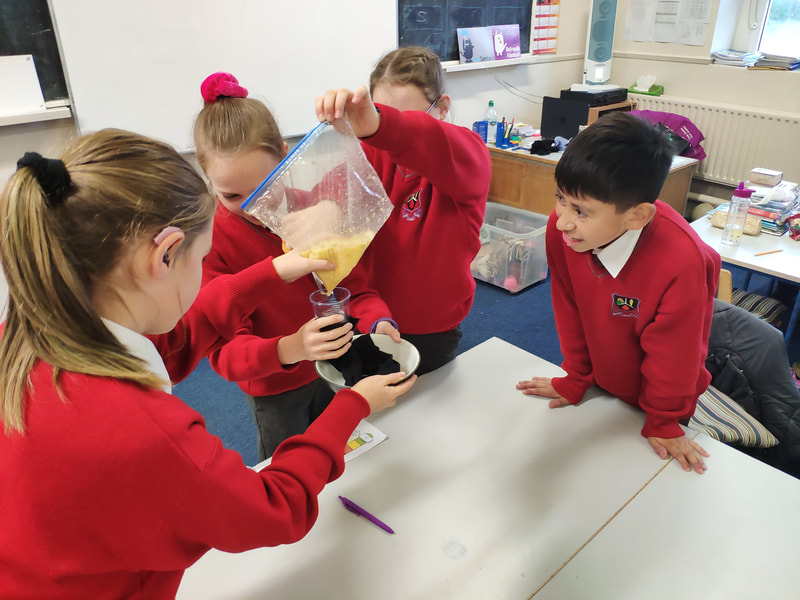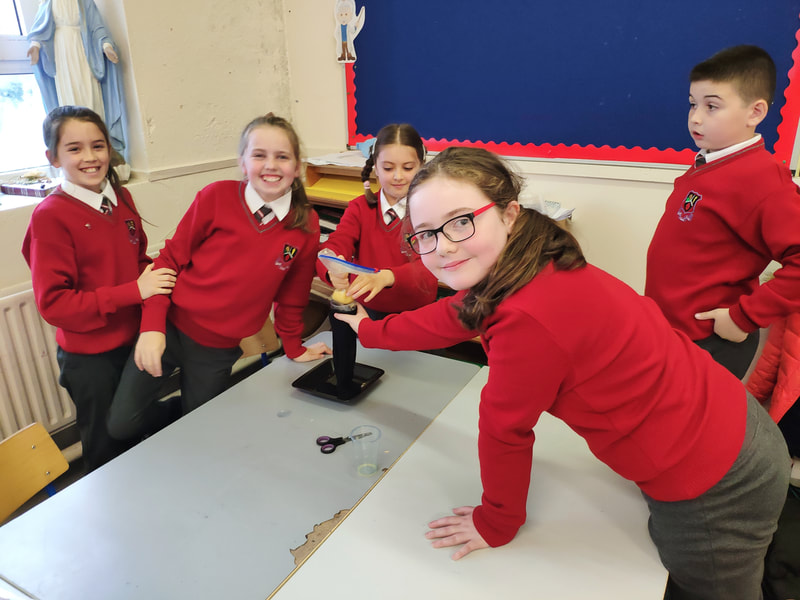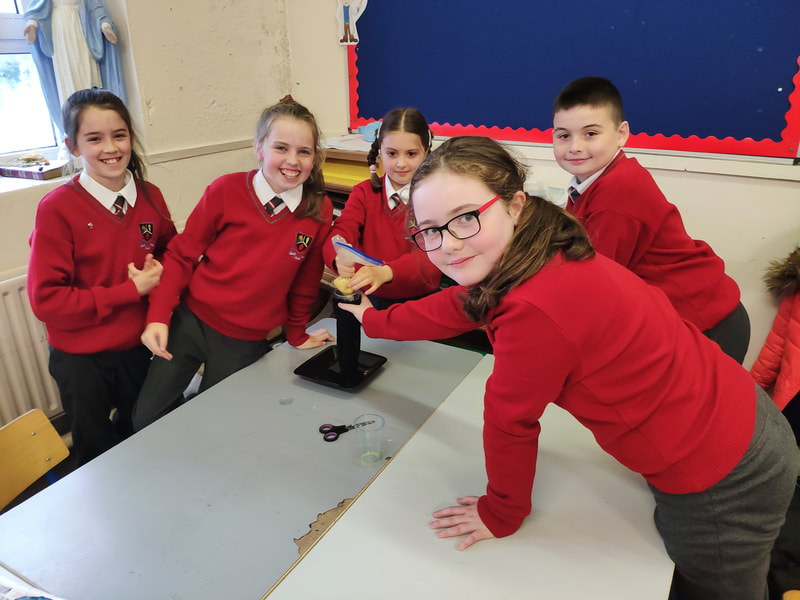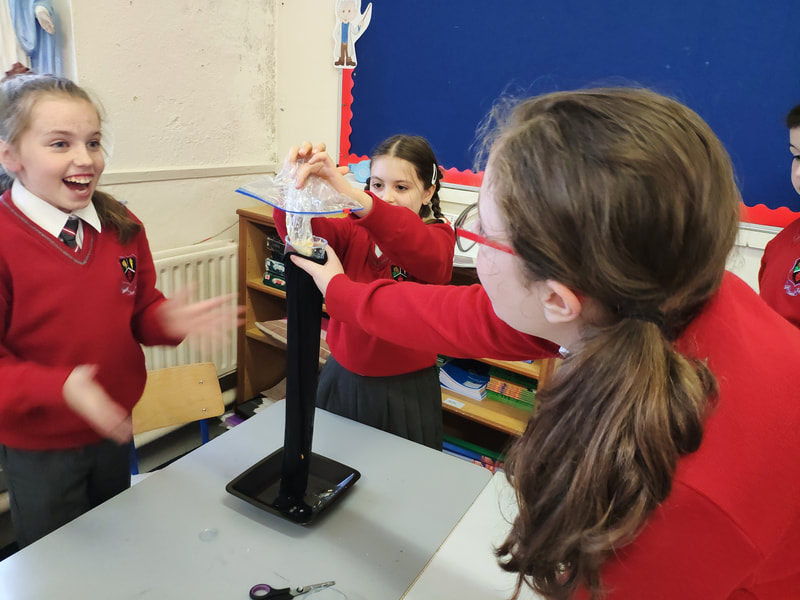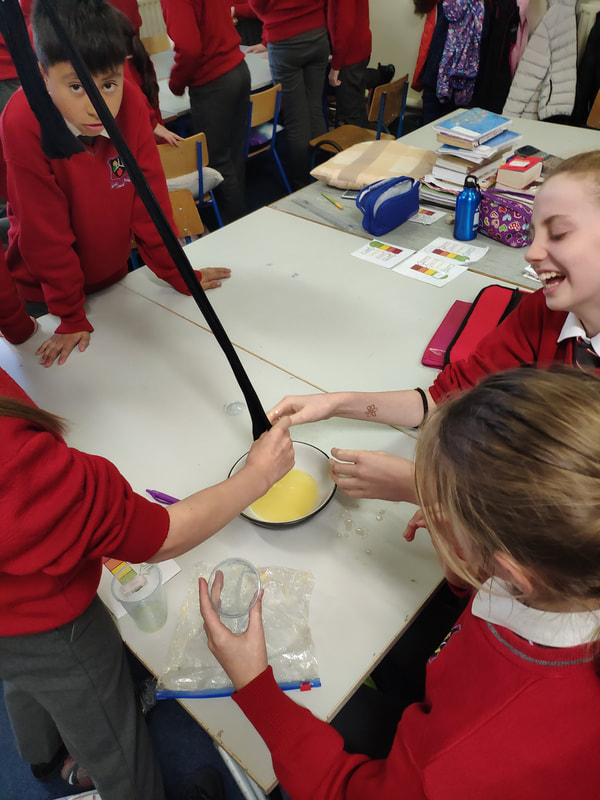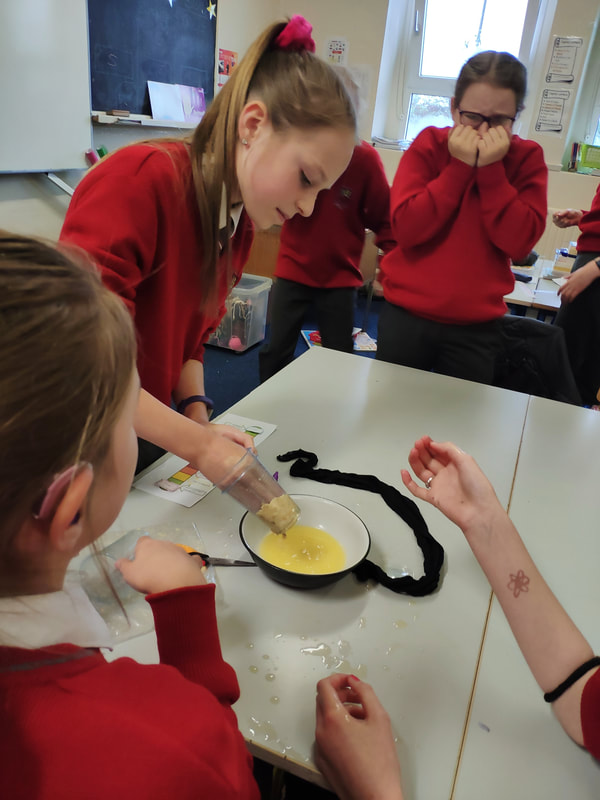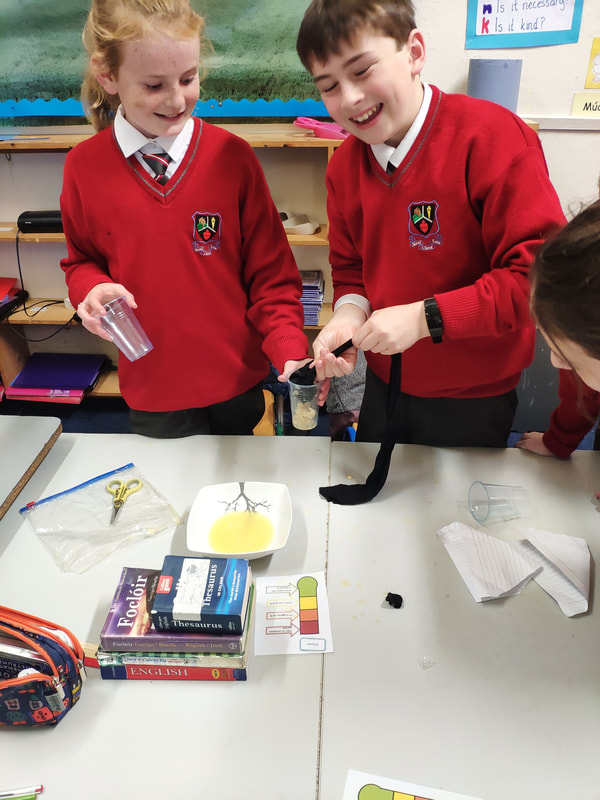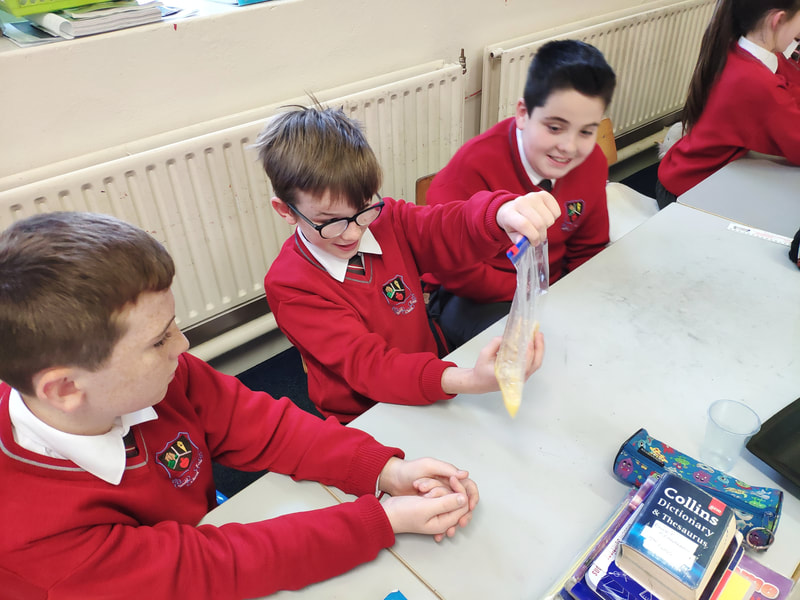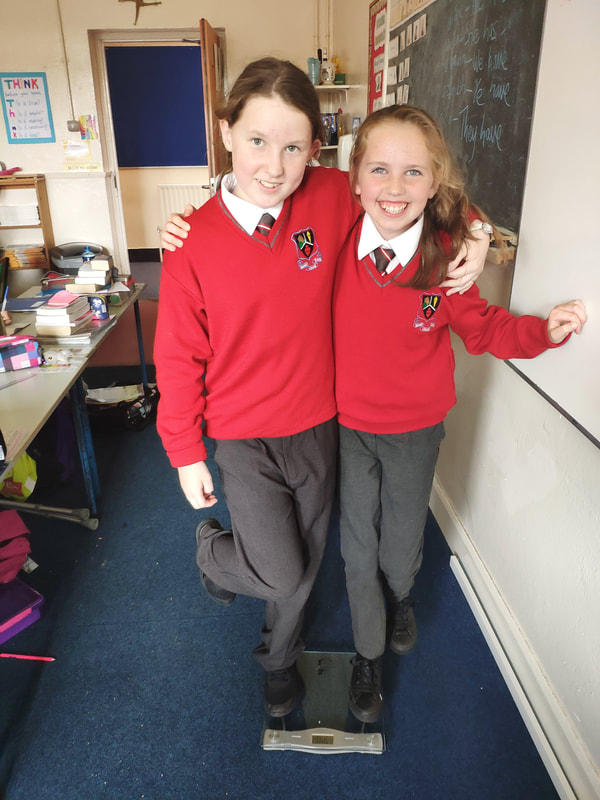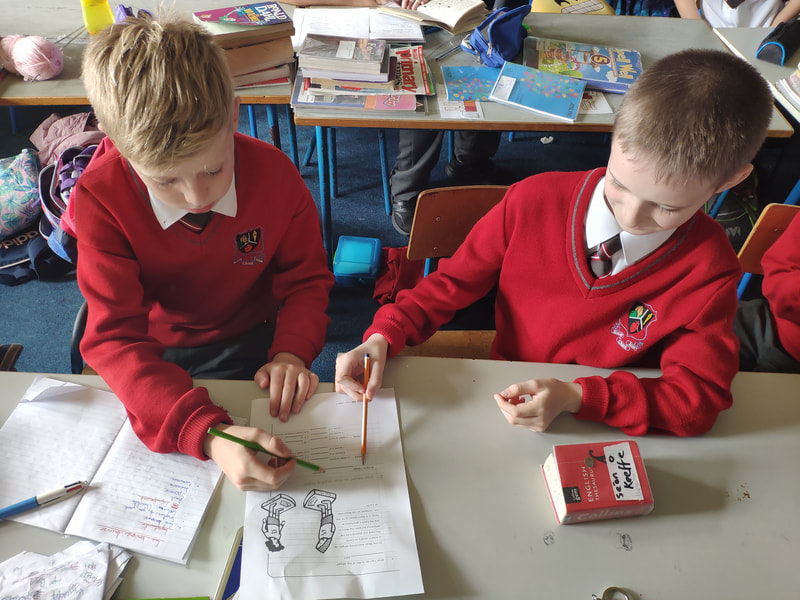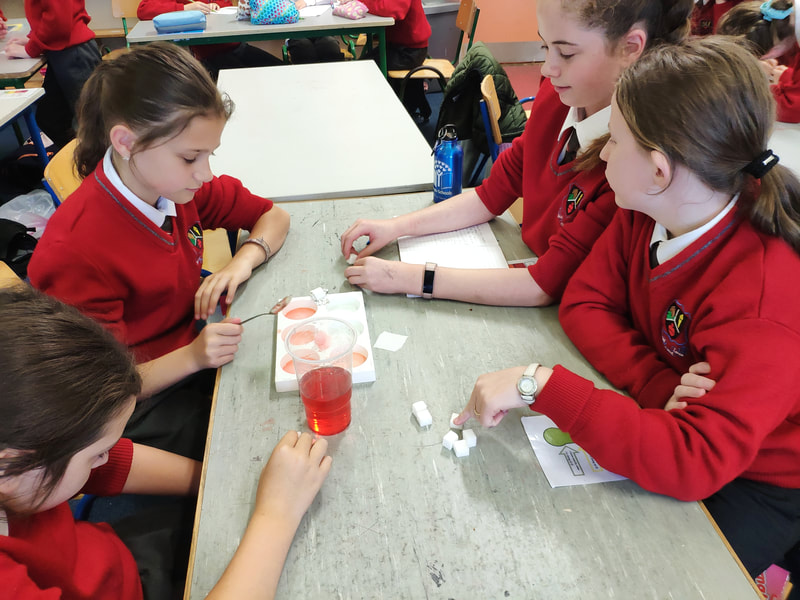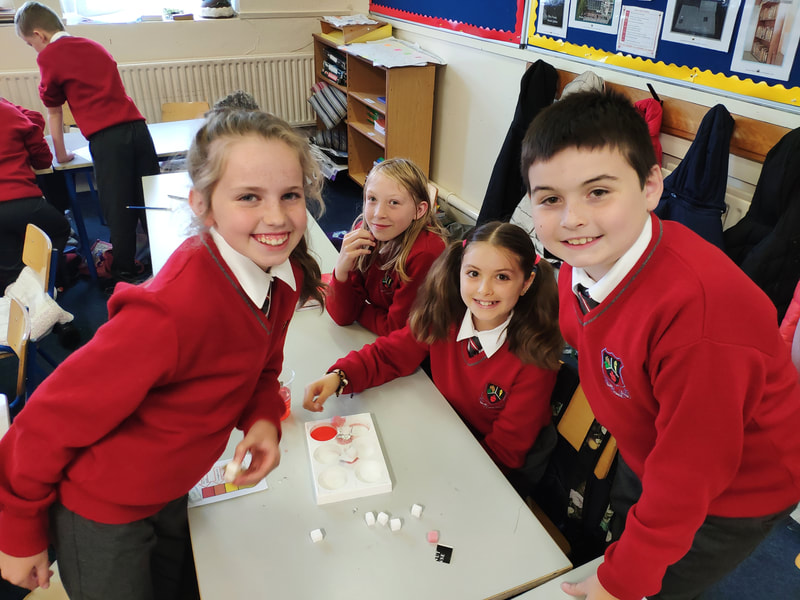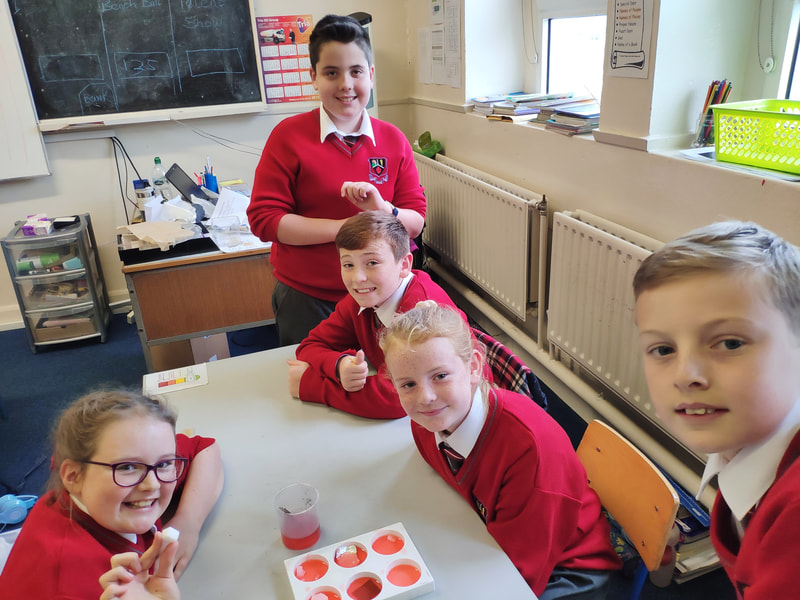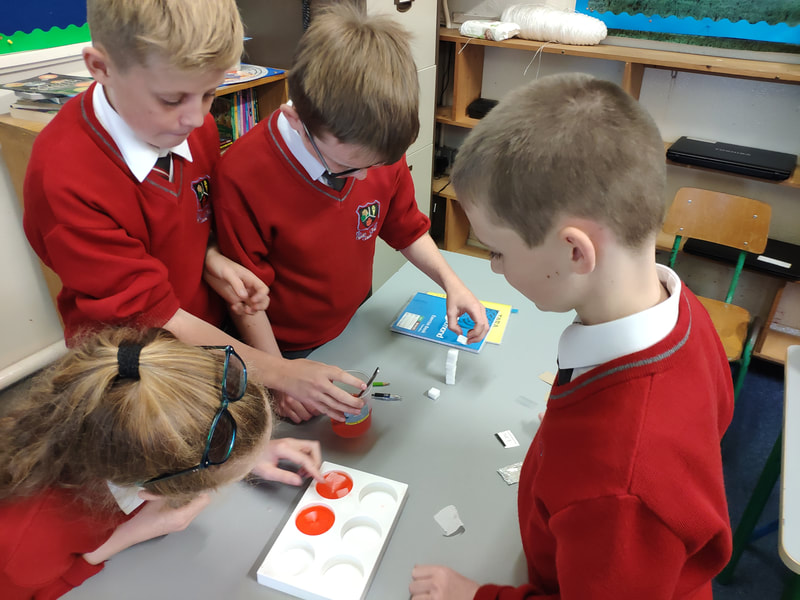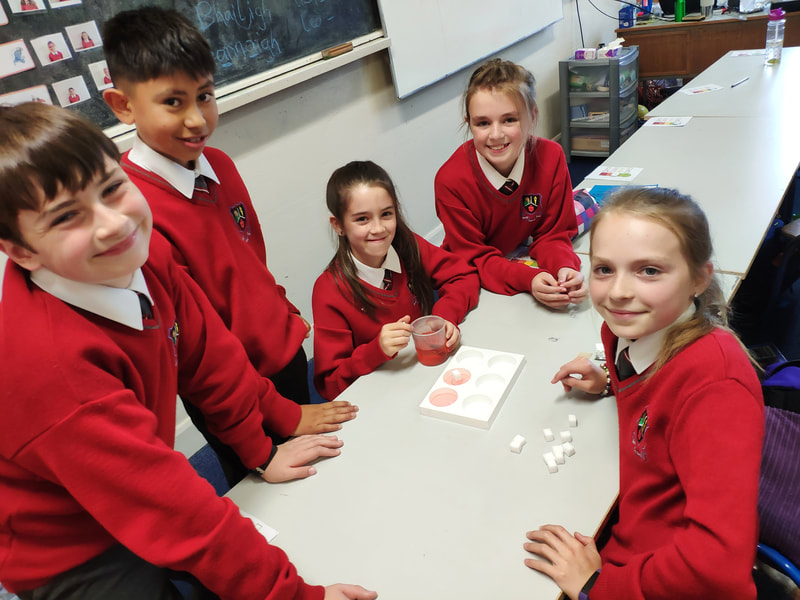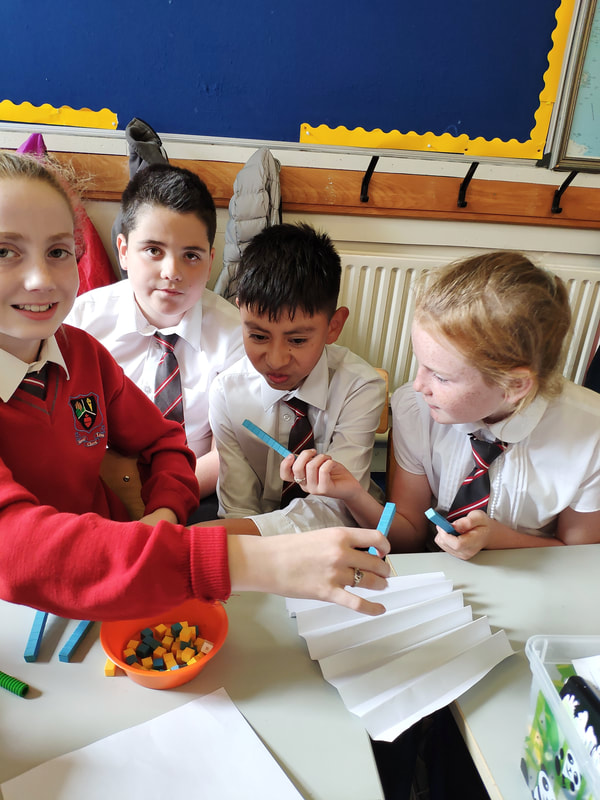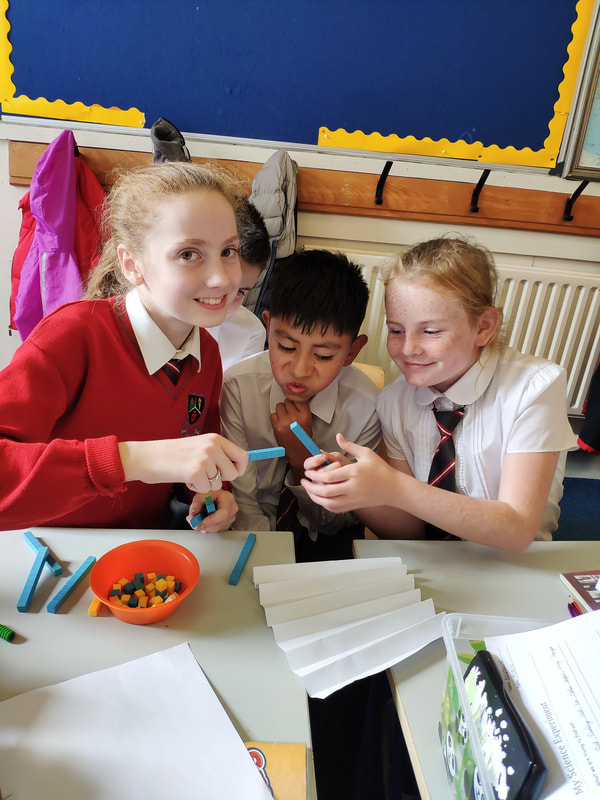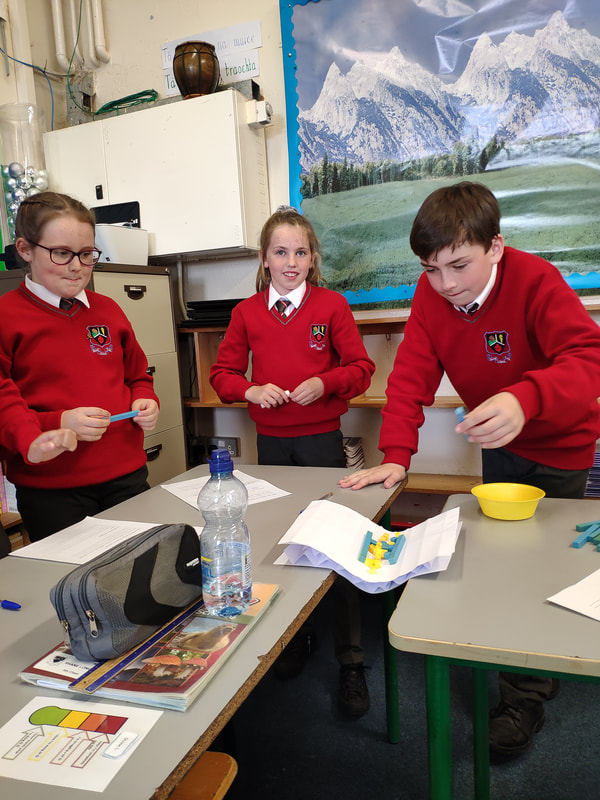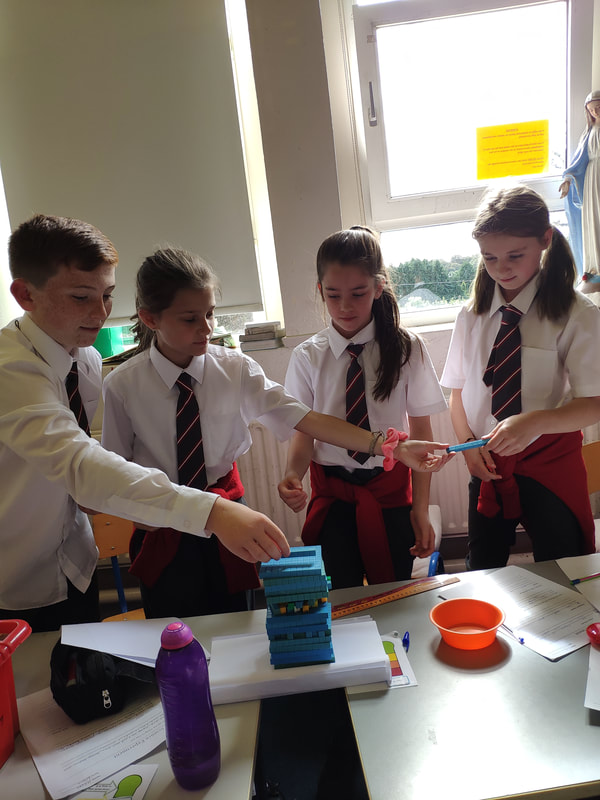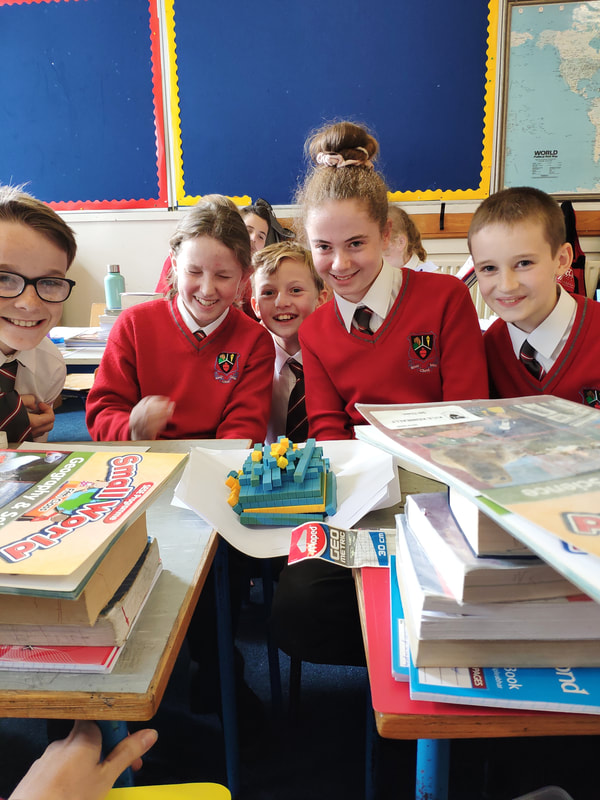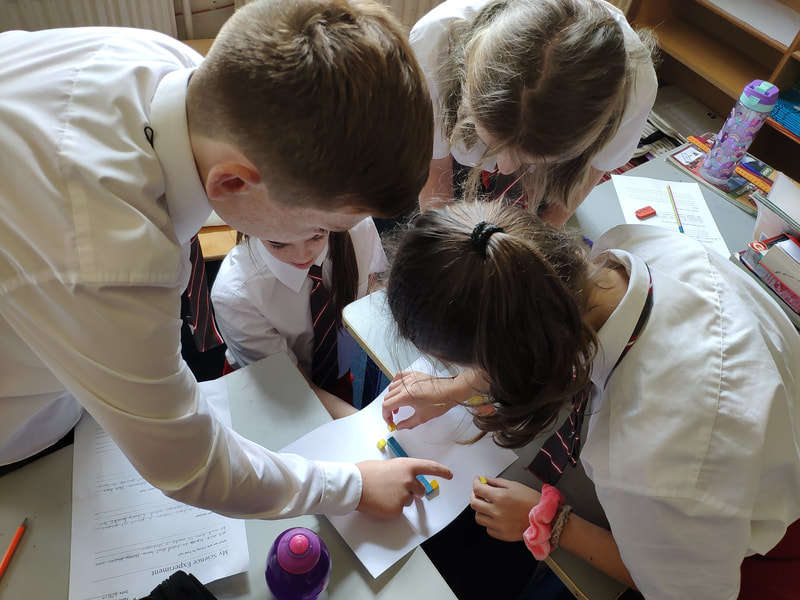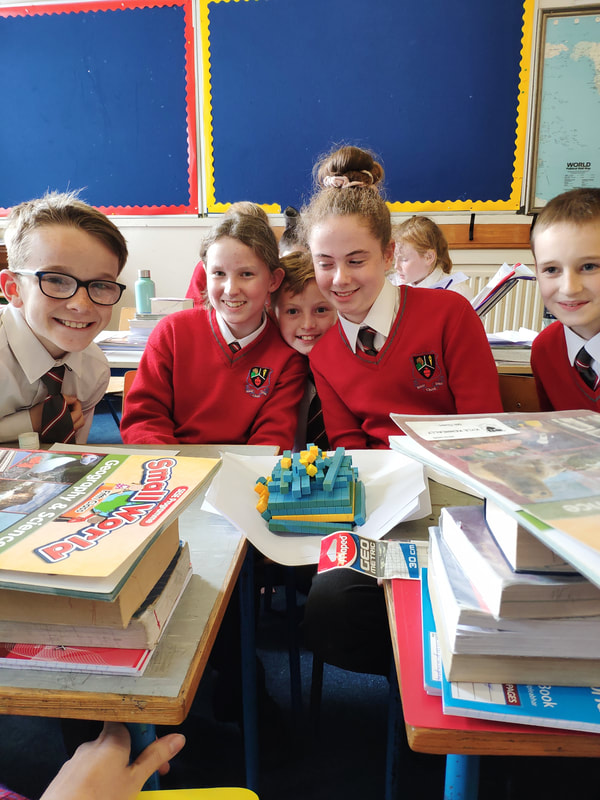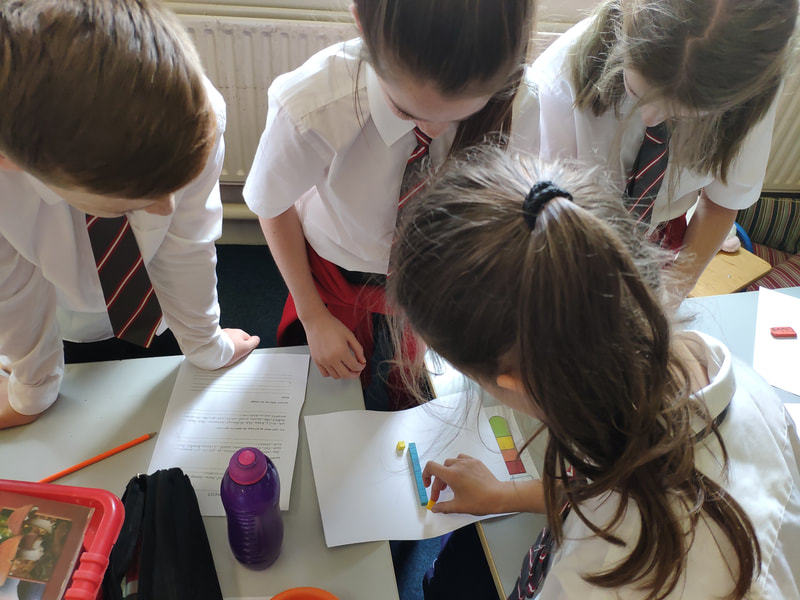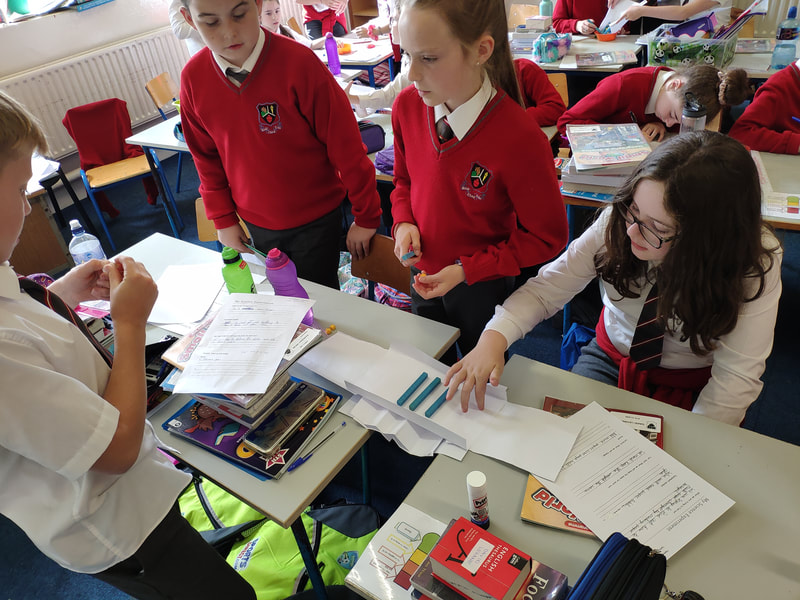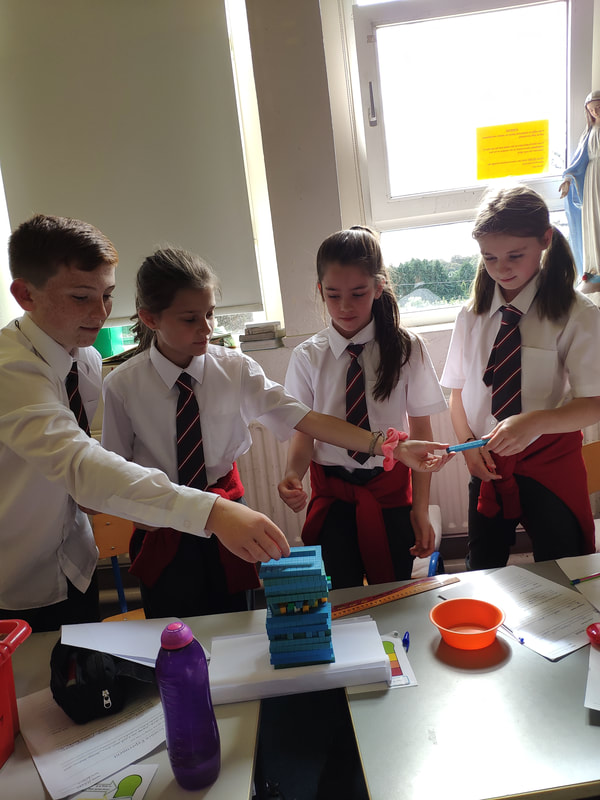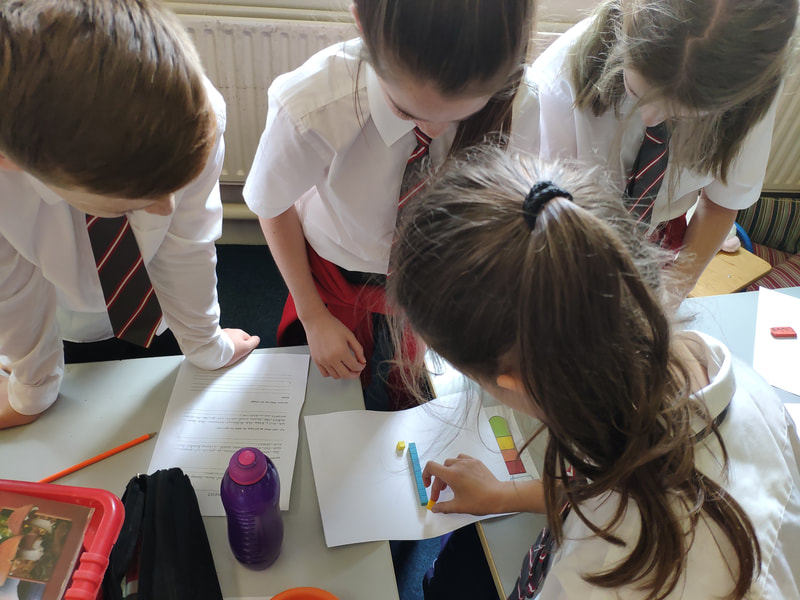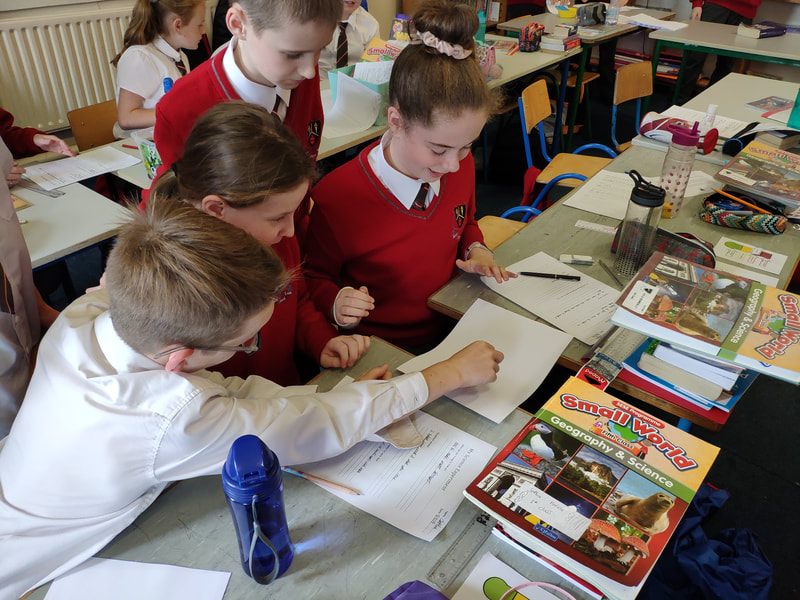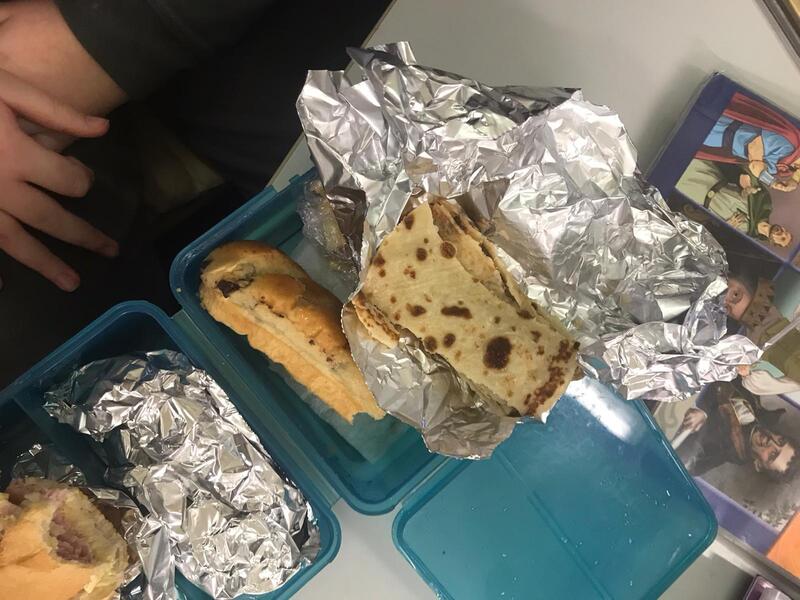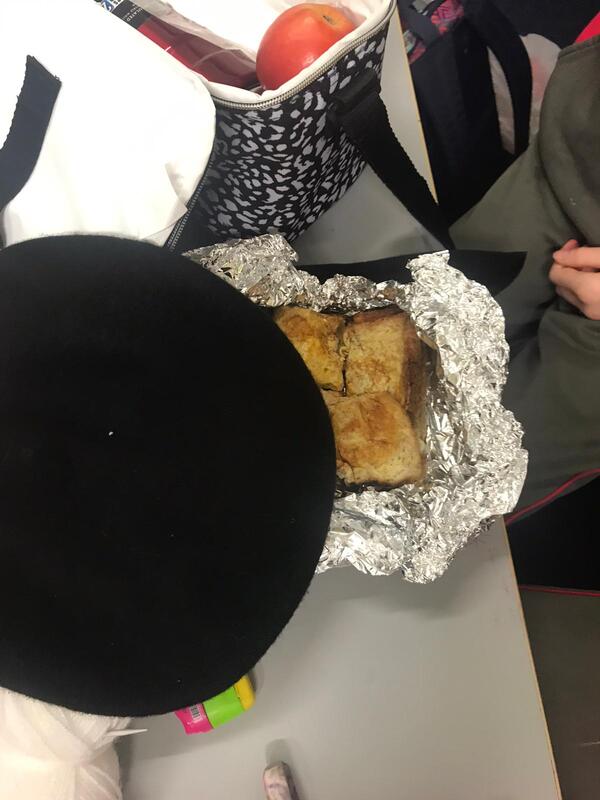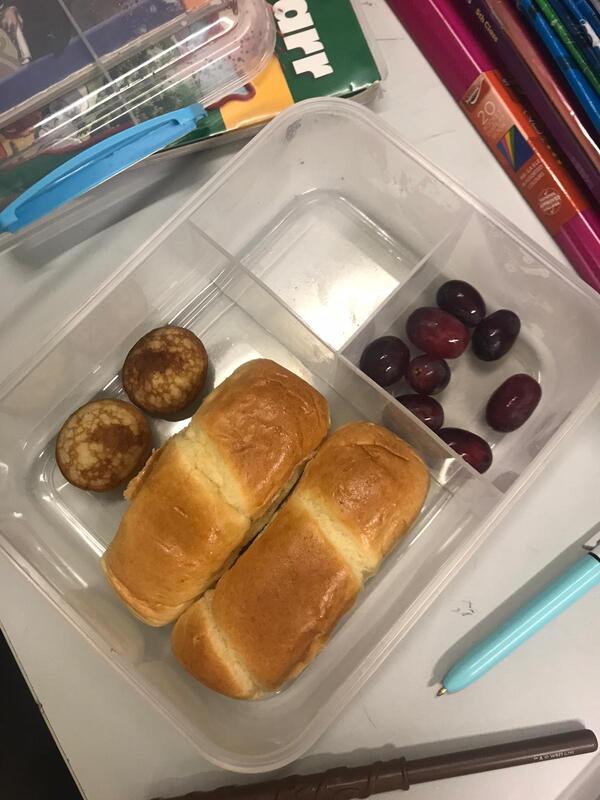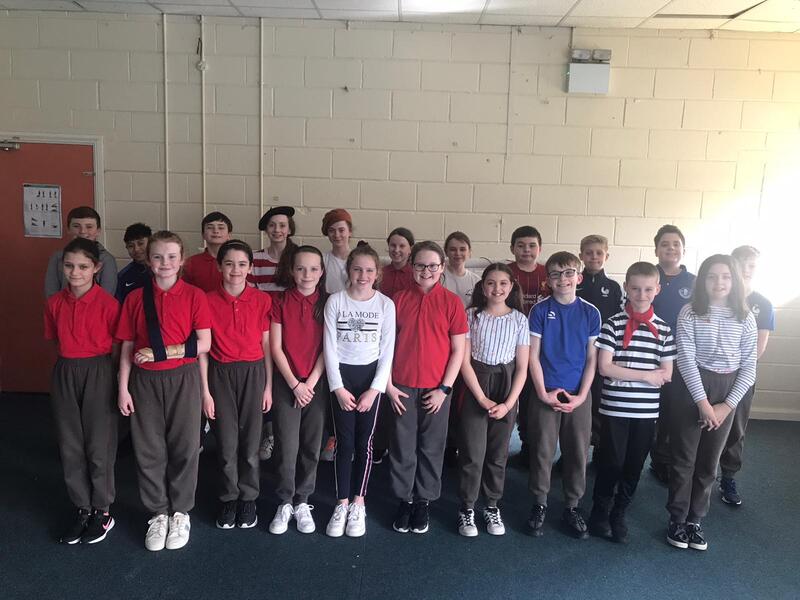Ms. Kelliher and Ms. Keohane's
Fifth Class
[email protected]
Week Beginning Monday 22nd June
Hi Everyone!! Our last week in 5th Class! What a year! One you will always remember we’re sure. We have made a little video to say our goodbyes and we would like to thank you all for being such a lovely class to work with all year. You’ll be glad to hear that the workload this week is lots of fun activities for you to enjoy!
Virtual Tour
Please look at the homepage of this website where there are a whole host of virtual tours that you might enjoy. We would really recommend you look at the virtual tour of Anne Frank’s House as it is very interesting and will remind you of what we learned about Anne all the way back in September!
Please look at the homepage of this website where there are a whole host of virtual tours that you might enjoy. We would really recommend you look at the virtual tour of Anne Frank’s House as it is very interesting and will remind you of what we learned about Anne all the way back in September!
STEM Challenge
Here is a fun STEM challenge that you might like to try at home. It is testing the strength of Spaghetti.
There are a few ways to do it. The first way is taken from a website called scientificamerican.com
This website describes the science behind it:
What happens when you bend a piece of spaghetti (or another item)? Two things happen when you bend a material: Parts of it are put under tension, meaning they are being pulled apart. Other parts are put under compression, or being squished together. Certain materials tend to break more easily under either tension or compression, so it is important for engineers and material scientists to study how materials break. Better understanding these details allows them to build structures that won't break. Bridges are a great example—when cars drive over a bridge, their weight pushes downward, causing the bridge to bend slightly. This puts the materials in the bridge in both tension and compression. Engineers have to design the bridge to make sure it can handle these forces.
In this project you will make a "beam" from bundled-together strands of spaghetti. As you hang weights from it, the beam will start to bend—putting some of the strands in tension and some in compression. Which ones break first depends on the physical properties of pasta. Do you think pasta will break first in tension or compression? Try this project to find out!
Here is a fun STEM challenge that you might like to try at home. It is testing the strength of Spaghetti.
There are a few ways to do it. The first way is taken from a website called scientificamerican.com
This website describes the science behind it:
What happens when you bend a piece of spaghetti (or another item)? Two things happen when you bend a material: Parts of it are put under tension, meaning they are being pulled apart. Other parts are put under compression, or being squished together. Certain materials tend to break more easily under either tension or compression, so it is important for engineers and material scientists to study how materials break. Better understanding these details allows them to build structures that won't break. Bridges are a great example—when cars drive over a bridge, their weight pushes downward, causing the bridge to bend slightly. This puts the materials in the bridge in both tension and compression. Engineers have to design the bridge to make sure it can handle these forces.
In this project you will make a "beam" from bundled-together strands of spaghetti. As you hang weights from it, the beam will start to bend—putting some of the strands in tension and some in compression. Which ones break first depends on the physical properties of pasta. Do you think pasta will break first in tension or compression? Try this project to find out!
Materials
Observations and results
You should find that the spaghetti strands toward the bottom of your bundle start to break first. These are the strands that are under tension (being pulled apart). Dry pasta is brittle, meaning it tends to break very rapidly instead of bending permanently (as opposed to a ductile material such as clay, which can be stretched a lot and will change its shape before it breaks). So, when one piece of spaghetti breaks, all the other pieces might follow in quick succession. This type of brittle failure is what engineers want to avoid in structures, such as bridges. Many other factors also go into bridge design to keep them safe and standing—even under heavy weight
Alternatives
Another way to test it is the picture below taken from frugalfun4boys.com in which they use some Styrofoam to stick the spaghetti into vertically and another piece at the top. It’s pretty impressive how much it could hold. They also test it using blocks to make a bridge and then all more weights on the top. You could try it a few different ways depending on the items you have at home.
- Box of spaghetti
- Two objects of equal height, such as chairs, tables or large cardboard boxes
- Scissors (and adult's help when using them)
- String
- Paper clip
- Large plastic or paper cup
- Objects to use as weights (such as coins)
- Rubber bands or tape
- Recommended: safety goggles (to protect your eyes from flying fragments of broken spaghetti)
- Set up two equal-height chairs, tables or cardboard boxes so they are next to one another, with a gap in between them that is just a few centimeters less than the length of a piece of spaghetti.
- Have an adult help to cut two small holes toward the top of your plastic or paper cup, just under the rim, on opposite sides from one another.
- Tie a loop of string through the two holes in your cup to form a "handle" (turning the cup into a mini-bucket).
- Bend a paper clip into either a "C"- or "S"-hook shape. This will allow you to hang the string handle from strands of spaghetti.
- Place a single piece of spaghetti across the gap between your chairs (or tables, boxes, etcetera).
- Hang your cup from the strand of spaghetti using the paper clip hook that you made.
- Slowly start adding weight (such as coins) to the cup. How much weight do you think the cup will hold before the strand of spaghetti breaks?
- Continue adding weight slowly. If you are using heavy items such as coins, support the cup with your hand when you drop in a coin, then gently lower the cup until the string pulls on the spaghetti. (Do not just drop or throw coins into the cup unsupported, as this could cause the spaghetti to break more easily.)
- Keep adding weight until the strand of spaghetti breaks. (If it bends and falls through the gap without breaking, move your chairs closer together and try again.)
- Now, bundle together five pieces of spaghetti. Do this by wrapping their ends in either rubber bands or tape to hold them together. How much weight do you think the bundled strands of spaghetti will hold? Will it be approximately five times the amount a single strand could hold, more than that or less?
- Place the bundled strands of spaghetti across the gap and repeat the weight test. Remember to add weight slowly. Watch and listen to what happens as you add weight. Can you see or hear any individual strands of spaghetti snap before the entire bundle breaks? Are the first strands that break at the top or bottom of the bundle?
- Try the test again with a bundle of 10 strands of spaghetti (or more, if you have a large cup and lots of coins).
- Observe carefully where the strands that broke are located. Are the strands that fracture first at the top or bottom of the bundle? Do you think these are in tension or compression?
- Extra: Does how you bundle the spaghetti strands together affect how much weight they can hold? What happens if you loosely tie them with string (just enough to hold them together) versus tightly wrapping them with rubber bands or tape?
- Extra: Continue the test with larger bundles of spaghetti. You might need to use a larger container (such as a bucket instead of a plastic cup) to break the larger bundles. You can also perform this activity using water as a weight—just be sure the setup is located outside or where spills can easily be cleaned up.
Observations and results
You should find that the spaghetti strands toward the bottom of your bundle start to break first. These are the strands that are under tension (being pulled apart). Dry pasta is brittle, meaning it tends to break very rapidly instead of bending permanently (as opposed to a ductile material such as clay, which can be stretched a lot and will change its shape before it breaks). So, when one piece of spaghetti breaks, all the other pieces might follow in quick succession. This type of brittle failure is what engineers want to avoid in structures, such as bridges. Many other factors also go into bridge design to keep them safe and standing—even under heavy weight
Alternatives
Another way to test it is the picture below taken from frugalfun4boys.com in which they use some Styrofoam to stick the spaghetti into vertically and another piece at the top. It’s pretty impressive how much it could hold. They also test it using blocks to make a bridge and then all more weights on the top. You could try it a few different ways depending on the items you have at home.
Active Month Activities
For the final week of ‘Active Month’, choose one day during the week and have a ‘Sports Day’ at home. You can find some ideas below and you might even add your own events too. Compete against the other members of your family, you can keep score or do it just for fun!
For the final week of ‘Active Month’, choose one day during the week and have a ‘Sports Day’ at home. You can find some ideas below and you might even add your own events too. Compete against the other members of your family, you can keep score or do it just for fun!
| home-sports-day.pdf | |
| File Size: | 515 kb |
| File Type: | |
| home_sports_day_task_cards.pdf | |
| File Size: | 1601 kb |
| File Type: | |
| scavenger_hunt.pdf | |
| File Size: | 1549 kb |
| File Type: | |
| yoga_activity_cards.pdf | |
| File Size: | 544 kb |
| File Type: | |
Art: Finish the Comic
Choose 1 or more of the pages below. Finish the comic strip by drawing pictures (on blank paper if you have it) for the remaining boxes.
Choose 1 or more of the pages below. Finish the comic strip by drawing pictures (on blank paper if you have it) for the remaining boxes.
| food_comics-2__1_.pdf | |
| File Size: | 1901 kb |
| File Type: | |
Water Safety
Being safe around water is extremely important and could save your life or the life of someone you know. It is important that you continue learning about water safety especially at this time of year when you are more likely to visit beaches, rivers and other swimming areas.
Go to https://www.rte.ie/learn/2020/0513/1138157-learn-skills-that-save-lives-by-becoming-a-paws-hero/
Scroll to the bottom of the page to the area for 4th to 6th Class.
Click Step 1 and finish reading pages 13 to 24
Click Step 2 and try some of the interactive lessons to see if you can remember what you have learned.
Click Step 3 if you would like to download a certificate.
Being safe around water is extremely important and could save your life or the life of someone you know. It is important that you continue learning about water safety especially at this time of year when you are more likely to visit beaches, rivers and other swimming areas.
Go to https://www.rte.ie/learn/2020/0513/1138157-learn-skills-that-save-lives-by-becoming-a-paws-hero/
Scroll to the bottom of the page to the area for 4th to 6th Class.
Click Step 1 and finish reading pages 13 to 24
Click Step 2 and try some of the interactive lessons to see if you can remember what you have learned.
Click Step 3 if you would like to download a certificate.
Week Beginning Monday 15th June
Hello everybody! Its hard to believe we are going into our second last week of school. 2020 sure has been a school year that none of us will ever forget. Usually around this time we would be having lots of fun in school, going on tours, having sports day and playing outside a lot more. We hope that you are all managing to stay active and are enjoying the outdoor activities we posted last week.
This week is Water Safety Week and this is something that you should all try your best to have a good knowledge of. More than anything this week the Water Safety activities are the most important ones that you could do so please try your best to complete them. Your happiness and safety are our main concern and we cant wait to hear about all the fun ye had at the beach or swimming when we see you all in September. We miss you.
Ms Kelliher and Ms Keohane
This week is Water Safety Week and this is something that you should all try your best to have a good knowledge of. More than anything this week the Water Safety activities are the most important ones that you could do so please try your best to complete them. Your happiness and safety are our main concern and we cant wait to hear about all the fun ye had at the beach or swimming when we see you all in September. We miss you.
Ms Kelliher and Ms Keohane
- Irish:
- See the worksheet below; if you don’t have a printer you can use the page to look at the numbers and the code, then write the words you find on a blank sheet or in your copy.
2. Once you have found the words relating to summertime, look up their meaning. You can find out the pronunciation of some words by using https://www.teanglann.ie/en/fuaim (this site also has an English-Irish dictionary). When searching for the pronunciation, type in each word on its own rather than as a phrase. Choose the Munster dialect.
3. Lastly, draw pictures to match a few of the summer words. Or, you can draw a full summer scene and label it with some of the words from the code breaker.
| summer-break-the-code.pdf | |
| File Size: | 114 kb |
| File Type: | |
| code_breaker_answers.png | |
| File Size: | 26 kb |
| File Type: | png |
English
1. Cool!
Listen to the audio recordings of Cool! Chapter 6 and the ending.
Listen to the audio recordings of Cool! Chapter 6 and the ending.
| cool_chap_6.m4a | |
| File Size: | 22976 kb |
| File Type: | m4a |
| cool_ending | |
| File Size: | 3014 kb |
| File Type: | cool ending |
Book Report:Write a book report for Cool!
Use your skills of determining importance to find the main points of the story.
Remember when you are report writing you must give factual information to the reader. You should give your ideas and personal opinions about the main characters, the plot and theme of the story based on events and quotes from the story.
Every book report should include:
- the title of the book
- the author of the book
- the time when the story takes place
- the location where the story takes place
- the names and a brief description of each of the characters you will be discussing
- many quotations and examples from the book to support your opinions
Spell Well: pg 70 A and B
Maths: Fractions, Decimals and Percentages:
This week we are continuing to learn more about fractions, decimals and percentages.
We use fractions, decimals and percentages every day, be it when we have to divide a pizza between members of our families, count money or work out how much something will cost in a sale.
We now should know how to convert fractions and decimals to percentages and vice versa.
To do:
- Read the example for comparing and ordering on page 114
- On pg 114 do Q1. every second sum and on pg. 115 Q.2. every second sum.
25% is half of 50% so thats ½ of 50% (1/4 )
10% = 1/10 so 5% = ½ of 10% ( 1/20)
Do:
Watch this tutorial to work out how to calculate the percentage of an amount:
Watch this tutorial to work out how to calculate the percentage of an amount:
| calculating_percentage_of_an_amount.mp4 | |
| File Size: | 62314 kb |
| File Type: | mp4 |
1. On page 116 do Q.1. b,c and f
2. Watch Tutorial 2 and on page 117 do Q4. B,c and d (e is optional)
2. Watch Tutorial 2 and on page 117 do Q4. B,c and d (e is optional)
| calculating_percentage_part_2.mp4 | |
| File Size: | 51289 kb |
| File Type: | mp4 |
You can also watch the following tutorial from Busy at Maths to reinforce understanding:
data.cjfallon.ie/resources/20707/BAM5_Tutorial_077/lessons/BAM5_Tutorial_077/index.html
3. Turn to page 118 and read the information at the top of the page.
Watch Tutorial 3 (percentage Increase and decrease).
| percentage_increase_and_decrease.mp4 | |
| File Size: | 54245 kb |
| File Type: | mp4 |
You can also watch the following tutorial from Busy at Maths to reinforce understanding:
data.cjfallon.ie/resources/20707/BAM5_Tutorial_077/lessons/BAM5_Tutorial_077/index.html
4.Pause tutorial and Do Q2. b, d and f on page 118
5.Play tutorial again and on pg.119 do Q4. c, f and h and the Work It out.To help reinforce your understanding you can watch:
data.cjfallon.ie/resources/20707/BAM5_Tutorial_078/lessons/BAM5_Tutorial_078/index.html
data.cjfallon.ie/resources/20707/BAM5_Tutorial_077/lessons/BAM5_Tutorial_077/index.html
4.Pause tutorial and Do Q2. b, d and f on page 118
5.Play tutorial again and on pg.119 do Q4. c, f and h and the Work It out.To help reinforce your understanding you can watch:
data.cjfallon.ie/resources/20707/BAM5_Tutorial_078/lessons/BAM5_Tutorial_078/index.html
- SPHE: Water Safety
- Water safety knowledge is essential for every child. This year learning about water safety is even more essential than ever. We have all been very restricted for the past three months and now that we have been given a bit more freedom a lot of us will be flocking to the beaches, rivers and other swimming destinations.
These lessons will guide you through Water Safety at home, on farms, in swimming pools, rivers, lakes and of course at the beach.
To do:
Please click on the link below:
https://www.rte.ie/learn/2020/0513/1138157-learn-skills-that-save-lives-by-becoming-a-paws-hero/
Scroll to the end of the page and complete the following activities:
Reading: Click STEP 1 and read pages 1- 12
Interactive Activity: Click STEP 2 and click on the activity called Whats The word? . Do cloze activities 1-4
Optional: Go back to STEP 2 and do wordsearch.
Art:
Click on the following link and read about ‘Candy Creations’
https://dynamath.scholastic.com/issues/2019-20/100119/candy-creations.html
Explore how decimals are used when weighing the jelly beans and other sweets. Use your imagination and decide how you would make your own ‘Candy Creation’. Do a sketch of a piece of art and label what is being used to create your masterpiece. You can even try making a real candy sculpture if it’s ok with people at home.
Active Month Activities
Please try some of the following activities as part of Active Month.
- Below you will find different ways to use sports equipment and regular items you might have at home. There are ideas for both indoor and outdoor use.
| indoor_outdoor_equipment_ideas.pdf | |
| File Size: | 966 kb |
| File Type: | |
- The FAI have a series of Homeskills videos which you can view at the following link https://www.youtube.com/channel/UC_4CVGZ-aQH2V6cLGYmKMAg.
- If you would like to advance your Yoga skills, there are 18 Yoga poses laid out in the PowerPoint below.
| pp_with_18_poses.pptx | |
| File Size: | 7770 kb |
| File Type: | pptx |
Week Beginning Monday 8th June
Hi everyone! Can you believe it's the second week in June already?? We hope you enjoyed having a more active week last week and we will be continuing with lots of outdoor and active ideas for this week. We miss you all!!!
Maths
This week we are looking at Chapter 13 Fractions, Decimals and Percentages. Some of this we will have covered already in other chapters such as fractions, weight, capacity and money. Dealing with percentages will be the newest part.
There are three video tutorials to help you this week. We would advise you to spread them out over the week so you don’t become confused. We have included some optional extra sums between each tutorial in case you feel you need more practice at the skills in the tutorials before moving on to the next one. If you feel confident after watching the tutorials you can skip the optional practice sums if you wish.
The first video tutorial is to help you with changing fractions to decimals and vice versa. During the tutorial you will be asked to pause the video and try sums of your own so before you watch it we would recommend that you get set up with your maths copy, pencil case and your Operation Maths open to page 111.
In the tutorial I show two ways of converting fractions to decimals. I forgot to mention that using the first method of making the denominator 10 or 100 won’t work for every fraction (e.g. 1/3). This is why we have also shown you the division method also.
NB please note: At the very end of the tutorial I set page 108 Number 2 however this is a mistake and it should say page 109. My apologies, the way it was showing up on my computer it looked like 108.
This week we are looking at Chapter 13 Fractions, Decimals and Percentages. Some of this we will have covered already in other chapters such as fractions, weight, capacity and money. Dealing with percentages will be the newest part.
There are three video tutorials to help you this week. We would advise you to spread them out over the week so you don’t become confused. We have included some optional extra sums between each tutorial in case you feel you need more practice at the skills in the tutorials before moving on to the next one. If you feel confident after watching the tutorials you can skip the optional practice sums if you wish.
The first video tutorial is to help you with changing fractions to decimals and vice versa. During the tutorial you will be asked to pause the video and try sums of your own so before you watch it we would recommend that you get set up with your maths copy, pencil case and your Operation Maths open to page 111.
In the tutorial I show two ways of converting fractions to decimals. I forgot to mention that using the first method of making the denominator 10 or 100 won’t work for every fraction (e.g. 1/3). This is why we have also shown you the division method also.
NB please note: At the very end of the tutorial I set page 108 Number 2 however this is a mistake and it should say page 109. My apologies, the way it was showing up on my computer it looked like 108.
Optional extra practice
If you would like to practice more of these types of sums in the first tutorial you could complete some or all of p 109 No 4 and the Work it Out box on the same page. Here you are asked to express numbers as a fraction in its simplest form and as a decimal. I will do one as an example for you:
No.4 a) 5/10 = 1/2 (this is the fraction in its simplest form) 5/10 = 0.5
If you would like to practice more of these types of sums in the first tutorial you could complete some or all of p 109 No 4 and the Work it Out box on the same page. Here you are asked to express numbers as a fraction in its simplest form and as a decimal. I will do one as an example for you:
No.4 a) 5/10 = 1/2 (this is the fraction in its simplest form) 5/10 = 0.5
The next tutorial is about percentages. Again, have your maths work ready so you can do your sums as you go along.
NB: Please note: In this tutorial page 110 is a mistake. It should be page 111. Doh!
Answers to questions in the tutorial
1: a) 6.3% = 0.063 b) 17.6% = 0.176
2: a) 160% = 1.6 b) 130% = 1.3 c) 300% = 3
Optional extra practice sums
Convert these percentages to decimals
1: a) 32% b) 14% c) 56% d) 8% e) 5% f) 4.9% g)8.1% h)140%
Convert these decimals to percentages
2: a) 0.07 b) 0.03 c) 0.75 d) 0.38 e) 0.428 f)0.095
The final tutorial shows you how to express fractions as percentages and vice versa. This is really a combination of the skills you have already learned in the first two tutorials. And for once I got the page numbers all right!! Woohoo!
1: a) 6.3% = 0.063 b) 17.6% = 0.176
2: a) 160% = 1.6 b) 130% = 1.3 c) 300% = 3
Optional extra practice sums
Convert these percentages to decimals
1: a) 32% b) 14% c) 56% d) 8% e) 5% f) 4.9% g)8.1% h)140%
Convert these decimals to percentages
2: a) 0.07 b) 0.03 c) 0.75 d) 0.38 e) 0.428 f)0.095
The final tutorial shows you how to express fractions as percentages and vice versa. This is really a combination of the skills you have already learned in the first two tutorials. And for once I got the page numbers all right!! Woohoo!
English/Art/Music
Cool Chapter 5
Think about: How does this chapter make us feel and why? How has the author employed suspense to make us want to read on?
Listen to the audio
cool_chp_5.m4a
Activities:
Art:
The book is nearly entirely based in the one location of Robbie’s hospital room. As you have listened to the story you will have built up an image in your head of what this room looks like and what the characters look like. We would like you to draw/paint/colour/create a picture or piece of art such as a model or diorama of Robbie’s hospital room. Choose whatever medium you like to work with. The author will have created an image in your head but there will be gaps in his descriptions that your imagination has filled in for itself. It can be really interesting to hear/see how other people picture the characters so we would encourage you to pay attention to details such as hair and eye colour, height, build etc.
Music:
Throughout the novel Robbie mentions songs that Tracey sings or his mom plays on CD at home. Below are some YouTube links for you to listen to some of these songs.
John Lennon “Imagine”: https://youtu.be/L6svOHFSAH8
Kristy MacCall “Days”: https://youtu.be/lhsDPKF--rM
Buddy Holly “Raining in My Heart”: https://youtu.be/lLeZof1wGps
“Food, Glorious, Food” from the Movie “Oliver”: https://youtu.be/ly7PONiKGUs
Imagine you the book was being made into a movie. What other songs would you choose for the soundtrack?
Word Wizard: p 99 D and p 100 A and B
Spell Well: p68 A and B
Cool Chapter 5
Think about: How does this chapter make us feel and why? How has the author employed suspense to make us want to read on?
Listen to the audio
cool_chp_5.m4a
Activities:
Art:
The book is nearly entirely based in the one location of Robbie’s hospital room. As you have listened to the story you will have built up an image in your head of what this room looks like and what the characters look like. We would like you to draw/paint/colour/create a picture or piece of art such as a model or diorama of Robbie’s hospital room. Choose whatever medium you like to work with. The author will have created an image in your head but there will be gaps in his descriptions that your imagination has filled in for itself. It can be really interesting to hear/see how other people picture the characters so we would encourage you to pay attention to details such as hair and eye colour, height, build etc.
Music:
Throughout the novel Robbie mentions songs that Tracey sings or his mom plays on CD at home. Below are some YouTube links for you to listen to some of these songs.
John Lennon “Imagine”: https://youtu.be/L6svOHFSAH8
Kristy MacCall “Days”: https://youtu.be/lhsDPKF--rM
Buddy Holly “Raining in My Heart”: https://youtu.be/lLeZof1wGps
“Food, Glorious, Food” from the Movie “Oliver”: https://youtu.be/ly7PONiKGUs
Imagine you the book was being made into a movie. What other songs would you choose for the soundtrack?
Word Wizard: p 99 D and p 100 A and B
Spell Well: p68 A and B
Gaeilge
Below are some sport challenges as Gaeilge for you to try. Obviously the Rás na dTrí Chos should only be done with someone from your own household as it is not possible to do it from 2 metres apart.
roi-pe-32-esports-week-friday-challenge-cards-3rd--6th-gaeilge_ver_3.pdf
Here are some translations to help you:
Cé atá ábalta: who is able
Beidh páirtí de dhíth: you will need a partner
Rófhurasta: too easy
Colbha an chosáin: edge of the footpath
Sprioc: target
Pionna éadaigh: clothes pegs
Taobh istigh de nóiméad: within a minute
Bun go Barr: Lch 138 agus lch 139
Bain usáid as an bhfoclóir chun abairtí a dhéanamh (Use the vocabulary to make sentences)
Scríobh idir 5 agus 10 abairtí. (Write between 5 and 10 sentences)
Briathar+duine no ainmhí (+foclóir breise)+áit+am (Verb+person or animal (+extra vocab) +place+time.
Mar shampla: Cheannaigh an cailín bronntanas sa siopa ar a dó a chlog.
(verb) (person) (extra vocab) (place) (time)
Bhí na páistí sa chistin ag am bricfeasta.
(verb)(person) (place) (time)
Below are some sport challenges as Gaeilge for you to try. Obviously the Rás na dTrí Chos should only be done with someone from your own household as it is not possible to do it from 2 metres apart.
roi-pe-32-esports-week-friday-challenge-cards-3rd--6th-gaeilge_ver_3.pdf
Here are some translations to help you:
Cé atá ábalta: who is able
Beidh páirtí de dhíth: you will need a partner
Rófhurasta: too easy
Colbha an chosáin: edge of the footpath
Sprioc: target
Pionna éadaigh: clothes pegs
Taobh istigh de nóiméad: within a minute
Bun go Barr: Lch 138 agus lch 139
Bain usáid as an bhfoclóir chun abairtí a dhéanamh (Use the vocabulary to make sentences)
Scríobh idir 5 agus 10 abairtí. (Write between 5 and 10 sentences)
Briathar+duine no ainmhí (+foclóir breise)+áit+am (Verb+person or animal (+extra vocab) +place+time.
Mar shampla: Cheannaigh an cailín bronntanas sa siopa ar a dó a chlog.
(verb) (person) (extra vocab) (place) (time)
Bhí na páistí sa chistin ag am bricfeasta.
(verb)(person) (place) (time)
History
As this is active month we are thinking a lot about games we can play outside. This is more challenging this year as we have to maintain social distance. It is also very important to keep in touch with grandparents and older relatives who may be feeling lonely during these difficult times. So this week we would like you to interview a grandparent/older person about the games they used to play in the past.
We will attach the pdf from Twinkl below but it may be more convenient to jot the questions down in your copy so we will put them here also
1:Did you play any sport growing up?
2: What did you do in your free time?
3: What games did you like to play with your friends?
4: Where did you play with your friends? Was it outside your house? In a field? In the schoolyard? Etc
5: What did you do on a rainy day when you couldn’t go outside?
6: Do you see kids today playing the same games you used to play?
7: Are there any games/activities that you see kids playing today that you wish you could have had when growing up?
8: What sort of technology did you have in your house?
9: Do you think children have too many toys to play with nowadays?
10: What was your least favourite game to play as a child?
11:Do you play any of the games you used to play as a child with your grandchildren now?
12: If there was one toy or game that you had growing up that you could bring back now, what would it be? Why?
roi-hy-84-games-in-the-past-grandparents-leisure-activities-questionnaire_ver_1.pdf
As this is active month we are thinking a lot about games we can play outside. This is more challenging this year as we have to maintain social distance. It is also very important to keep in touch with grandparents and older relatives who may be feeling lonely during these difficult times. So this week we would like you to interview a grandparent/older person about the games they used to play in the past.
We will attach the pdf from Twinkl below but it may be more convenient to jot the questions down in your copy so we will put them here also
1:Did you play any sport growing up?
2: What did you do in your free time?
3: What games did you like to play with your friends?
4: Where did you play with your friends? Was it outside your house? In a field? In the schoolyard? Etc
5: What did you do on a rainy day when you couldn’t go outside?
6: Do you see kids today playing the same games you used to play?
7: Are there any games/activities that you see kids playing today that you wish you could have had when growing up?
8: What sort of technology did you have in your house?
9: Do you think children have too many toys to play with nowadays?
10: What was your least favourite game to play as a child?
11:Do you play any of the games you used to play as a child with your grandchildren now?
12: If there was one toy or game that you had growing up that you could bring back now, what would it be? Why?
roi-hy-84-games-in-the-past-grandparents-leisure-activities-questionnaire_ver_1.pdf
Active Month Activities
It would be fantastic if you could try some of the following activities as part of Active Month.
It would be fantastic if you could try some of the following activities as part of Active Month.
- Spell your name with actions
2. Ms Mc Hugh has put together a lovely booklet with 35 simple activities you can do outdoors, have a look at that below.
35_simple_outdoor_activities_for_kids_for_active_month.docx
3. See how many squares you can colour in by completing the activities in this ‘Active Homework Chart’
active_homework_chart.pdf
Week Beginning Monday 1st June
Hello children!
We hope you all had a lovely week and made the most of the fabulous weather. This week we are at the start of June and we know that normally in school during the month of June we have lots of time outdoors, as well as our sports days and tours. We are so disappointed that we didn't get to do all these fun activities with you but we know you all understand that this is not like any other June we've ever had.
June is our "Active Month" and this month we will be easing off the written work and providing you with a lot more active lessons which you can do outdoors. Enjoy them and remember wear sunscreen!
We hope you all had a lovely week and made the most of the fabulous weather. This week we are at the start of June and we know that normally in school during the month of June we have lots of time outdoors, as well as our sports days and tours. We are so disappointed that we didn't get to do all these fun activities with you but we know you all understand that this is not like any other June we've ever had.
June is our "Active Month" and this month we will be easing off the written work and providing you with a lot more active lessons which you can do outdoors. Enjoy them and remember wear sunscreen!
Maths: Number Sentences and Equations
1. OM Pg. 175: Read the yellow box and do q.4 (a), (c), (e) and (i). Note: We remember the order of operations using BOMDAS.
2. OM Pg. 177: Read the yellow box and do q. 2 (b) and (d). On pg. 178, do q. 3 (a), (d) and (g).
3. Functions, inputs and outputs: See the worksheet below. You only need to write into your copy the parts that have blank spaces that you will be filling in. Try to figure out what is happening in no. 1, 2 and 3. Decide what numbers would go into and come out of the “machines”. The triangle and the square are both called function machines. A function machine will do the same thing to any number that goes into the machine (the input), for example, multiply the number by 2. It then gives the answer as an output.
| mathmachines.pdf | |
| File Size: | 26 kb |
| File Type: | |
English
Cool! Chapter 4
Cool! – Gianfranco Zola
‘ ZOLA IN MERCY DASH TO SAVE ROBBIE
Lying in a coma, 10-year-old accident victim Robbie Ainsley had a visit today from his great hero, Chelsea and Italy
superstar, Gianfranco Zola. Zola said afterwards: “When I heard about Robbie, that he might wake up from his coma if
I came to see him, I didn’t have to think about it. I came to do what I can. I am a father too.”
Listen to audio:
A message from Ms Kelliher: Apologies in advance for my really terrible attempt at an Italian accent.
| cool_chapter_4.mp3 | |
| File Size: | 10173 kb |
| File Type: | mp3 |
Imagine you are in hospital with a broken leg.
You get a surprise visitor.
It is a celebrity that you have always wanted to meet.
Write a paragraph describing his or her visit. Remember when writing descriptive texts you are writing something from your own experience; How do you feel? What do you see?, what does the person look/sound like?What do you say?
Spellwell:pg 67 E & F
You get a surprise visitor.
It is a celebrity that you have always wanted to meet.
Write a paragraph describing his or her visit. Remember when writing descriptive texts you are writing something from your own experience; How do you feel? What do you see?, what does the person look/sound like?What do you say?
Spellwell:pg 67 E & F
Gaeilge:
As June is Active Month (Mí Gníomhach) this weeks Irish homework is an outdoor obstacle course with instructions written as gaeilge.
Translations of commonly used words and phrases:
Timpeall: around
Cón: Cone
Thar:over
Ar ais: back (on the way back)
Mata: mat
Cleas na rotha: cartwheel
As June is Active Month (Mí Gníomhach) this weeks Irish homework is an outdoor obstacle course with instructions written as gaeilge.
- Read the instructions aloud to your parent.
- Look up any words you do not know in your English/Irish dictionary. (I will give you a list of commonly used words and their translations below.
- Do the obstacle course.
Translations of commonly used words and phrases:
Timpeall: around
Cón: Cone
Thar:over
Ar ais: back (on the way back)
Mata: mat
Cleas na rotha: cartwheel
| sports_day_event_cards_1_.pdf | |
| File Size: | 69 kb |
| File Type: | |
Geography
The Burren: Smaill World Unit 6 p 33 & 34 and Acts p 34
Science:
Limestone is made of calcium carbonate. When calcium carbonate and vinegar come into contact they form carbon dioxide. Try this experiment at home to see how vinegar effects limestone:.
The Burren: Smaill World Unit 6 p 33 & 34 and Acts p 34
Science:
Limestone is made of calcium carbonate. When calcium carbonate and vinegar come into contact they form carbon dioxide. Try this experiment at home to see how vinegar effects limestone:.
| limestone_and_vinegar.docx | |
| File Size: | 231 kb |
| File Type: | docx |
Art/Maths:
Click on the following link to read about (and watch a video about) Lily Hevesh who creates artwork using dominoes:
https://dynamath.scholastic.com/issues/2019-20/100119/domino-designer.html
Watch the video on rounding too and do the questions following it in your copy.
Can you think of any other unusual items you could use to create Art, things you would find around the house or in a classroom?
Click on the following link to read about (and watch a video about) Lily Hevesh who creates artwork using dominoes:
https://dynamath.scholastic.com/issues/2019-20/100119/domino-designer.html
Watch the video on rounding too and do the questions following it in your copy.
Can you think of any other unusual items you could use to create Art, things you would find around the house or in a classroom?
Drama:
Do a character interview of someone in ‘Cool’ or in another novel you are reading. (You can use blank paper or a copybook).
Do a character interview of someone in ‘Cool’ or in another novel you are reading. (You can use blank paper or a copybook).
| character_interview_activity_sheet.pdf | |
| File Size: | 48 kb |
| File Type: | |
Active Month Activities
You might like to try some of the following activities as part of Active Month.
1. Nature scavenger hunt http://treetoolsforschools.org.uk/activities/pdfs/pdf_texture_hunt.pdf
2. Spin the wheel to get a classic game you can play as a family (or click under the wheel to see all activities)
https://www.safefood.eu/START/Healthy-Living/Getting-active.aspx
3. Watch this GAA challenge, then attempt it yourself! https://www.youtube.com/watch?v=Nhgytua4JeQ
You might like to try some of the following activities as part of Active Month.
1. Nature scavenger hunt http://treetoolsforschools.org.uk/activities/pdfs/pdf_texture_hunt.pdf
2. Spin the wheel to get a classic game you can play as a family (or click under the wheel to see all activities)
https://www.safefood.eu/START/Healthy-Living/Getting-active.aspx
3. Watch this GAA challenge, then attempt it yourself! https://www.youtube.com/watch?v=Nhgytua4JeQ
Irish corrections 25th to 29th May
|
Your browser does not support viewing this document. Click here to download the document.
|
Week Beginning Monday 25th May
This week is Wellness Week so we have included some nice activities that can help improve your well being. Below is a video message from Ms Kelliher. Sorry it fades out a little at the end. I was just saying that you can email us your news under supervision through a parent/guardian's email address if you wish. Scroll past this weeks work to see some images you may have missed during the week of some of the wonderful projects and work being done by our class.
Maths: Number Theory
1. Odd and even: You probably know that even numbers end in 0, 2, 4, 6, 8 and odd numbers end in 1, 3, 5, 7, 9. Keeping this in mind, complete the following questions from the picture below: 2 (b) and (d), 3 (c) and (e), all of 4. For question 4, you don’t need to roll the dice, you just choose either an odd or even number on each (as asked for in the question) and show those faces to help you decide on an answer. If you don’t have 2 dice at home, you can just choose the numbers yourself.
1. Odd and even: You probably know that even numbers end in 0, 2, 4, 6, 8 and odd numbers end in 1, 3, 5, 7, 9. Keeping this in mind, complete the following questions from the picture below: 2 (b) and (d), 3 (c) and (e), all of 4. For question 4, you don’t need to roll the dice, you just choose either an odd or even number on each (as asked for in the question) and show those faces to help you decide on an answer. If you don’t have 2 dice at home, you can just choose the numbers yourself.
2. Factors and multiples: OM Pg. 155. Q. 1 – Think about the question first and then read the information in the yellow box. Take note of the definitions of factor, multiple and product. On pg. 156, try Q. 4 (c) and 6 (a). As an example, the answer to 4 (a) is that 4, 21 and 28 are not factors of 14; and the answer to 6 (c) 54 and 552 are not multiples of 5.
3. Square and rectangular numbers: See the yellow box on pg. 157. Answer the following questions by writing and drawing in your copy:
a) After 9, what is the next square number you can make?
b)After 6, what is the next triangular number you can make?
c)After 12, what is the next rectangular number you can make? (Question 1 in the textbook might help you to see a pattern and answer the questions above)
See the yellow box on pg. 158 and do Q. 3 underneath.
4. Prime and composite numbers: See the worksheet attached and follow the steps included. If you don’t have a printer to print the sheet, you might have a hundred square at home/in your school things, or else you can copy the numbers into your Maths copy.
maths_worksheet.docx
3. Square and rectangular numbers: See the yellow box on pg. 157. Answer the following questions by writing and drawing in your copy:
a) After 9, what is the next square number you can make?
b)After 6, what is the next triangular number you can make?
c)After 12, what is the next rectangular number you can make? (Question 1 in the textbook might help you to see a pattern and answer the questions above)
See the yellow box on pg. 158 and do Q. 3 underneath.
4. Prime and composite numbers: See the worksheet attached and follow the steps included. If you don’t have a printer to print the sheet, you might have a hundred square at home/in your school things, or else you can copy the numbers into your Maths copy.
maths_worksheet.docx
Gaeilge
G and H: In G, the words síos (pronounced shee-us), thíos (pronounced hee-us) and aníos (pronounced an-ee-us) are written in the box, and also shown in sentences with accompanying pictures.
For H, you must choose the correct word to fill in each blank. Each of the 3 words should appear between no. 1, 2 and 3; and again between no. 4, 5 and 6.
Note: ‘síos’ is used when someone or something is going down, ‘thíos’ is used when someone or something is already down, ‘aníos’ is used when someone or something is coming up.
I - optional: If you have extra time you can write a sentence for each of the three words.
J and K: ‘An bhfuil eagla ort?’ means ‘Are you scared?’. The possible answers to this question are ‘Tá eagla orm’ (I am scared), ‘Tá eagla an domhain orm’ (I am very scared/literally: the fright of the world is on me) or ‘Níl eagla orm’ (I am not scared). For each thing mentioned in K, decide whether you are very scared, scared or not scared of it. Ignore the last 2 lines on the page.
2.Irregular verbs
- Bun go Barr Chapter 19
G and H: In G, the words síos (pronounced shee-us), thíos (pronounced hee-us) and aníos (pronounced an-ee-us) are written in the box, and also shown in sentences with accompanying pictures.
For H, you must choose the correct word to fill in each blank. Each of the 3 words should appear between no. 1, 2 and 3; and again between no. 4, 5 and 6.
Note: ‘síos’ is used when someone or something is going down, ‘thíos’ is used when someone or something is already down, ‘aníos’ is used when someone or something is coming up.
I - optional: If you have extra time you can write a sentence for each of the three words.
J and K: ‘An bhfuil eagla ort?’ means ‘Are you scared?’. The possible answers to this question are ‘Tá eagla orm’ (I am scared), ‘Tá eagla an domhain orm’ (I am very scared/literally: the fright of the world is on me) or ‘Níl eagla orm’ (I am not scared). For each thing mentioned in K, decide whether you are very scared, scared or not scared of it. Ignore the last 2 lines on the page.
2.Irregular verbs
- Moving on from last week, study the last 3 verbs in the Powerpoint (ith, clois, beir). View the last recap slide also. You can see that the Aimsir Chaite (past tense), Aimsir Láithreach (present tense), Aimsir Fháistineach (future tense) of each verb is written out.
- To practise using these verbs, complete the worksheet below. Instructions: Choose one of the underlined terms and re-write the sentence correctly. For example, you should re-write the 1st sentence on the worksheet as: ‘D’ith sí an cáca seacláide’, as this would be the correct way to use the verb ‘ith’ in the past tense.
English
Cool: Chapter 3
Before/During Listening:
Have you heard of the expression “emotional rollercoaster”? This is used to describe when someone has a range of strong emotions. As you listen to Chapter 3 we would like you to pay close attention to the range and the strength of emotions experienced by Robbie
This week you are listening to the voice of Ms Keohane reading Chapter 3
aud-20200520-wa0002.m4a
Cool: Chapter 3
Before/During Listening:
Have you heard of the expression “emotional rollercoaster”? This is used to describe when someone has a range of strong emotions. As you listen to Chapter 3 we would like you to pay close attention to the range and the strength of emotions experienced by Robbie
This week you are listening to the voice of Ms Keohane reading Chapter 3
aud-20200520-wa0002.m4a
After Listening:
Making connections: Mr McAllister clearly feels hugely guilty about hitting Robbie with his car. Have you ever made a mistake or had an accident that made you feel very guilty or upset? Do you feel sorry for Mr McAllister? Can you empathise with Robbie for initially feeling very angry with him? Do you think it was fair of Robbie to blame him?
In Chapter Three we hear the story told from the perspective of Robbie. But what was going on in Mr McAllister’s mind that day? Pretend you are Mr McAllister and write a diary entry for the day you visited Robbie in the hospital. This chapter is full of emotions so make sure to describe your feelings....how you felt on the drive from Scotland, seeing Robbie in the hospital bed, after you left etc.
Remember, a diary entry can be a very descriptive piece of writing. Try to appeal to all the senses and include some details to make it more of a compelling read.
Making connections: Mr McAllister clearly feels hugely guilty about hitting Robbie with his car. Have you ever made a mistake or had an accident that made you feel very guilty or upset? Do you feel sorry for Mr McAllister? Can you empathise with Robbie for initially feeling very angry with him? Do you think it was fair of Robbie to blame him?
In Chapter Three we hear the story told from the perspective of Robbie. But what was going on in Mr McAllister’s mind that day? Pretend you are Mr McAllister and write a diary entry for the day you visited Robbie in the hospital. This chapter is full of emotions so make sure to describe your feelings....how you felt on the drive from Scotland, seeing Robbie in the hospital bed, after you left etc.
Remember, a diary entry can be a very descriptive piece of writing. Try to appeal to all the senses and include some details to make it more of a compelling read.
Word Wizard:
Complete p 99 C : You are asked to decide whether the statements are fact or opinion. A fact is a statement that can be proven true or false. An opinion is an expression of a person's feelings that cannot be proven.
Complete p 99 D
Spell Well
Revision p 66 C and p 67 D
Complete p 99 C : You are asked to decide whether the statements are fact or opinion. A fact is a statement that can be proven true or false. An opinion is an expression of a person's feelings that cannot be proven.
Complete p 99 D
Spell Well
Revision p 66 C and p 67 D
Mindfulness Colouring
Mindfulness colouring is a popular way to practice mindfulness. We have attached some mindfulness colouring sheets for you to print but we know that not everyone has access to a printer so here is a video tutorial on how you can create your own mindfulness colouring at home.
t-c-1551-colouring-mindfulness-colouring-sheets-bumper-pack-_ver_3.pdf
Mindfulness colouring is a popular way to practice mindfulness. We have attached some mindfulness colouring sheets for you to print but we know that not everyone has access to a printer so here is a video tutorial on how you can create your own mindfulness colouring at home.
t-c-1551-colouring-mindfulness-colouring-sheets-bumper-pack-_ver_3.pdf
Healthy Eating
A very important part of Wellness Week is healthy eating. Drinking plenty of water and eating lots of fresh fruit and vegetables are some of the best things you can do for your body. Drinking water keeps you hydrated which improves your ability to concentrate and pay attention.
Have a look at the food pyramid below. Can you think of one change you can make to your diet that will make it a little bit healthier? Just one extra piece of fruit or veg or an extra glass of water can make all the difference.
A very important part of Wellness Week is healthy eating. Drinking plenty of water and eating lots of fresh fruit and vegetables are some of the best things you can do for your body. Drinking water keeps you hydrated which improves your ability to concentrate and pay attention.
Have a look at the food pyramid below. Can you think of one change you can make to your diet that will make it a little bit healthier? Just one extra piece of fruit or veg or an extra glass of water can make all the difference.
Here is a lovely recipe from Supervalu Recipes for Healthy Pancakes which you might like to try at home.
RECIPE OVERVIEW
These pancakes are filling, hugely nutritious and a great way to start the day. Combine with peanut butter, fresh fruit and a drizzle of honey for the greatest enjoyment. If you have some left over, they can even double up as a snack for later in the day.
PREPARATION TIME: 10 minutes COOKING TIME: 15 minutes
Serves: 2 people
1. Blitz the eggs, banana, oats, flaxseeds and honey in a food processor or blender until well combined. Stir in the berries and any other desired ingredients, such as a pinch of ground cinnamon, dried fruit or even some ground almonds.
2. Melt the butter in a frying pan set over a high heat, then add in spoonfuls of the batter.
3. Cook for 4 minutes on each side, until golden brown. Serve straight away, while still warm.
Tip: Add a pinch of ground cinnamon for even more antioxidants and flavour.
These pancakes are filling, hugely nutritious and a great way to start the day. Combine with peanut butter, fresh fruit and a drizzle of honey for the greatest enjoyment. If you have some left over, they can even double up as a snack for later in the day.
PREPARATION TIME: 10 minutes COOKING TIME: 15 minutes
Serves: 2 people
- 1 Banana (peeled)
- 1 knob Butter
- 3 Egges
- 2 tbsp Golden Flaxseed
- 1 tbsp Honey
- 125g Jumbo Oats
- 8 Raspberries
- 4 Strawberries (hulled and quartered)
1. Blitz the eggs, banana, oats, flaxseeds and honey in a food processor or blender until well combined. Stir in the berries and any other desired ingredients, such as a pinch of ground cinnamon, dried fruit or even some ground almonds.
2. Melt the butter in a frying pan set over a high heat, then add in spoonfuls of the batter.
3. Cook for 4 minutes on each side, until golden brown. Serve straight away, while still warm.
Tip: Add a pinch of ground cinnamon for even more antioxidants and flavour.
Exercise
Exercise is another great way to take care of our bodies and keep us healthy. It is very good for your mental health also. If you are ever feeling a bit down getting outdoors and getting some exercise will make you feel better.
We’re sure you are all missing Fachtna’s lessons in school. He is setting daily challenges that you can do at home. The link below will take you to his twitter page.
https://twitter.com/GPOBlarn_Btown
Another great way to have fun and get some exercise is creating obstacle courses.
Ideas on How to Create a Homemade Obstacle Course
Making a homemade obstacle course can be great fun and can be made with things you already have. You may not have all the things suggested so just pick and choose from what you do have. You can create different loops and rearrange them in different orders to make it more interesting or challenging. Have a starting spot and try and have it so that each challenge leads to the next ending back at the starting spot. It can be all outdoors, all indoors or travel between the two.
You could also race a sibling or time yourself and then try to beat that time.
Here are some ideas to start you off but you have wonderful imaginations so you might come up with other ideas yourselves.
Exercise is another great way to take care of our bodies and keep us healthy. It is very good for your mental health also. If you are ever feeling a bit down getting outdoors and getting some exercise will make you feel better.
We’re sure you are all missing Fachtna’s lessons in school. He is setting daily challenges that you can do at home. The link below will take you to his twitter page.
https://twitter.com/GPOBlarn_Btown
Another great way to have fun and get some exercise is creating obstacle courses.
Ideas on How to Create a Homemade Obstacle Course
Making a homemade obstacle course can be great fun and can be made with things you already have. You may not have all the things suggested so just pick and choose from what you do have. You can create different loops and rearrange them in different orders to make it more interesting or challenging. Have a starting spot and try and have it so that each challenge leads to the next ending back at the starting spot. It can be all outdoors, all indoors or travel between the two.
You could also race a sibling or time yourself and then try to beat that time.
Here are some ideas to start you off but you have wonderful imaginations so you might come up with other ideas yourselves.
- Chairs: crawl under/over, jump over/off
- Balls: There are loads of challenges using balls so here are a few ideas: bounce the ball ten times, throw the ball into a target like a basketball net, a hula hoop, a washing basket or a circle drawn with chalk on the floor, have a number of balls in one basket and you must transfer them all to another basket (make it more challenging by placing one hand behind your back)
- Ride ons: any type of bike, trike, scooter, tractor etc from one place to another.
- Trampoline: do a set number of bounces or star jumps etc
- Hurley/racket/bat etc: Balancing the sliotar/ball on your hurley/racket as you cross an area, using them to strike the ball off a target (you could draw one on a garden wall with outdoor chalk or just use a naturally occurring target like between two trees.) Keepy-uppy challenge with hurley, racket or body.
- Slide: going up the ladder and down the slide.
- Swings: swinging up and jumping on to a target or a set number of swings back and forth.
- Tunnel: throw a large sheet or blanket on the ground. Best to weigh down the corners and then commando crawl (like a soldier) under it. If you have one of those toy tunnels that would obviously be great also. Otherwise you could put a few chairs in a row and commando crawl through the legs
- Jumping: Jumping off stuff like the couch or a wall etc. Jumping onto a target spot. Long jumps. Hopping or bouncing from one spot to another, drawing a hopscotch game on the ground using a stone or chalk, using a skipping rope to do a set number of skip jumps.
- Zig zags: running along a rope on the ground that is swirling back and forth, using toys or cans to make cones and running in and out between them in a zig-zag fashion.
- Balancing: walking along anything that you have to keep your balance on such as a plank of wood, the edge of a footpath, a series of paint tins etc.
- Nerf guns: shoot nerf bullets at a target or set a number of bullets to shoot as fast as you can.
Gratitude
Being grateful for the little things in life helps to give you a positive mindset. It can be easy to focus on negative thoughts and forget all the lovely things that you have in your life.
One idea is when you all sit down together for a meal, that you take turns telling the family something you were grateful for that day.
Another idea is having an “I appreciate” board somewhere central in your house as I mentioned in the video. You can write little messages to one another such as “I appreciated John picking up his toys” or “I appreciated Mom helping me with my maths” etc
We are very grateful to Ms Fitzgerald who put together the below Scoil Chroí Íosa Wellness Gratitude Journal. It is a lovely way to think about and keep track of your wellbeing this week. If you can’t print it off you could make your own in a copy or on paper using the ideas in the journal.
wellness_journal_senior_classes.pdf
Being grateful for the little things in life helps to give you a positive mindset. It can be easy to focus on negative thoughts and forget all the lovely things that you have in your life.
One idea is when you all sit down together for a meal, that you take turns telling the family something you were grateful for that day.
Another idea is having an “I appreciate” board somewhere central in your house as I mentioned in the video. You can write little messages to one another such as “I appreciated John picking up his toys” or “I appreciated Mom helping me with my maths” etc
We are very grateful to Ms Fitzgerald who put together the below Scoil Chroí Íosa Wellness Gratitude Journal. It is a lovely way to think about and keep track of your wellbeing this week. If you can’t print it off you could make your own in a copy or on paper using the ideas in the journal.
wellness_journal_senior_classes.pdf
Mindfulness Meditation
Another way to look after your wellbeing is to practice meditation. Spending a few minutes in the morning before you start your day or in the evening before you go to sleep is very beneficial. You don’t actually need anything to do it but some people like to listen to peaceful sounds or music or to do a guided meditation.
One of the ways to do it without anything is to work your way through all your muscles.
It is best to do this lying down.
It helps to do long slow breaths as you meditate.
You begin at your toes, curling them up and then relaxing them.
Then your feet, tighten the muscles and relax them.
Move up to your calf muscles, tighten and relax.
Then your thighs, tighten and relax.
Continue like this tightening and relaxing your muscles up along your body, your glutes, your stomach, your chest, your arms, your hands, each of your fingers, your shoulders, your neck and finishing with your face.
By the end all the muscles in your body should feel relaxed.
The following audio is a guided meditation called Relaxometer. I have taken this from a really great book called “Relax Kids The Magic Box” by Marneta Viegas.
relaxometer.mp3
Optional Extra
"Arts for All" Cork has launched a call with the Lord Mayor of Cork, Cllr. John Sheehan, Cork City Council and Consultant Psychologist Dr. Gillian Moore - Groarke, to call on the Children of Cork to submit creative responses to COVID 19. See poster below and visit artsforall.ie for more details
Another way to look after your wellbeing is to practice meditation. Spending a few minutes in the morning before you start your day or in the evening before you go to sleep is very beneficial. You don’t actually need anything to do it but some people like to listen to peaceful sounds or music or to do a guided meditation.
One of the ways to do it without anything is to work your way through all your muscles.
It is best to do this lying down.
It helps to do long slow breaths as you meditate.
You begin at your toes, curling them up and then relaxing them.
Then your feet, tighten the muscles and relax them.
Move up to your calf muscles, tighten and relax.
Then your thighs, tighten and relax.
Continue like this tightening and relaxing your muscles up along your body, your glutes, your stomach, your chest, your arms, your hands, each of your fingers, your shoulders, your neck and finishing with your face.
By the end all the muscles in your body should feel relaxed.
The following audio is a guided meditation called Relaxometer. I have taken this from a really great book called “Relax Kids The Magic Box” by Marneta Viegas.
relaxometer.mp3
Optional Extra
"Arts for All" Cork has launched a call with the Lord Mayor of Cork, Cllr. John Sheehan, Cork City Council and Consultant Psychologist Dr. Gillian Moore - Groarke, to call on the Children of Cork to submit creative responses to COVID 19. See poster below and visit artsforall.ie for more details
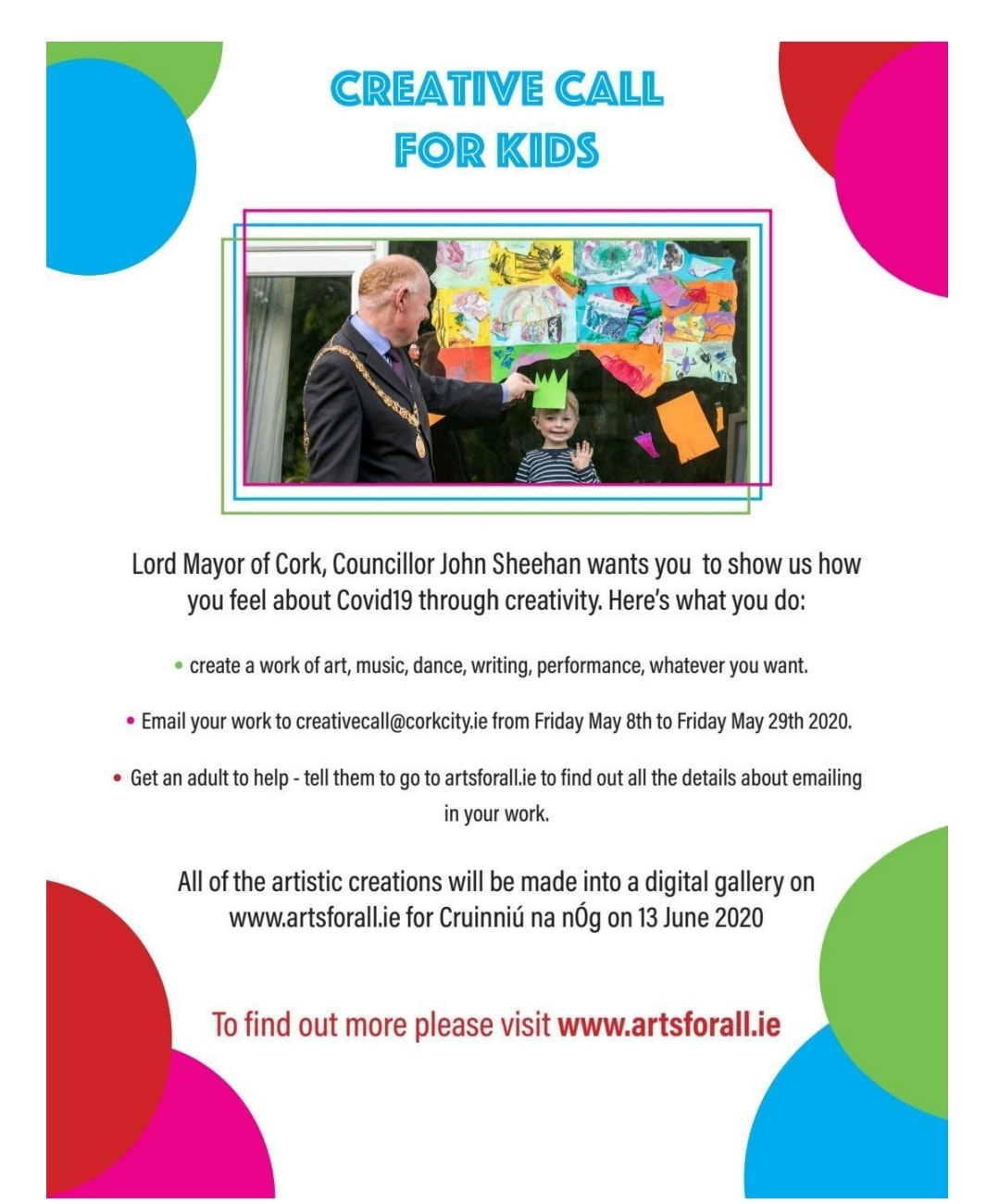
Last weeks Gaeilge corrections:
|
|
| ||||||||||||||||||||||||||||||
Hello children!
We hope that you are all doing well and are managing to get out to play outside everyday. It's so important that you keep yourselves happy and healthy during this time.
We are so impressed with the work that you have sent us in so well done to all of you. We thought it might be a nice idea to share a few of the samples of work that we received so that you can see how one another are doing and what we are all getting up to while staying at home. We hope you all enjoy seeing what some of your classmates did with their projects on Mexico. We could tell that you had lots of fun doing these projects and we enjoyed reading them very much.
Week Beginning Monday 18th May
Hi girls and boys!
We hope that you all had a nice week and enjoyed the sunshine. Thanks to those of you who sent in samples of their work, we love to see how you are all getting on. As we said last week, please feel free to send in any photos of yourself and what you are doing at home (it doesn't have to be schoolwork). We just like for you all to see what one another are up to during this time when you cannot meet up.
We hope that you get on well with the work we have assigned to you for this week and we look forward to hearing from you.
Ms Kelliher and Ms Keohane
We hope that you all had a nice week and enjoyed the sunshine. Thanks to those of you who sent in samples of their work, we love to see how you are all getting on. As we said last week, please feel free to send in any photos of yourself and what you are doing at home (it doesn't have to be schoolwork). We just like for you all to see what one another are up to during this time when you cannot meet up.
We hope that you get on well with the work we have assigned to you for this week and we look forward to hearing from you.
Ms Kelliher and Ms Keohane
Maths: Area
1. OM Pg. 129: Study the yellow box on this page. Then try
questions a, b, c, d and g in the ‘Work it Out’ section below.
2. OM Pg. 130: Read the yellow box and use this as an example to
help you complete q. 1 a – d for 2 or 3 of the shapes given (you
don’t need to do all 4 shapes).
3. Do tutorial 70 and 71 in the Busy at Maths CJ Fallon Student
Resources.
4. For an extra challenge, try the ‘Work it Out’ questions in OM Pg.
131.
Gaeilge
1. Bun go Barr Chapter 19
Listen to the recording below and follow the story in your book as it
is read (pg. 118 and 119). Then practise reading the story yourself.
Using your foclóir or potafocal.com to find the following new words
will help you better understand the story: sléibhte, brothallach,
ceannaire, meán lae, cosán, mála droma, ceo, i gcruachás, toirneach,
fothain.
Try your best to answer the questions in B on pg. 120 and do
activities C to F on pg. 120 and 121. Some guidelines on completing
these activities:
C: Choose the correct verb to begin the sentence.
D: Finish each sentence by filling in the blank using a phrase from
the top of the page: “Lean said orthu” means “They continued/they
carried on”.
E: Again, finish each sentence by filling in the blank using one of the
phrases given. “Dúirt an ceannaire le Dónal fanacht faoin
gcarraig” means “The leader told Dónal to stay under the rock”.
F: Just read the phrase and look at the pictures which illustrate the
phrase.
2. Irregular verbs
Chaite (past tense), Aimsir Láithreach (present tense), Aimsir
Fháistineach (future tense) of each verb is written out.
tense too. The first two are done for you. You can do this in your
copy, you only need to write out the Irish translation and number
your sentences.
1. OM Pg. 129: Study the yellow box on this page. Then try
questions a, b, c, d and g in the ‘Work it Out’ section below.
2. OM Pg. 130: Read the yellow box and use this as an example to
help you complete q. 1 a – d for 2 or 3 of the shapes given (you
don’t need to do all 4 shapes).
3. Do tutorial 70 and 71 in the Busy at Maths CJ Fallon Student
Resources.
4. For an extra challenge, try the ‘Work it Out’ questions in OM Pg.
131.
Gaeilge
1. Bun go Barr Chapter 19
Listen to the recording below and follow the story in your book as it
is read (pg. 118 and 119). Then practise reading the story yourself.
Using your foclóir or potafocal.com to find the following new words
will help you better understand the story: sléibhte, brothallach,
ceannaire, meán lae, cosán, mála droma, ceo, i gcruachás, toirneach,
fothain.
Try your best to answer the questions in B on pg. 120 and do
activities C to F on pg. 120 and 121. Some guidelines on completing
these activities:
C: Choose the correct verb to begin the sentence.
D: Finish each sentence by filling in the blank using a phrase from
the top of the page: “Lean said orthu” means “They continued/they
carried on”.
E: Again, finish each sentence by filling in the blank using one of the
phrases given. “Dúirt an ceannaire le Dónal fanacht faoin
gcarraig” means “The leader told Dónal to stay under the rock”.
F: Just read the phrase and look at the pictures which illustrate the
phrase.
2. Irregular verbs
- Moving on from last week, study the next 4 verbs in the
Chaite (past tense), Aimsir Láithreach (present tense), Aimsir
Fháistineach (future tense) of each verb is written out.
- To practise using these verbs, fill in the correct verb in the blank
tense too. The first two are done for you. You can do this in your
copy, you only need to write out the Irish translation and number
your sentences.
| sentences_to_practise_irregular_verbs_abair_feic_tar_tabhair.docx | |
| File Size: | 14 kb |
| File Type: | docx |
English:
Word Wizard Persuasive Writing
Grammar pg 95 Acivities A, B (orally) and C
Persuasive Writing 2: WW; Comprehension pgs 97 and 98
Pg 97 Act A: looking at the picture for the comprehension on pg 98 make three predictions and write three questions based on the illustrations.
Read pg 98 and go back to activity B on pg 97 to see if your questions were answered and your predictions were correct.
Do Activities A and B pg. 99
Word Wizard Persuasive Writing
Grammar pg 95 Acivities A, B (orally) and C
Persuasive Writing 2: WW; Comprehension pgs 97 and 98
Pg 97 Act A: looking at the picture for the comprehension on pg 98 make three predictions and write three questions based on the illustrations.
Read pg 98 and go back to activity B on pg 97 to see if your questions were answered and your predictions were correct.
Do Activities A and B pg. 99
Cool:
Read and listen chapter 2
Now that you have listened to the first two chapters we would like you to write a short summary of each one. A summary expresses and covers the main points of a written piece. For someone who has not read the chapter they should get a clear picture of what they were about through reading the summary.
Read and listen chapter 2
Now that you have listened to the first two chapters we would like you to write a short summary of each one. A summary expresses and covers the main points of a written piece. For someone who has not read the chapter they should get a clear picture of what they were about through reading the summary.
| 20200514_205117_1_.m4a | |
| File Size: | 13212 kb |
| File Type: | m4a |
Spell well: pg.66 Wk 32 acts A and B
SESE:
History
Small World
Read: United Irishmen Rebel on pg 56.
Activities: Small World pg57
Do Acts A3, B 3 & 4,
Discuss activity C 3,
Activity D: Choose 1
Activity E2: There are two bronze statues of Theobald Wolfe Tone in Ireland. One is in Dublin, the other is in Bantry (where Ms. Keohane lives). Look up each one to find out where they are and who designed them.
Wolfe Tone Dublin: http://www.talkingstatuesdublin.ie/statues/wolfe-tone/
Wolfe Tone statue Bantry https://statues.vanderkrogt.net/object.php?webpage=ST&record=ie194
Both statues although of the same person are quite different. Discuss which one you prefer and why.
I have included a short summary of the events based around the French Armadas failed attempt to land in Bantry. In it are some photos of myself (Ms. Keohane) and Ivy on Wolfe Tone Square in Bantry beside the statue of Theobald Wolfe Tone and another of the Anchor of one of the French Armada ships that were wrecked in Bantry Bay.
Read about Wolfe Tones first attempt to fight against British rule in 1796: The French Armada in Bantry Bay (see attachment below)
Listen to audio of historian talking about the French Armadas unsuccessful voyage in 1796:
(Audio attached below)
Read (optional) and examine images: https://kids.kiddle.co/Irish_rebellion_of_1798
History
Small World
Read: United Irishmen Rebel on pg 56.
Activities: Small World pg57
Do Acts A3, B 3 & 4,
Discuss activity C 3,
Activity D: Choose 1
Activity E2: There are two bronze statues of Theobald Wolfe Tone in Ireland. One is in Dublin, the other is in Bantry (where Ms. Keohane lives). Look up each one to find out where they are and who designed them.
Wolfe Tone Dublin: http://www.talkingstatuesdublin.ie/statues/wolfe-tone/
Wolfe Tone statue Bantry https://statues.vanderkrogt.net/object.php?webpage=ST&record=ie194
Both statues although of the same person are quite different. Discuss which one you prefer and why.
I have included a short summary of the events based around the French Armadas failed attempt to land in Bantry. In it are some photos of myself (Ms. Keohane) and Ivy on Wolfe Tone Square in Bantry beside the statue of Theobald Wolfe Tone and another of the Anchor of one of the French Armada ships that were wrecked in Bantry Bay.
Read about Wolfe Tones first attempt to fight against British rule in 1796: The French Armada in Bantry Bay (see attachment below)
Listen to audio of historian talking about the French Armadas unsuccessful voyage in 1796:
(Audio attached below)
Read (optional) and examine images: https://kids.kiddle.co/Irish_rebellion_of_1798
| french_armada_in_bantry_bay.docx | |
| File Size: | 3121 kb |
| File Type: | docx |
| n71_6_copy_2.m4a | |
| File Size: | 20328 kb |
| File Type: | m4a |
Geography:
Small World pg 32 & Activities
Round 3 of Quiz Physical Feature of Europe. We would like you to make up 5 more quiz questions to test your friends/families knowledge of the physical features of Europe.
Use following links to help:
Mount Vesuvius: https://youtu.be/bWR2Qlwa3wU
Worldwide mountain ranges: https://youtu.be/01qzgULTduQ
What is a fiord?: https://youtu.be/rJrVP43MZYI
Small World pg 32 & Activities
Round 3 of Quiz Physical Feature of Europe. We would like you to make up 5 more quiz questions to test your friends/families knowledge of the physical features of Europe.
Use following links to help:
Mount Vesuvius: https://youtu.be/bWR2Qlwa3wU
Worldwide mountain ranges: https://youtu.be/01qzgULTduQ
What is a fiord?: https://youtu.be/rJrVP43MZYI
Science
Volcanoes.
In geography we learned about mountain ranges and volcanoes in Europe.
Some volcanoes like Mount Vesuvius in Italy are active and very dangerous because they could erupt at any time. Others like Mount Kilimanjaro in Tanzania are dormant, this means they have not erupted for a long time but are expected to erupt again. Extinct volcanoes will never erupt again. Our very own Croghan Hill in Co.Offaly is an example of an extinct volcano.
Learn about volcanoes and their formation:
Read: http://www.primaryhomeworkhelp.co.uk/mountains/volcanoes.htm
Watch: https://youtu.be/lAmqsMQG3RM
Volcanoes.
In geography we learned about mountain ranges and volcanoes in Europe.
Some volcanoes like Mount Vesuvius in Italy are active and very dangerous because they could erupt at any time. Others like Mount Kilimanjaro in Tanzania are dormant, this means they have not erupted for a long time but are expected to erupt again. Extinct volcanoes will never erupt again. Our very own Croghan Hill in Co.Offaly is an example of an extinct volcano.
Learn about volcanoes and their formation:
Read: http://www.primaryhomeworkhelp.co.uk/mountains/volcanoes.htm
Watch: https://youtu.be/lAmqsMQG3RM
Drama:
Cartoon Characters
Snoopy, Charlie Brown and the Peanut Gang.
See the activities below (2 pages).
| snoopy_characters_-_activity.pdf | |
| File Size: | 386 kb |
| File Type: | |
Art
Snoopy
Try your hand at drawing Snoopy while watching the
tutorial at this link: https://youtu.be/dQ2vZMP3AXg
Snoopy
Try your hand at drawing Snoopy while watching the
tutorial at this link: https://youtu.be/dQ2vZMP3AXg
Music:
‘Peanuts’ Theme Song
Listen to the ‘Peanuts’ theme song on Youtube:
https://www.youtube.com/watch?v=jPgewHpf-q4
Think about the following questions and answer them
orally:
What instruments can you hear in the ‘Peanuts’ theme tune?
What words would you use to describe this piece of music? Is the
tempo slow or fast?
How does it make you feel? Happy, sad excited, bored?
Think of the theme songs that play at the beginning of some of
the t.v. shows you watch. There may be words and music, or music
only. Do you know any of these theme songs off by heart? Do you
become excited to watch the show when you hear the theme tune
start to play?
‘Peanuts’ Theme Song
Listen to the ‘Peanuts’ theme song on Youtube:
https://www.youtube.com/watch?v=jPgewHpf-q4
Think about the following questions and answer them
orally:
What instruments can you hear in the ‘Peanuts’ theme tune?
What words would you use to describe this piece of music? Is the
tempo slow or fast?
How does it make you feel? Happy, sad excited, bored?
Think of the theme songs that play at the beginning of some of
the t.v. shows you watch. There may be words and music, or music
only. Do you know any of these theme songs off by heart? Do you
become excited to watch the show when you hear the theme tune
start to play?
SPHE
Webwise
See the worksheet below based on sharing information and photos
online. Look at and read through the worksheet, then use your copy to
answer the questions at the end of the worksheet. (No need to print
the page).
Webwise
See the worksheet below based on sharing information and photos
online. Look at and read through the worksheet, then use your copy to
answer the questions at the end of the worksheet. (No need to print
the page).
| sphe.jpg | |
| File Size: | 3757 kb |
| File Type: | jpg |
SPHE/Mindfulness
Breathing
Breathing is a great way to help us to relax and cope with stressful or worrying situations. Knowing different breathing techniques can be very useful and used as a way to help us to cope with our feelings and emotions, especially during times of stress. This week we would like you to try the Elephant Breathing technique and also the Take 5 breathing technique. Practice each one a few times during the week and note how you feel before and after practicing each one.
Breathing
Breathing is a great way to help us to relax and cope with stressful or worrying situations. Knowing different breathing techniques can be very useful and used as a way to help us to cope with our feelings and emotions, especially during times of stress. This week we would like you to try the Elephant Breathing technique and also the Take 5 breathing technique. Practice each one a few times during the week and note how you feel before and after practicing each one.
|
| ||||||||||||
Religion:
Grow in Love; Lesson 4 Living a Spirit filled life pgs. 94 – 97
Religion/Music:
Listen: Spirit Filled Day https://youtu.be/adHR58h4WIc
Grow in Love; Lesson 4 Living a Spirit filled life pgs. 94 – 97
Religion/Music:
Listen: Spirit Filled Day https://youtu.be/adHR58h4WIc
P.E.:
Dance Monkey was a very popular song in 5th class this year. Try dance along to this KidsbopKidz video:
https://www.youtube.com/watch?v=FiXCxfWWwPo
Dance Monkey was a very popular song in 5th class this year. Try dance along to this KidsbopKidz video:
https://www.youtube.com/watch?v=FiXCxfWWwPo
Last weeks Irish corrections:
| img_20200514_122945.jpg | |
| File Size: | 7114 kb |
| File Type: | jpg |
Week Beginning Monday 11th May
Hi boys and girls,
We hope you are all keeping well. The sunshine over the weekend was lovely and we hope you were able to get outside and enjoy it. If any of you would like to send us some photos that you would like us to share here on the website we would be very glad to receive them. It can be a photo of some of the work you are doing at home or it can be any news you would like to share with the rest of the class. We miss you all very much. Ms Keohane and Ms Kelliher
We hope you are all keeping well. The sunshine over the weekend was lovely and we hope you were able to get outside and enjoy it. If any of you would like to send us some photos that you would like us to share here on the website we would be very glad to receive them. It can be a photo of some of the work you are doing at home or it can be any news you would like to share with the rest of the class. We miss you all very much. Ms Keohane and Ms Kelliher
Maths: Area
1. In your OM textbook, go to pg. 126. Read the yellow box and complete questions 1 and 2.
2. Next, do tutorial 68 and 69 in the Busy at Maths CJ Fallon Student Resources.
3. Music and Maths: Click on the following link to learn about Japanese taiko drums and area: https://dynamath.scholastic.com/issues/2017-18/030118/beats-of-art.html#950L
On this website, you can read about the drums, watch the video up to 1:22, look at the poster and do the activities.
4. Go back to your OM textbook, do pg. 127 (read the yellow box and do q. 1) and pg. 128 (q. 4 only).
Gaeilge
1. Irregular verbs
View the first slide in the PowerPoint below, then study the verbs in the next 4 slides (bí, faigh, déan, téigh). You can see that the Aimsir Chaite (past tense), Aimsir Láithreach (present tense), Aimsir Fháistineach (future tense) of each verb is written out.
irregular_verbs_all_tenses_written_out.pptx
To practise using these verbs, try to write 1 or 2 short sentences for each verb using any of the tenses. For example, for ‘faigh’ you could write: Fuair sé liathróid. Gheoghaidh said milseáin.
2. Bun go Barr Chapter 17 ‘Seachtain na Leabhar’ pg. 111 J
Put the words and phrases into the correct order to make sentences. Note that sentences in Irish usually start with a verb, then the subject (person/people), and often finish with the ‘when’ part of the sentence. Sometimes the ‘when’ part can come first, then the verb, then the subject.
English
Persuasive Writing
Last week we began learning about persuasive writing. In history we are learning about the inequalities faced by the poorest people in society in France which in part led to the revolution. Imagine you are a peasant in France during this time. Write a letter to King Louis XVI trying to persuade him to reduce taxes and improve living conditions for the poor.
Some words/phrases which may help you:
1. In your OM textbook, go to pg. 126. Read the yellow box and complete questions 1 and 2.
2. Next, do tutorial 68 and 69 in the Busy at Maths CJ Fallon Student Resources.
3. Music and Maths: Click on the following link to learn about Japanese taiko drums and area: https://dynamath.scholastic.com/issues/2017-18/030118/beats-of-art.html#950L
On this website, you can read about the drums, watch the video up to 1:22, look at the poster and do the activities.
4. Go back to your OM textbook, do pg. 127 (read the yellow box and do q. 1) and pg. 128 (q. 4 only).
Gaeilge
1. Irregular verbs
View the first slide in the PowerPoint below, then study the verbs in the next 4 slides (bí, faigh, déan, téigh). You can see that the Aimsir Chaite (past tense), Aimsir Láithreach (present tense), Aimsir Fháistineach (future tense) of each verb is written out.
irregular_verbs_all_tenses_written_out.pptx
To practise using these verbs, try to write 1 or 2 short sentences for each verb using any of the tenses. For example, for ‘faigh’ you could write: Fuair sé liathróid. Gheoghaidh said milseáin.
2. Bun go Barr Chapter 17 ‘Seachtain na Leabhar’ pg. 111 J
Put the words and phrases into the correct order to make sentences. Note that sentences in Irish usually start with a verb, then the subject (person/people), and often finish with the ‘when’ part of the sentence. Sometimes the ‘when’ part can come first, then the verb, then the subject.
English
Persuasive Writing
Last week we began learning about persuasive writing. In history we are learning about the inequalities faced by the poorest people in society in France which in part led to the revolution. Imagine you are a peasant in France during this time. Write a letter to King Louis XVI trying to persuade him to reduce taxes and improve living conditions for the poor.
Some words/phrases which may help you:
Cool
This week we are going to begin studying a novel by Michael Morpurgo called Cool. Just like we would do in class one of the 5th class teachers is going to read a chapter to you each week and we will assign you some activities to go along with it. This week you have the soothing tones of Ms Kelliher to enjoy.
It took me about 5 attempts just to say Michael Morpurgo...his name is like some sort of tongue twister! I finally managed it and the rest went fairly smoothly with just a few small mistakes which I hope you’ll forgive.
Before you listen to the audio file please first look at the image of the front cover of the book.Think about the following:
This week we are going to begin studying a novel by Michael Morpurgo called Cool. Just like we would do in class one of the 5th class teachers is going to read a chapter to you each week and we will assign you some activities to go along with it. This week you have the soothing tones of Ms Kelliher to enjoy.
It took me about 5 attempts just to say Michael Morpurgo...his name is like some sort of tongue twister! I finally managed it and the rest went fairly smoothly with just a few small mistakes which I hope you’ll forgive.
Before you listen to the audio file please first look at the image of the front cover of the book.Think about the following:
- What kind of tone do you expect the book to have- happy, sad, scary etc
- What themes do you think the book might have?
- Do you have any predictions about what the story might be about?
- Do you find the cover appealing? If you saw it in the bookshop would you pick it up? Why/Why not?
Now look at the image of the back cover of the book and read the blurb. Think about the following:
- Have your predictions changed from when you looked just at the front cover?
- Do you think the story will have a happy ending?
- Should all stories have a happy ending? Why/Why not.
Now it’s time to listen to the audio recording. Before each chapter there is a newspaper article. This is what you will hear first followed by chapter 1. Enjoy!
cool_chapter_1.mp3
After listening
Think about:
In your copy draw a sketch of the four main characters (Robbie, Mom, Ellie and Lucky). Use a new page for each character.
Write a brief description of each character. You may do this is note form i.e. picture at the top and a short paragraph below or you may also draw the character in the centre of the page and do a spider web type design as shown.
cool_chapter_1.mp3
After listening
Think about:
- Who are the main characters in this story?
- What do we know about them so far?
In your copy draw a sketch of the four main characters (Robbie, Mom, Ellie and Lucky). Use a new page for each character.
Write a brief description of each character. You may do this is note form i.e. picture at the top and a short paragraph below or you may also draw the character in the centre of the page and do a spider web type design as shown.
Spell Well: Week 31 As we normally do in class learn every second spelling in the boxes 109- 112 (16 in total) You may complete the activities if you wish
SESE
History
This week we will be continuing our study of World Revolutions. This week we will be focusing on The French Revolution.
In your Small World History begin reading on p 54 from the paragraph entitled “Social Problems in France” and continue reading until the end of the paragraph on page 56 entitled “Reign of Terror”
You may also like to watch the following YouTube videos. They contain similar information to what is in your book but the animation may help you to understand and retain it.
What caused the French Revolution https://youtu.be/PBn7iWzrKoI
The French Revolution in a Nutshell https://youtu.be/VEZqarUnVpo
Complete Activities: p 57 A (1-40, B (1-3) and C (1 and 2)
Geography
This week we will continue our study of the Physical Features of the World this time focusing on Asia.
Read pages 30 and 31 in your Small World Geography and Science and complete the activities on page 31.
Time for round 2 of the quiz! How did your family/friends fair in their knowledge of American physical features? Will they do as well (or better) when it comes to the physical features of Asia? Research one and make up 5 questions.
The following links may be helpful:
Dead Sea: https://kids.britannica.com/kids/article/Dead-Sea/346106
Mount Everest: https://kids.kiddle.co/Mount_Everest
The Mariana Trench: https://kids.kiddle.co/Mariana_Trench
Krakatoa: https://kids.britannica.com/kids/article/Krakatoa/623888
Science
Throughout the year we have been learning a lot about Climate change and making changes to our everyday lives in an attempt to reduce our carbon footprint and to slow the rate of climate change.
This week we want you to think about some of the waste we produce in our homes. What happens to it when we put it in the bin? You probably have multiple bins in your homes such as compost, food waste (brown bin), recycling and rubbish.
A lot of our waste ends up in landfill otherwise known as the dump. Some waste will biodegrade.
The definition of “biodegrade”: is to decay and become absorbed by the surrounding environment.
If you would like to learn more about what biodegradable means you could watch this YouTube video: https://youtu.be/jx-6xUxFhv8
You may like to try the following experiment to test which types of waste biodegrade and which do not.
Important!! Please check with an adult before you go digging up the garden!!
Materials Needed
- An area of ground that you have permission to dig up
- A small trowel or shoval for digging
- Some string
- An assortment of rubbish (e.g. food wrapper, some leftovers from lunch-apple, lettuce, crusts etc, some packaging-styrofoam, plastic wrap, cotton fabric, tinfoil, paper, cardboard, basically anything from your bin but try to have a variety in type)
- A sheet of paper/copybook
Prediction
Make a list in your copy of the items you have chosen to bury.
If you think an item will biodegrade mark it with the letter B for Biodegradable.
If you think an item won’t biodegrade mark it with the letter N for Non-Biodegradable.
Next to each item that you have marked as biodegradable write how long you think it will take to biodegrade.
e.g. Tinfoil N
Apple core B 2 weeks
Procedure
- If possible dig up a space big enough so that you can bury each item on its own.
- Give the soil a good dig/ turning the soil over and then dig about 6 inches down.
- Use the string to make a grid so that your area is divided into sections. Draw the grid in your copy to keep track of where you buried each item
4.Cover with soil
The Waiting Game
So now is the test of your patience. It’s best to wait at least a month before checking for your results and then if there are some things still remaining wait up to another 2 months. (3 months in total).
Religion: Grow in Love: Theme 8 The Holy Spirit: Lesson 3: Come Holy Spirit pages 90 – 93
Art: Climate Change Gallery
At the following link, you can view an exhibition of art work done by children on the topic of climate change: https://www.theguardian.com/environment/gallery/2008/oct/21/climatechange
Think about some of the following questions as you look at each piece of artwork:
•What is the first thing you notice in this picture? Why does that stand out to you?
•What words would you use to describe this painting?
•How is this picture different from real life?
•What do you think is the most important part of this picture? Why?
•What do you think this painting is about? Why do you think that?
•Why do you think other people should see this work?
•What do you think is important to remember about this painting?
•How well did the artist do on this work? What makes you say that?
Drama: Alphabet game
Use a copy or a blank sheet of paper for this activity. If using a copy, draw a line down the middle of your page. As in the picture below, write each letter of the alphabet on the left hand side going down the page. Using the category objects (3D things you can touch), fill in something for each letter of the alphabet. For example, a could be apron, b could be blackboard, c could be coconut. Why not time yourself if you want to see how fast you can complete the list. You could try the game again using names, and if you timed yourself already see if you can beat your time.
Examples: A could be Aaron, b could be Brian, c could be Catherine.
The Waiting Game
So now is the test of your patience. It’s best to wait at least a month before checking for your results and then if there are some things still remaining wait up to another 2 months. (3 months in total).
Religion: Grow in Love: Theme 8 The Holy Spirit: Lesson 3: Come Holy Spirit pages 90 – 93
Art: Climate Change Gallery
At the following link, you can view an exhibition of art work done by children on the topic of climate change: https://www.theguardian.com/environment/gallery/2008/oct/21/climatechange
Think about some of the following questions as you look at each piece of artwork:
•What is the first thing you notice in this picture? Why does that stand out to you?
•What words would you use to describe this painting?
•How is this picture different from real life?
•What do you think is the most important part of this picture? Why?
•What do you think this painting is about? Why do you think that?
•Why do you think other people should see this work?
•What do you think is important to remember about this painting?
•How well did the artist do on this work? What makes you say that?
Drama: Alphabet game
Use a copy or a blank sheet of paper for this activity. If using a copy, draw a line down the middle of your page. As in the picture below, write each letter of the alphabet on the left hand side going down the page. Using the category objects (3D things you can touch), fill in something for each letter of the alphabet. For example, a could be apron, b could be blackboard, c could be coconut. Why not time yourself if you want to see how fast you can complete the list. You could try the game again using names, and if you timed yourself already see if you can beat your time.
Examples: A could be Aaron, b could be Brian, c could be Catherine.
Optional:
There are a variety of activities at the following link, there may be something you find interesting in one or more of the sections http://www.helpmykidlearn.ie/activities/10-12
For the Harry Potter fans in the class, you can listen to Daniel Radcliffe reading the first chapter of ‘Harry Potter and the Philosopher’s Stone’ at this link: https://www.wizardingworld.com/chapters/reading-the-boy-who-lived
There will be more chapters being read by different people in the coming weeks. On this website there are also Harry Potter-themed activities available.
There are a variety of activities at the following link, there may be something you find interesting in one or more of the sections http://www.helpmykidlearn.ie/activities/10-12
For the Harry Potter fans in the class, you can listen to Daniel Radcliffe reading the first chapter of ‘Harry Potter and the Philosopher’s Stone’ at this link: https://www.wizardingworld.com/chapters/reading-the-boy-who-lived
There will be more chapters being read by different people in the coming weeks. On this website there are also Harry Potter-themed activities available.
Knitting
For those of you who would like another knitting project to work on this website has some nice easy ones. The frog is very similar to the swamp monsters we did earlier in the school year and can be changed to lots of other animals by using a different colour wool and adding different types of legs etc. Please don't hesitate to get in touch if you need and help or advice and we'd love to see photos too!
https://www.mykidstime.com/things-to-do/6-easy-knitting-projects-for-kids-and-beginners/
For those of you who would like another knitting project to work on this website has some nice easy ones. The frog is very similar to the swamp monsters we did earlier in the school year and can be changed to lots of other animals by using a different colour wool and adding different types of legs etc. Please don't hesitate to get in touch if you need and help or advice and we'd love to see photos too!
https://www.mykidstime.com/things-to-do/6-easy-knitting-projects-for-kids-and-beginners/
Corrections for Gaeilge for Week Beginning 4th May
Cursive writing
Please find below a link to the correct letter formation for the cursive writing we use in Scoil Chroí Íosa should you need it for reference.
handwriting_cursive.jpg
handwriting_cursive.jpg
Week Beginning Monday 4th May
Hi boys and girls,
We hope that you all had a good week and you are managing to be patient and understanding of all the restrictions we are under at the moment. It is especially hard for your parents who have all the added pressure of work, cooking, cleaning, being teachers and most importantly keeping their children safe and well so please try your best to help out at home and be on good behavior.
We hope the schoolwork went well for you this week and that you enjoyed working on your Mexico projects.
When doing your work each day remember to keep in mind the tips we gave you last week.
Keeping a timetable that includes breaks will help you to stay focused on your tasks while you are working and also tackling your least favourite subject first followed by a break and then an activity you enjoy is always a good idea. Don’t let yourselves get bogged down by work, if something is too difficult, take a break and try again later. All we ask is that you try your best with the work we give you.
Have a good week : )
- Maths:
- Naming the parts of a circle: On the worksheet below, look at the parts of the circle that are marked a, b, c, d and e. In your copy, write the name of each part along with the matching letter (use the words in the boxes at the bottom to help you).
- CJ Fallon video: Watch tutorial 86 in the ‘Busy at Maths’ student resources.
- Constructing circles ‘Operation Maths’ pg. 58 and pg. 59: Please read the yellow box on pg. 58 and then do the following questions: 1 (a) and (c), 2 (a) and (c), 3 (pick one circle and point the parts out orally), Work It Out (a) and (b).
You can use both a ruler and a compass to draw circles using this tool. (Click and drag the blue handles to move the pencil and point, and click on the black part to draw the circle.)
- Length; Perimeter: Watch CJ Fallon tutorial 59 showing how to calculate perimeter. Then try up to 10 questions at the following link: https://ie.ixl.com/math/class-5/perimeter
| label_parts-of-a-circle_p.2_5th_class.pdf | |
| File Size: | 43 kb |
| File Type: | |
- Gaeilge
Listen to the recording below and follow the story in your book as it is read (pg. 106 and 107). Then practise reading the story yourself. Using your foclóir or potafocal.com to find the following new words will help you better understand the story: comórtas, údar, margadh, díospóireacht, lucht féachana, aontaím, filíocht. (Cur amú ama means ‘waste of time.)
Try your best to answer the questions in B on pg. 126 and do activities C to F on pg.108 and 109. Some guidelines on completing these activities:
C: Choose the correct verb to begin the sentence.
D: Fill in the blanks by continuing the sentence and using the phrases at the top: Is brea liom a bheith ag... (‘I like doing/playing’)
E: Just read the phrase and look at the pictures which illustrate the phrase (‘The children/teacher/Mam and Dad really enjoyed the ____).
F: Use some of the questions to have a conversation as Gaeilge, or simply answer the questions orally one at a time.
| gaeilge_chp._17.m4a | |
| File Size: | 1415 kb |
| File Type: | m4a |
- English:
Word Wizard Unit 16
This unit is about Persuasive Writing. When you try to persuade someone you are trying to get them to agree with your way of thinking about something. An example of this would be if you tried to persuade your parents to let you stay up later. You would put forward your reasons or arguments as to why you think you should be allowed and your hope (or purpose) would be to convince your parents that it would be a good idea.
We use a lot of persuasive language when we debate also. You could have an informal debate with your friend e.g. you argue about which soccer team is best and why. There is also formal debating and competitions. During formal debating there are two teams and they are presented with a statement e.g. School children should wear uniforms. Then one team would debate in favour of the statement i.e. they agree that school children should wear uniforms and they put forward all their reasons why. The other team would debate against the statement i.e. that school children should not wear uniforms. A judge or panel of judges would listen to both teams and decide which team gave the most convincing argument i.e. which team was most persuasive.
In your Word Wizard read page 92 and complete the activities A, B, C and D on page 93
Spell Well: Week 30. As we normally do in class learn every second spelling in the boxes 105- 108 (16 in total) You may complete the activities if you wish
- S.E.S.E (History, Geography, Science)
History: World revolutions Unit 18
Read: pg 52- 54
Activity: Do the questions on pg 54. Write full answers.
Dig Deeper: Find out more about The Boston Tea Party
Go to: https://www.ducksters.com/history/boston_tea_party.php
Read the page or scroll down the page to listen to the audio clip.
Take the Boston Tea party quiz in the Activities section at the bottom of the page.
Geography: Physical features of Europe and the World Unit 5 Small World
Read and study pages 28-30 which focus on North and South America.
Do the Activity on pg 30. Please date and label work using a red pen, use your best handwriting and give full answers.
Further Research: Please research one of the American physical features.
Make up 5 or more questions and see if your parents/siblings know the answers. It could also be fun to quiz a friend/classmate on Facetime or video call.
.
Some links that may help you:
The Grand Canyon: https://www.youtube.com/watch?v=oZZEJMtLOKU
Angel Falls: https://www.youtube.com/watch?v=c_dUdfnZyao
The Amazon River: https://www.youtube.com/watch?v=c_dUdfnZyao
https://www.youtube.com/watch?v=JEsV5rqbVNQ
The Rocky Mountains: https://www.youtube.com/watch?v=Fd_XqYE2BWY
Science: Benjamin Franklin
In history you have been learning about the American Revolution and the Declaration of Independence.
One of the people involved in this was Benjamin Franklin. As well as being a respected political leader he was also a writer, a scientist and an inventor. He invented a great many things such as swim fins, the
Franklin stove, bifocal glasses and the lightning rod. The lightning rod protected buildings from being damaged by lightning.
Read the attached sheet on Benjamin Franklin and lightning.
Then watch this video explaining the science behind Thunder and Lightning:
https://youtu.be/fEiVi9TB_RQ
You could then have a look at this website and try these simple experiments on static electricity.
https://www.sciencekids.co.nz/experiments/staticelectricity.html
| au-sc-2460-benjamin-franklin-theorist-fact-file_ver_5.pdf | |
| File Size: | 872 kb |
| File Type: | |
- Religion:
Learn: The seven Gifts of The Holy Spirit pg 88
- P.E.
Rainbow Yoga: https://www.youtube.com/watch?v=dF7O6-QabIo
You can also continue to do any Joe Wicks lessons if you wish.
PE with Joe: https://www.youtube.com/watch?v=4OT0feX8ld8
- P.E./Music:
Some suggestions are as follows:
Go noodle:
Trolls https://www.youtube.com/watch?v=KhfkYzUwYFk
Don’t Read Like a Robot: https://www.youtube.com/watch?v=xjtPMiumixA
Sonic: https://www.youtube.com/watch?v=aZru-M3TUlI
Milkshake: https://www.youtube.com/watch?v=dNL6RwymoNg
- Music:
https://www.youtube.com/watch?v=XUJWDA5Y0Hs
- Art
https://www.gettyimages.ie/photos/amazon-rainforest-frogs?mediatype=photography&phrase=amazon%20rainforest%20frogs&sort=mostpopular#
Now see if you can master an origami frog, click the link below:
https://www.itsybitsyfun.com/blog/how-to-make-an-origami-frog-that-jumps/#_a5y_p=1717195
- Drama
Please see the Drama activity below based on the American Revolution.
| american_revolution.docx | |
| File Size: | 11 kb |
| File Type: | docx |
Optional:
If you would like to challenge yourself with some brainteasers, have a look at the ‘Maths brain teasers for kids’ category at the following link https://www.prodigygame.com/blog/brain-teasers-for-kids/#math – try the ‘Math riddles’ and ‘Pattern problems’.
Optional:
We really enjoyed learning all about France and learning little bits of French in February. A friend of mine offers free French classes for children on Zoom at 11 a.m. on Saturday mornings. This week she will be revising Les Sports and also plan to play a game and learn a new song about Une Souris Verte (a green mouse).
If you wish to join her class this link will work tomorrow and for all her future Saturday morning classes:
Join Zoom Meeting
https://zoom.us/j/102978701?pwd=ZHhwUkRtdUF6QnUyckZnbjRzM24yQT09
Meeting ID: 102 978 701
Password: 184414
Optional:
Knitting: For those of you who are interested in knitting and currently working on knitting projects, continue to do so and send us in photos of what you have made, we'd love to see your work.
Last weeks Irish homework:
Find below the answers to last weeks verb practice.
If you would like to challenge yourself with some brainteasers, have a look at the ‘Maths brain teasers for kids’ category at the following link https://www.prodigygame.com/blog/brain-teasers-for-kids/#math – try the ‘Math riddles’ and ‘Pattern problems’.
Optional:
We really enjoyed learning all about France and learning little bits of French in February. A friend of mine offers free French classes for children on Zoom at 11 a.m. on Saturday mornings. This week she will be revising Les Sports and also plan to play a game and learn a new song about Une Souris Verte (a green mouse).
If you wish to join her class this link will work tomorrow and for all her future Saturday morning classes:
Join Zoom Meeting
https://zoom.us/j/102978701?pwd=ZHhwUkRtdUF6QnUyckZnbjRzM24yQT09
Meeting ID: 102 978 701
Password: 184414
Optional:
Knitting: For those of you who are interested in knitting and currently working on knitting projects, continue to do so and send us in photos of what you have made, we'd love to see your work.
Last weeks Irish homework:
Find below the answers to last weeks verb practice.
| verb_practice_-_sentences_to_translate.docx | |
| File Size: | 14 kb |
| File Type: | docx |
Week Beginning Mon 27th April
Hi girls and boys,
We hope you are all keeping well and we send you our best wishes. We imagine you are missing each other very much at this stage and we’re sure it is difficult to do your school work when you are at home.
A few things that might make it easier would be:
- Choosing the subjects you think you need to work on most and taking a break from subjects you are stronger at.
-Reducing the number of questions/sums you answer. Doing every second question is usually preferable to doing the first few as they tend to get harder/more diverse further on.
-Doing things orally instead of writing everything down.
Maths:
1. Do pg. 55 of ‘Operation Maths’ (Chapter 7: The Circle) Remember: A polygon is a 2D shape with straight sides.
Do pg. 56 Q. 4 and 5 also and try to learn the parts of the circle that are explained in the yellow box.
On pg. 57, read the yellow box and then try Q. 1 underneath – Count all the squares that are mostly or fully inside the circle.
On pg. 58, do Q. 2 (b) and 2 (d) and Q. 3 (a) and 3 (d) – Draw a picture for 3 (d) if you think that will help you.
2. Click on the following links and answer 4 or 5 questions in each activity to check what you know about length: https://ie.ixl.com/math/class-5/choose-the-appropriate-metric-unit-of-measure
https://ie.ixl.com/math/class-5/compare-and-convert-metric-units-of-length
Measure and record the length of some objects at home using your ruler, you can also use a tape measure if you have one at home but don’t worry if not!
Gaeilge
Bun go Barr: Léigh an scéal ar leathanach 124 agus 125 arís. Read the story on page 124 and 125 again.
Try your best with the below activities on pages 128 and 129:
G and H: G is showing adjectives which are the opposite, and H is about using them to fill in the blanks.
I: Use the words and phrases to fill in the blanks in the story. This activity might be hard but try to fill in any you know first and come back to the others if you can.
J: These are labelled pictures of special occasions, 1 to 3 is for conversation purposes, you can practise asking the question and saying the phrases.
We would like you to do some work on verbs and tenses, there is a study sheet underneath which will help you learn and then there are some sentences to write so you can practice. There is also a game you can play at the following link https://seideansi.ie/an-aimsir-laithreach.php
study_sheet_regular_verbs_3_tenses.pdf
In your copy, translate the following sentences into Irish. You can use your foclóir or potafocal.com.
Aimsir Chaite
Aimsir Fháistineach
English:
You will be doing a lot of reading and writing whilst working on your Mexico project this week therefore the only work we are setting in English is your Spell Well
Spell Well: Week 29. As we normally do in class learn every second spelling in the boxes 101-104 (16 in total) You may complete the activities if you wish.
S.E.S.E. (History/Geography/Science)
You have been learning about Mexico- its history, its geography and its plants and animals (science) and now we would like you to do a project/report on what you have learned. There is plenty of information in your Small World books and you can also use the below resources and websites for more information.
All about Mexico Powerpoint all_about_mexico_powerpoint.pptx
All about Mexico Fact Cards all_about_mexico_fact_cards.pdf
https://kids.nationalgeographic.com/explore/countries/mexico/
https://kids.nationalgeographic.com/explore/celebrations/day-of-the-dead/
https://kids.nationalgeographic.com/explore/history/cinco-de-mayo/
https://www.kids-world-travel-guide.com/mexico-facts.html
If you already wrote a report before Easter on the Mayan Civilisation then there is no need to include this in your report on Mexico. If however, you didn’t get around to it before Easter you could include a short paragraph.
Here are some tips to creating your report.
Titles: Important words in titles have a capital letter. Putting a title on your paragraphs will make it easier for the reader to fact find.
Paragraphs: Use a new paragraph for each section of your report. Try not to have long transcribed pieces of text (by that I mean don’t copy out long paragraphs directly from your book or a website). Instead try to choose the most important information and write it in your own words. Some paragraphs will be longer than others of course! See below for suggested headings.
Pictures/Diagrams: Pictures and diagrams can make your report look more visually appealing especially coloured ones. Just make sure to label them i.e. if you include a map of Mexico you should write “Map of Mexico” below it...just like in your Small World.
Fun facts: A cloud bubble or shape with a fun fact can also make your project look well and is a nice way to include information.
Layout: Give yourself plenty of space. This type of project will work nicely as a booklet (a few pages stapled together).
Suggested headings:
Religion: Grow in Love: Theme 8 The Holy Spirit Lesson 1 pages 82-85
Art:
Moving with our circle topic from Maths, try one of the following ideas to create art using circles.
Cielito Lindo: Traditional Mexican Folk Song
Information about the song
The song Cielito Lindo was made popular by Quirino Mendoza y Cortés in 1882. The folk song roughly translated to “Lovely Sweet One,” because cielo is the word for sky or heaven in a term of endearment like sweetheart.
Many famous musicians have covered the song but the traditional version has guitar and a mariachi feel. (Mariachi is a genre of Mexican music.)
Follow the link to hear Pali Guzman sing a modern ukulele version of the traditional song:
https://www.youtube.com/watch?v=J-5T_PF0i54
Do you know any traditional Irish folk songs? See if you can list some orally or write them down.
Drama
The last slide in your PowerPoint on Mexico asks: “Would you like to travel to Mexico?”
I want you to look into the future and imagine that it is summer 2021 and you are going on a trip there. Make a list in your head of some items you would pack in your suitcase.
Fast forward to returning from your holiday – you meet your friend and they ask you about your favourite part(s) of your trip, what would you tell them? (You can do this orally or write some bullet points).
PE
Here is a link to Katie Taylors Home Boxing Circuits if you would like to try them.
https://www.corksports.ie/index.cfm/page/katie-taylor_s-home-boxing-circuits
We hope you are all keeping well and we send you our best wishes. We imagine you are missing each other very much at this stage and we’re sure it is difficult to do your school work when you are at home.
A few things that might make it easier would be:
- Making a timetable for yourself each day that includes fun things between the more difficult work.
- Don’t try to do too much all in one go, short bursts with breaks in between will be easier to manage and less daunting than the idea of sitting down for a long time.
- For some of you starting with something you don’t like and getting it out of the way will be best
- For others starting with something you like will help more (it depends on your personality!)
- If you and your family feel like there is more work than you can get done in a week you could reduce it down.
- Choosing the subjects you think you need to work on most and taking a break from subjects you are stronger at.
-Reducing the number of questions/sums you answer. Doing every second question is usually preferable to doing the first few as they tend to get harder/more diverse further on.
-Doing things orally instead of writing everything down.
- Try not to get too bogged down by something you find very difficult. This is particularly important in maths and Irish. We understand that there may not be an adult in your home that can speak Irish or can explain difficult maths topics. Just do your best. You can e-mail us and we will help you as much as possible and we will revise things whenever we do get back to school.
- Take movement breaks. Think how much our morning run helps us at school....just a quick jump about can help!
Maths:
1. Do pg. 55 of ‘Operation Maths’ (Chapter 7: The Circle) Remember: A polygon is a 2D shape with straight sides.
Do pg. 56 Q. 4 and 5 also and try to learn the parts of the circle that are explained in the yellow box.
On pg. 57, read the yellow box and then try Q. 1 underneath – Count all the squares that are mostly or fully inside the circle.
On pg. 58, do Q. 2 (b) and 2 (d) and Q. 3 (a) and 3 (d) – Draw a picture for 3 (d) if you think that will help you.
2. Click on the following links and answer 4 or 5 questions in each activity to check what you know about length: https://ie.ixl.com/math/class-5/choose-the-appropriate-metric-unit-of-measure
https://ie.ixl.com/math/class-5/compare-and-convert-metric-units-of-length
Measure and record the length of some objects at home using your ruler, you can also use a tape measure if you have one at home but don’t worry if not!
Gaeilge
Bun go Barr: Léigh an scéal ar leathanach 124 agus 125 arís. Read the story on page 124 and 125 again.
Try your best with the below activities on pages 128 and 129:
G and H: G is showing adjectives which are the opposite, and H is about using them to fill in the blanks.
I: Use the words and phrases to fill in the blanks in the story. This activity might be hard but try to fill in any you know first and come back to the others if you can.
J: These are labelled pictures of special occasions, 1 to 3 is for conversation purposes, you can practise asking the question and saying the phrases.
We would like you to do some work on verbs and tenses, there is a study sheet underneath which will help you learn and then there are some sentences to write so you can practice. There is also a game you can play at the following link https://seideansi.ie/an-aimsir-laithreach.php
study_sheet_regular_verbs_3_tenses.pdf
In your copy, translate the following sentences into Irish. You can use your foclóir or potafocal.com.
Aimsir Chaite
- We broke the window.
- They left the house.
- We ate our lunch.
Aimsir Fháistineach
- I will start my homework.
- We will buy sweets.
- Ye will eat the sandwiches.
English:
You will be doing a lot of reading and writing whilst working on your Mexico project this week therefore the only work we are setting in English is your Spell Well
Spell Well: Week 29. As we normally do in class learn every second spelling in the boxes 101-104 (16 in total) You may complete the activities if you wish.
S.E.S.E. (History/Geography/Science)
You have been learning about Mexico- its history, its geography and its plants and animals (science) and now we would like you to do a project/report on what you have learned. There is plenty of information in your Small World books and you can also use the below resources and websites for more information.
All about Mexico Powerpoint all_about_mexico_powerpoint.pptx
All about Mexico Fact Cards all_about_mexico_fact_cards.pdf
https://kids.nationalgeographic.com/explore/countries/mexico/
https://kids.nationalgeographic.com/explore/celebrations/day-of-the-dead/
https://kids.nationalgeographic.com/explore/history/cinco-de-mayo/
https://www.kids-world-travel-guide.com/mexico-facts.html
If you already wrote a report before Easter on the Mayan Civilisation then there is no need to include this in your report on Mexico. If however, you didn’t get around to it before Easter you could include a short paragraph.
Here are some tips to creating your report.
Titles: Important words in titles have a capital letter. Putting a title on your paragraphs will make it easier for the reader to fact find.
Paragraphs: Use a new paragraph for each section of your report. Try not to have long transcribed pieces of text (by that I mean don’t copy out long paragraphs directly from your book or a website). Instead try to choose the most important information and write it in your own words. Some paragraphs will be longer than others of course! See below for suggested headings.
Pictures/Diagrams: Pictures and diagrams can make your report look more visually appealing especially coloured ones. Just make sure to label them i.e. if you include a map of Mexico you should write “Map of Mexico” below it...just like in your Small World.
Fun facts: A cloud bubble or shape with a fun fact can also make your project look well and is a nice way to include information.
Layout: Give yourself plenty of space. This type of project will work nicely as a booklet (a few pages stapled together).
Suggested headings:
- Introduction:This should state what your report is about and include general information such as population, location, language and religion
- Flag
- Capital City
- Climate
- Mountains and Other Physical Features (this would cover things like deserts, jungles etc)
- Rivers and Lakes
- Native Plants and Animals
- Tourist Attractions
- Popular Pastimes and Sport
- Food
- Festivals and Celebrations
- Conclusion (This is a way of summing up your report and putting an end to it)
Religion: Grow in Love: Theme 8 The Holy Spirit Lesson 1 pages 82-85
Art:
Moving with our circle topic from Maths, try one of the following ideas to create art using circles.
- Follow the link to see circle art by Kandinsky. Use this as inspiration to create your own piece of Art. (You can use any materials you like, for example, colouring pencils, markers, crayons, chalk or paint if you have some).https://www.google.com/search?q=kandinsky+circles&safe=strict&rlz=1C1RLNS_enIE760IE760&source=lnms&tbm=isch&sa=X&ved=0ahUKEwiTztz-zo7iAhU2SxUIHbYbBwoQ_AUIDigB&biw=1366&bih=657
- If you have any paint at home, use a kitchen roll or toilet roll holder, paint the bottom and use it to print circles on a blank page, creating a unique design.
Cielito Lindo: Traditional Mexican Folk Song
Information about the song
The song Cielito Lindo was made popular by Quirino Mendoza y Cortés in 1882. The folk song roughly translated to “Lovely Sweet One,” because cielo is the word for sky or heaven in a term of endearment like sweetheart.
Many famous musicians have covered the song but the traditional version has guitar and a mariachi feel. (Mariachi is a genre of Mexican music.)
Follow the link to hear Pali Guzman sing a modern ukulele version of the traditional song:
https://www.youtube.com/watch?v=J-5T_PF0i54
Do you know any traditional Irish folk songs? See if you can list some orally or write them down.
Drama
The last slide in your PowerPoint on Mexico asks: “Would you like to travel to Mexico?”
I want you to look into the future and imagine that it is summer 2021 and you are going on a trip there. Make a list in your head of some items you would pack in your suitcase.
Fast forward to returning from your holiday – you meet your friend and they ask you about your favourite part(s) of your trip, what would you tell them? (You can do this orally or write some bullet points).
PE
Here is a link to Katie Taylors Home Boxing Circuits if you would like to try them.
https://www.corksports.ie/index.cfm/page/katie-taylor_s-home-boxing-circuits
Please find below the answer booklet for Operation Maths 5 which will help you to correct your work each week.
Also find attached the answers for your work in Bun go Barr for the Week Beginning Mon 20th April
bun_go_barr_answers.jpg
bun_go_barr_answers_2.jpg
bun_go_barr_answers3.jpg
operation_maths_answer_booklet.pdf
Also find attached the answers for your work in Bun go Barr for the Week Beginning Mon 20th April
bun_go_barr_answers.jpg
bun_go_barr_answers_2.jpg
bun_go_barr_answers3.jpg
operation_maths_answer_booklet.pdf
Week Beginning Mon 20th April
Dear Parents,
We hope that you had a nice Easter and enjoyed the good weather. Well done in all of your efforts at keeping your families safe and well, we know its not an easy time for any of you. Below is the work that we have assigned for the children for the coming week. We advise that you try to stick to a timetable and include regular breaks so that the children do not feel overwhelmed. Remember there is no pressure to complete all of it, just give your best efforts.
Wishing you all the best and we look forward to hearing from you,
Ms. Keohane and Ms. Kelliher.
We hope that you had a nice Easter and enjoyed the good weather. Well done in all of your efforts at keeping your families safe and well, we know its not an easy time for any of you. Below is the work that we have assigned for the children for the coming week. We advise that you try to stick to a timetable and include regular breaks so that the children do not feel overwhelmed. Remember there is no pressure to complete all of it, just give your best efforts.
Wishing you all the best and we look forward to hearing from you,
Ms. Keohane and Ms. Kelliher.
Maths: 3D Shape
In your ‘Operation Maths’ book, look at and read what’s in the
yellow boxes on pg. 80 and at the top of pg. 81. Instead of doing
the questions underneath, try the following activities:
1. Go to my.cjfallon.ie and click on student resources, select
primary, 5 th class, Maths, ‘Busy at Maths’. (Although this is
not the text book we use, there are tutorial videos and
activities available on the topics we are covering). Please
find tutorial 92 and 93 (on the fifth page of the resources).
2. https://www.studyladder.com/games/activity/naming-
prisms-and-pyramids-4301
Note: A tetrahedron is another name for a triangular-based
pyramid.
Next, read the small yellow box near the end of pg.81 and do the
questions underneath.
Following the steps above for the CJ Fallon resources, do tutorial
94 now. Watch Video below on 3D nets.
Go to pg. 82 of your OM book and do some or all of questions 2
and 3 on your own.
On pg. 83 of OM, you can do Q.5 orally, or in your copy if you like.
Lastly, if you would like to play the following game it will provide
consolidation and revision of the topic:
https://www.topmarks.co.uk/Flash.aspx?a=activity20
In your ‘Operation Maths’ book, look at and read what’s in the
yellow boxes on pg. 80 and at the top of pg. 81. Instead of doing
the questions underneath, try the following activities:
1. Go to my.cjfallon.ie and click on student resources, select
primary, 5 th class, Maths, ‘Busy at Maths’. (Although this is
not the text book we use, there are tutorial videos and
activities available on the topics we are covering). Please
find tutorial 92 and 93 (on the fifth page of the resources).
2. https://www.studyladder.com/games/activity/naming-
prisms-and-pyramids-4301
Note: A tetrahedron is another name for a triangular-based
pyramid.
Next, read the small yellow box near the end of pg.81 and do the
questions underneath.
Following the steps above for the CJ Fallon resources, do tutorial
94 now. Watch Video below on 3D nets.
Go to pg. 82 of your OM book and do some or all of questions 2
and 3 on your own.
On pg. 83 of OM, you can do Q.5 orally, or in your copy if you like.
Lastly, if you would like to play the following game it will provide
consolidation and revision of the topic:
https://www.topmarks.co.uk/Flash.aspx?a=activity20
| nets_of_3d_shapes.mp4 | |
| File Size: | 48348 kb |
| File Type: | mp4 |
Gaeilge:
1. Dán (poem) ‘Frogannaí Beaga’ – Léigh agus abair (Read and
say). Find “maide” using your foclóir or on
http://www.potafocal.com/
1. Dán (poem) ‘Frogannaí Beaga’ – Léigh agus abair (Read and
say). Find “maide” using your foclóir or on
http://www.potafocal.com/
2. Bun go Barr Chapter 20 ‘Amadán Aibreáin’ (April Fools)
Listen to the recording below and follow the story in your
book as it is read (pg. 124 and 125). Then practise reading
the story yourself. Using your foclóir or potafocal.com to
find the following new words will help you better understand
the story: cleas, damhán alla, ag olagón, briste, róshásta,
cothrom.
Listen to the recording below and follow the story in your
book as it is read (pg. 124 and 125). Then practise reading
the story yourself. Using your foclóir or potafocal.com to
find the following new words will help you better understand
the story: cleas, damhán alla, ag olagón, briste, róshásta,
cothrom.
Try your best to answer the questions in B on pg. 126 and do
activities C to F on pg.126 to pg.127. Some guidelines on
completing these activities:
C: Choose the correct verb from the 2 verbs written.
D: Fill in the blanks using the 4 phrases at the top. (Use
your foclóir or pota focal again if needed.)
E: Complete the sentences with anything you like that
makes sense, “When it was time to go to school/home/go
out/go in/lie down.....” – Keep it simple and write something
you know how to say in Irish, trying to translate a full
sentence from English can be more complicated.
F: Just read the phrase and look at the pictures which
illustrate the phrase.
activities C to F on pg.126 to pg.127. Some guidelines on
completing these activities:
C: Choose the correct verb from the 2 verbs written.
D: Fill in the blanks using the 4 phrases at the top. (Use
your foclóir or pota focal again if needed.)
E: Complete the sentences with anything you like that
makes sense, “When it was time to go to school/home/go
out/go in/lie down.....” – Keep it simple and write something
you know how to say in Irish, trying to translate a full
sentence from English can be more complicated.
F: Just read the phrase and look at the pictures which
illustrate the phrase.
English:
Word Wizard: Unit 12 Report 2
Pg 70 Phonics -ify
Pg 71 Prepositions
Reading: Continue to read a novel of your own choice for at least 10 minutes each day.
Spellings:
Spell well Unit 28: Choose 16 Spellings to learn for the week out of Boxes 98,99,100
Do Activities A & B (optional)
SESE
Geography: Mexico Small World Unit 10 pgs 106 & 107 and Activity pg 107
History:Revise the Story of the 1916 Rising
See https://www.scoilnet.ie/learning-path/ref/15535
Watch: Lesson 2 A Story of 1916
Listen: Lesson 3 A Ballad of 1916 (History/Music)
Lesson 1, 4 and 5 optional
Science: Mexicos native plants and animals (see pg 110 Small World)
Choose 3 plants and 3 animals native to Mexico, research and write up 4 facts about each one
SPHE: Myself and Others
Helping Others; Help Our Parents
This week do something that helps our parents and shows we care about them.
This could be minding your younger siblings, unloading the dishwasher, hoovering, tidying your room, making them a cup of tea or anything that you can think of that would be helpful to your parents during this time
Religion: Alive O 7 Holy week and Easter Lesson 3 pgs 78 -81f
Helping Others; Help Our Parents
This week do something that helps our parents and shows we care about them.
This could be minding your younger siblings, unloading the dishwasher, hoovering, tidying your room, making them a cup of tea or anything that you can think of that would be helpful to your parents during this time
Religion: Alive O 7 Holy week and Easter Lesson 3 pgs 78 -81f
P.E: Joe wicks PE lesson: https://youtu.be/4hdR8Mlib3M
Art, Music and Drama (Sports Theme)
See the Music document below and choose one of the two activities.
On the Art worksheet below or on a blank sheet, design a boxing kit for Katie Taylor. Or if you prefer soccer, use the same template to design a new home or away kit for the team of your choice.
On the Drama worksheet below or on a blank sheet, choose your sporting hero, giving a reason why you are choosing this person, and think of 10 questions you would ask them. On the back of the page, imagine that you are this person and answer the interview questions as him/her.
See the Music document below and choose one of the two activities.
On the Art worksheet below or on a blank sheet, design a boxing kit for Katie Taylor. Or if you prefer soccer, use the same template to design a new home or away kit for the team of your choice.
On the Drama worksheet below or on a blank sheet, choose your sporting hero, giving a reason why you are choosing this person, and think of 10 questions you would ask them. On the back of the page, imagine that you are this person and answer the interview questions as him/her.
| art_design_a_kit_for_katie_taylor_activity_sheet_or_soccer_kit.pdf | |
| File Size: | 167 kb |
| File Type: | |
| drama_interviewing_your_sporting_hero_writing_template.pdf | |
| File Size: | 281 kb |
| File Type: | |
| music_-_sports_theme.docx | |
| File Size: | 12 kb |
| File Type: | docx |
Knitting: Ms Kelliher has been working on a knitting tutorial and has attached it below for anyone who is interested in working on a knitting project.
slipper_pattern.pdf
Just for fun: The Mighty Adventures of Hamburger
the_mighty_adventures_of_hamburger.docx
slipper_pattern.pdf
Just for fun: The Mighty Adventures of Hamburger
the_mighty_adventures_of_hamburger.docx
Week Beginning
Mon 30th March
Dear Parents,
We hope you are all keeping well during these difficult times. Below are some activities your children might enjoy this week on the run up to Easter break. Please don’t feel under pressure to complete all or any of these. Wishing you all the very best,
Ms Keohane and Ms Kelliher
Gaeilge
Gaeilge: Visit https://my.cjfallon.ie/dashboard/student-resources/?levels=0&classes=0&subjects=0&serieses=0&booktitles=0&types%5B0%5D=Book+Sample
and select 5th Class Gaeilge and then Leigh sa Bhaile. Go to pages 86 (Ceiliúradh na Cásca) and 87 (Uibheacha Cásca). Léigh agus freagair na ceisteanna. (Read and answer the questions. Answers may be done orally or in written form)
Maths
Choose between the Easter multiplication Mosaic or the Crack the Code sheet attached. We understand it won’t be possible for all children to print these pages. The crack the code can easily be done in your copy and if you can’t print the easter mosaic you could just do the sums in your copy and forget the mosaic part.
code_breaker_453420539-fractions-decimals-percentages-code-breaker__1_.pdf
mosaic_453530730-easter-multiplication-mosaic.pdf
English
English/Maths/Fun: See Easter Biscuit Recipe….you can just read it as revision of procedural writing or you can actually make the biscuits if you like.
t-t-10000213-easter-egg-biscuit-recipe-english_ver_2.pdf
Write your own piece of procedural writing. Suitable titles might include : How to make fairy cakes (or any recipe of your choice). How to make a sandwich. How to take care of a pet. How to take a bath. How to play your favourite games (bulldog, Olympic hand ball, dodgeball etc)
Key points to remember when writing a procedural text:
Start by stating your goal (e.g. This recipe will make 12 fairy buns or This is how you play the game Olympic Handball).
Include materials-use a list format for this
Include ingredients if appropriate-again use a list format
Use step by step instructions (one step at a time!!)
Make sure your steps are sequential i.e. in the right order- use bullet points or numbering
NB Don’t forget your capital letters at the beginning of each step
English and History/Geography:
View the attached Powerpoint titled ‘The Maya Civilization’. Write a report using your own headings or the following suggested headings: When and Where, Maths and Astronomy, Writing, Food and Clothing, Homes and Cities, Pastimes and Religion. Remember that a report should have factual information and should be written in the third person (not using “I” or “we"). If you would like to do some extra research for your report you can look at Unit 2: The Maya in your ‘Small World History’ book and/or you can use https://www.kiddle.co/ , which is a safe search engine for kids
mayan_civilization.pptx
Religion
See Easter comprehension attached to read and answer the questions. No cheating by looking at the answers first!
t2-e-4933c-lks2-easter-differentiated-reading-comprehension-activity-higher-ability_ver_7.pdf
PE
https://www.youtube.com/watch?v=K6r99N3kXME
This is a live stream of a kids workout with Joe Wicks.
Knitting
: https://youtu.be/s6Kgi6ns38c This is a link to a tutorial on how to make an adorable easter bunny from a simple knitted square.
https://mariannaslazydaisydays.blogspot.com/2015/09/animal-pockets.html This is a link to animal pockets. They are also super easy. I would highly recommend mariannaslazydaisydays on ravelry (otherwise known as Marianna mel) as she has loads of beautiful patterns and most of them are quite simple.
We hope you are all keeping well during these difficult times. Below are some activities your children might enjoy this week on the run up to Easter break. Please don’t feel under pressure to complete all or any of these. Wishing you all the very best,
Ms Keohane and Ms Kelliher
Gaeilge
Gaeilge: Visit https://my.cjfallon.ie/dashboard/student-resources/?levels=0&classes=0&subjects=0&serieses=0&booktitles=0&types%5B0%5D=Book+Sample
and select 5th Class Gaeilge and then Leigh sa Bhaile. Go to pages 86 (Ceiliúradh na Cásca) and 87 (Uibheacha Cásca). Léigh agus freagair na ceisteanna. (Read and answer the questions. Answers may be done orally or in written form)
Maths
Choose between the Easter multiplication Mosaic or the Crack the Code sheet attached. We understand it won’t be possible for all children to print these pages. The crack the code can easily be done in your copy and if you can’t print the easter mosaic you could just do the sums in your copy and forget the mosaic part.
code_breaker_453420539-fractions-decimals-percentages-code-breaker__1_.pdf
mosaic_453530730-easter-multiplication-mosaic.pdf
English
English/Maths/Fun: See Easter Biscuit Recipe….you can just read it as revision of procedural writing or you can actually make the biscuits if you like.
t-t-10000213-easter-egg-biscuit-recipe-english_ver_2.pdf
Write your own piece of procedural writing. Suitable titles might include : How to make fairy cakes (or any recipe of your choice). How to make a sandwich. How to take care of a pet. How to take a bath. How to play your favourite games (bulldog, Olympic hand ball, dodgeball etc)
Key points to remember when writing a procedural text:
Start by stating your goal (e.g. This recipe will make 12 fairy buns or This is how you play the game Olympic Handball).
Include materials-use a list format for this
Include ingredients if appropriate-again use a list format
Use step by step instructions (one step at a time!!)
Make sure your steps are sequential i.e. in the right order- use bullet points or numbering
NB Don’t forget your capital letters at the beginning of each step
English and History/Geography:
View the attached Powerpoint titled ‘The Maya Civilization’. Write a report using your own headings or the following suggested headings: When and Where, Maths and Astronomy, Writing, Food and Clothing, Homes and Cities, Pastimes and Religion. Remember that a report should have factual information and should be written in the third person (not using “I” or “we"). If you would like to do some extra research for your report you can look at Unit 2: The Maya in your ‘Small World History’ book and/or you can use https://www.kiddle.co/ , which is a safe search engine for kids
mayan_civilization.pptx
Religion
See Easter comprehension attached to read and answer the questions. No cheating by looking at the answers first!
t2-e-4933c-lks2-easter-differentiated-reading-comprehension-activity-higher-ability_ver_7.pdf
PE
https://www.youtube.com/watch?v=K6r99N3kXME
This is a live stream of a kids workout with Joe Wicks.
Knitting
: https://youtu.be/s6Kgi6ns38c This is a link to a tutorial on how to make an adorable easter bunny from a simple knitted square.
https://mariannaslazydaisydays.blogspot.com/2015/09/animal-pockets.html This is a link to animal pockets. They are also super easy. I would highly recommend mariannaslazydaisydays on ravelry (otherwise known as Marianna mel) as she has loads of beautiful patterns and most of them are quite simple.
Making Electrical Circuits
We were learning about electricity and made electrical circuits and switched electrical circuits. There were lights lighting and buzzers buzzing.
Our Budding Scientists
Some of our budding scientists wowed us with their presentations and science experiments
Cochaillín Dearg
Some of our knitting projects
Ghosts!
A Halloween Round
Digestion
We built a model of the digestive system. The human body....gross but amazing!
Space Week
We had fun calculating our weight on different celestial bodies
Testing Materials for Absorbency
Getting in to the spirit of the Rugby World Cup with our rendition of Ireland's Call.
5th Class enjoyed testing paper to see how strong a bridge they could make. It was amazing what a difference a few layers and folds made to the strength of the bridge. They measured the strength by testing how many unifix cubes they could hold.
France in Fifth Class

The children learned all about France, its heritage and culture during February.
The whole class were very enthusiastic and really enjoyed learning French phrases, folk dances and french songs as well as sampling french cuisine and learning all their is to know about the wonderful country.
We celebrated a french day in our class, wearing french themed clothes, sharing a french lunch and even did a performance for the other classes in the halla.
The whole class were very enthusiastic and really enjoyed learning French phrases, folk dances and french songs as well as sampling french cuisine and learning all their is to know about the wonderful country.
We celebrated a french day in our class, wearing french themed clothes, sharing a french lunch and even did a performance for the other classes in the halla.

